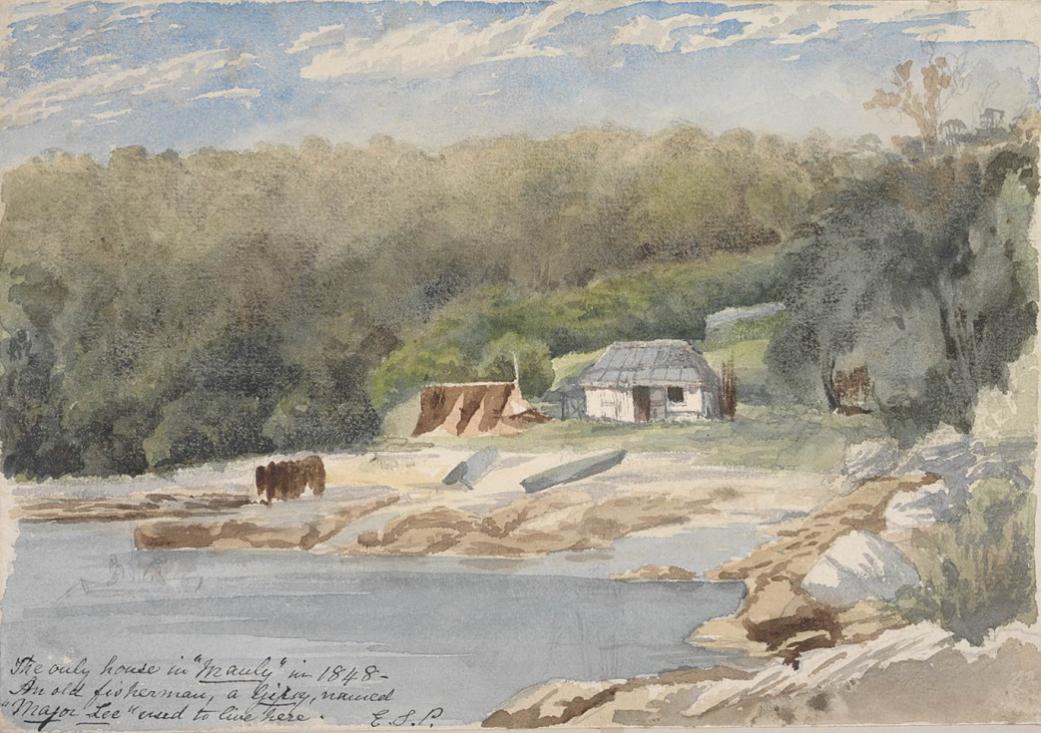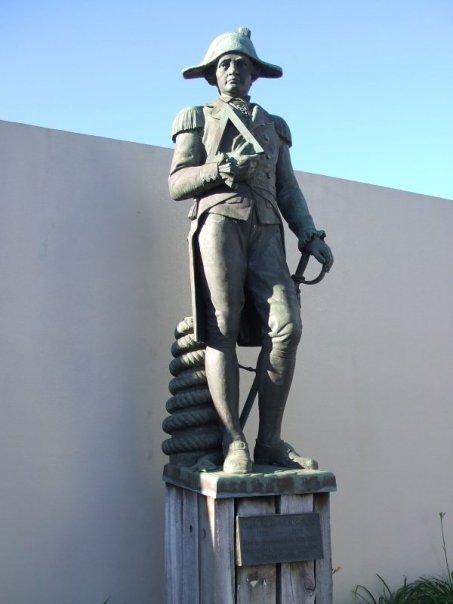May 26 - June 1, 2019: Issue 406
Were Manly's Statues, Sculpted By Achille Simonetti, Smashed For Road Ballast,?
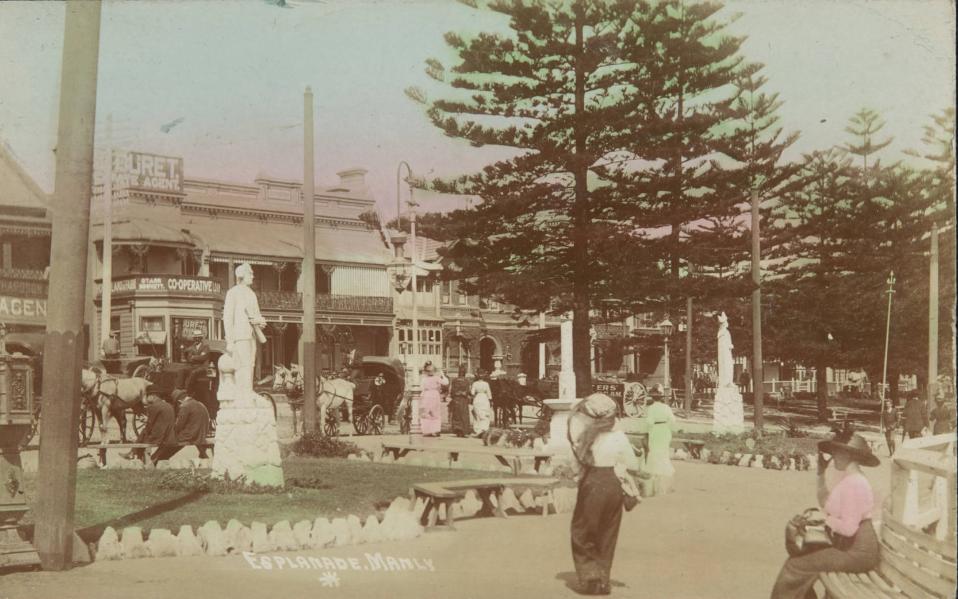
The Esplanade, Manly, postcard from Josef Lebovic Gallery collection no. 1, courtesy National Museum of Australia.
The phrase 'Beauty is in the eye of the beholder' never rang truer than in a little incident that happened in Manly just over one hundred years ago. The following little insight may illustrate how vital the Moveable Heritage Management Policy on the Agenda for the next council meeting is and make us all a little more appreciative of what we still have and wonder about what else we have lost.
The incident is also cause for wondering about the provenance of what was lost, particularly as some state these works came from the hands of an Artist whose works are still in demand, rarely change hands, and when they do, fetch tidy sums paid by collectors.
The sculptor, stated by seven times Mayor of Manly James Bonner, a gentleman known for his integrity, was said to be Achille Simonetti - an Artist both praised and criticised for his works during his lifetime.
One 2017 sale saw a small work of his, just 30 centimetres in height, attract the equivalent of over 45 thousand Australian dollars at a Sotheby's sale. The work, called 'Playmates' originally was found half buried beneath a house on piles by Graeme Kerr when he lived in Victoria and then took it to the U.K. where it was first placed on the market in 2013.
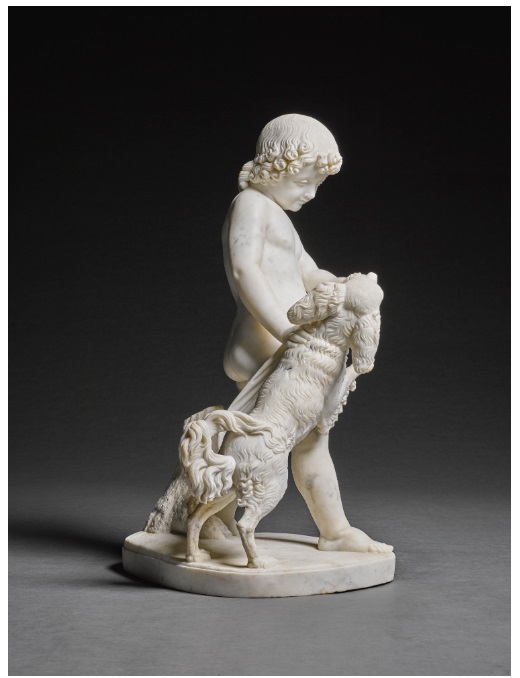
'Playmates' by Simonetti - sold for $45.000 AUS in 2017 by Sotheby's
This is not the only statuary found half buried in recent years that may be the work of Simonetti. The Australian Biographical Dictionary and Historians of the Springwood District not that 'It is likely that Simonetti was responsible for the statues that once graced Michael Nason Chapman's garden at Faulconbridge. These were discovered in recent years by the owners of Phoenix Lodge.'
In 1871 a young Italian Artisan,Sculptor Achille Simonetti, came to Australia to fulfil a commission in Brisbane. After working there for a few years he settled in Sydney where his work was so well received he won prizes and huge and small commissions. In fact he worked so hard a definitive list of all his works is not available.
Among those works millions of eyes must have seen that are still intact are the six allegorical figures for the niches on the building of the Colonial Secretary's Department fronting Macquarie, Bridge and Phillip streets and the elaborate fountain monument to Governor Phillip in the Botanic Gardens.
Simonetti married a local girl, had two children, a girl who died nine weeks after she came into the world,m and then a son born at the end of that same year. He had a home and big studio at Snails Bay in Balmain, which his wife was still living in when she passed away.
The other part of this tale involves the house named 'Fairlight' in Manly where the statues were once said to have graced the gardens. The house 'Fairlight' was originally built by Henry Gilbert Smith, whom many call the 'father of Manly', and offered for sale in January 1859, described as:
The romantically situated Marine Estate, FAIRLIGHT, Brighton, Manly, North Harbour, the residence of HENRY GILBERT SMITH, Esq., will be offered to public competition, by R, P. RICHARDSON, on the day of sale of the Manly allotments, MONDAY, ,10th January, at 12 o'clock precisely, at tho Rooms, Bank buildings, George-street, corner of Jamison-street.
This COMPACT MARINE PROPERTY consists of two handsome cottages, containing severally six rooms, kitchen, and servant's room ; and four rooms, kitchen, and servant's room.
The GROUNDS consist of a beautifully wooded domain of 37 ACRES, partly surrounded by a wire fence, cleared and dotted hero and there with clumps of choice Indigenous trees and shrubs, giving it quite a PARK-LIKE APPEARANCE. - The water frontage is nearly half a mile in extent, taking in part of North Harbour. There are also a well-stocked garden, and a neat cottage, well adapted for a lodge entrance.
The SITE has been selected with great judgment. Tire position is naturally sheltered, while, at the same time, it commands from all parts an EXTENSIVE and MAGNIFICENT VIEW of the HARBOUR and OCEAN, and every SAIL entering the port can be seen distinctly many miles outside.
The distance from the North Shore is about five miles, and the Manly Pier, from -which steamers run regularly to Sydney four times daily, Is but a few minutes' walk distant.
FAIRLIGHT forms, as a whole, one of the most RECHERCHE MARINE RETREATS that can be found in the southern hemisphere, and the proprietor is only induced to offer it in consequence of his intention to erect a residence in another direction on the estate ; and ....CAPITALISTS and WEALTHY CITIZENS will not neglect this opportunity of securing an estate combining SO many peculiar advantages,...of BOATING, FISHING, and other ACQUATIC SPORTS. It may be remarked that in a very few years, there cannot be a doubt swift steamers will be plying constantly to and from the beautiful watering-place of Brighton, and accomplish the trip in less than half an hour.
CARDS to view may be obtained on application at the Sale Rooms, George-street. TERMS: One-half-cash ; the residue in 20 years with per cent, interest added. Advertising (1859, January 10). The Sydney Morning Herald (NSW : 1842 - 1954), p. 7. Retrieved from http://nla.gov.au/nla.news-article13017205
The name 'Fairlight' stems from the name of the village where Mr. Smith's first wife, Eleanor Whistler came from near Hastings, Sussex, on England's south coast. They had married in January 1939 and she passed away in October. He married his second wife in 1856:
MARRIED
At St. John's Church, Brisbane, on Nov. 4th, by the Rev. E. K. Yeatman, Henry Gilbert Smith, Esq., M.L.C. Fairlight, Sydney, to Anne Margaret, second daughter, of the late Rev. John Thomas, Brockhill, Worcestershire. Family Notices (1856, November 8). The Moreton Bay Courier (Brisbane, Qld. : 1846 - 1861), p. 3. Retrieved from http://nla.gov.au/nla.news-article3708912
WANTED, a respectable Woman as Cook and Laundress in a small family. Also a Housemaid. Apply to Mrs. SMITH. Fairlight, Manly. A Steamer leaves the Phoenix, Wharf, Sydney, daily at 10 a.m., and 2 p.m., returning the same day.
STONEMASONS.-No offer having been accepted for carrying up part of the walls of the Sydney University, fresh tenders are required. Plans and specification to be seen on application to Mr. EDMUND T. BLACKET, Mort's Buildings, Pitt-street, to whom tenders nre to be addressed on or before Wednesday, the 17th Instant. EDMUND T. BLACKET. Advertising (1856, December 12). Empire (Sydney, NSW : 1850 - 1875), p. 1. Retrieved from http://nla.gov.au/nla.news-article64981244
During 1859–60 Mr. Smith did build another house, a mansion also named 'Fairlight House'. Designed by renowned Architect Edmund Blacket, it was built of stone, two storeys high and five windows wide with an encircling ground floor verandah.
On the 14th instant, at Fairlight, Manly, the wife of Henry G. Smith, Esq., of a daughter, stillborn. Family Notices (1860, March 16). The Sydney Morning Herald (NSW : 1842 - 1954), p. 1. Retrieved from http://nla.gov.au/nla.news-article13037855
WANTED, an English PERSON as HOUSE and PARLOUR-MAID, who can give satisfactory references. Apply This Day, and on Friday afternoon, to Mrs. H. G. SMITH, Fairlight, Manly. Advertising (1860, May 16). The Sydney Morning Herald (NSW : 1842 - 1954), p. 1. Retrieved from http://nla.gov.au/nla.news-article13040667
His second wife Anne died at Fairlight House on April 7th 1866 and Smith's effects, household furniture, paintings etc. were offered for sale in June 1867. He returned to England, taking his three sons, Henry Stinton, Gilbert Flesher and Eustace Alfred. The house was advertised as 'for sale or to let':
On the 7th instant, at Fairlight, Manly, of consumption, ANN MARGARET, wife of HENRY GILBERT SMTIH, Esq., aged 44. Family Notices (1866, April 9). The Sydney Morning Herald (NSW : 1842 - 1954), p. 1. Retrieved from http://nla.gov.au/nla.news-article13129208
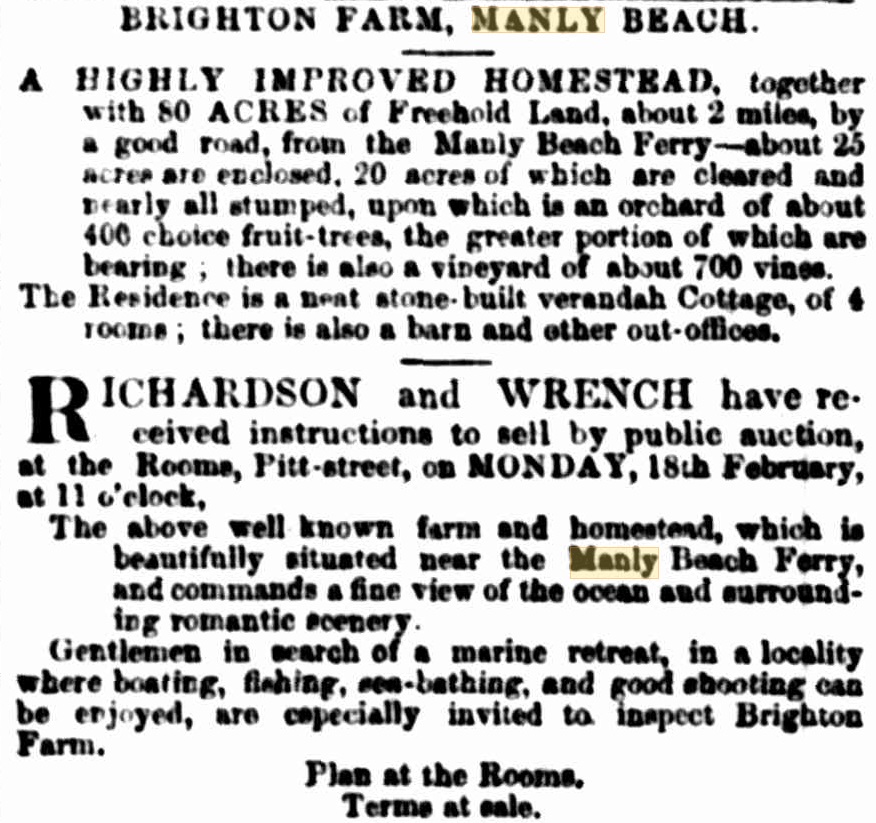
Advertising (1867, February 2). The Sydney Morning Herald (NSW : 1842 - 1954), p. 8. Retrieved from http://nla.gov.au/nla.news-article13142600
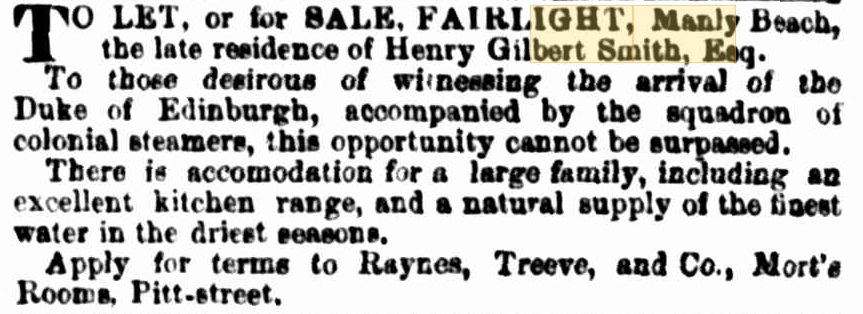
Advertising (1867, August 31). The Sydney Morning Herald (NSW : 1842 - 1954), p. 12. Retrieved from http://nla.gov.au/nla.news-article13158422
The house was rented out, until he sold it and its extensive grounds in 1880 for £3000.00 to John Woods, Mayor of Sydney in 1865 and founder of Woods, Shortland & Co. Mr. Woods added a distinctive tower and porch in the early 1880s.
WOODS—STUBBS.—March 21, at St. Paul's Church, Canterbury, by the Rev. Janes Carter, LL.D., Robert, eldest son of John Woods, Esq., of "Fairlight," Manly Beach, to Maud Filz, third daughter of Robert Fitz Stubbs, Esq., of " Lynwood," Glebe Point. Family Notices (1880, April 3). Australian Town and Country Journal (Sydney, NSW : 1870 - 1907), p. 42. Retrieved from http://nla.gov.au/nla.news-article70942542
In 1903 Mr. Woods placed 'Fairlight' on the market, described as:
MANLY.
Possessing one of the FINEST OUTLOOKS to be obtained In Port Jackson, and with VIEWS of NORTH HARBOUR, THE HEADS, and the PACIFIC OCEAN. That well-known COMMODIOUS FAMILY MANSION, FAIRLIGHT,
For many years owned and occupied by JOHN WOODS, Esq,.
THE HOUSE ITSELF is a two-story building of Solid Stone (2ft. thick), slate roof, with imposing stone porch, wide hall, and contains on the ground floor drawing-room, exceptionally largo dining-room, music-room, library, 2 smaller rooms, and detached from the main building, and approached by a covered-in way and surrounded by ferneries is a BALLROOM. On the first flour are 7 bedrooms, dressing-room, 2 bathrooms, and approaching from the landing is a tower containing 3 rooms and look-out, the view from which CANNOT BE SURPASSED.
The DOMESTIC OFFICES, comprising 3 Servants' Bed Rooms, Kitchen, Laundry, 2 Cellars, large Servants' Hall, are in keeping with the House. Also of stone are STABLES, consisting of 2 stalls, Coachhouse and Dairy.
THE GROUNDS. COMPRISING AN AREA OF ABOUT 1 ½ ACRE, and with a Main Entrance from LAUDERDALE-AVENUE, have been laid out WITH EVERY REGARD TO THE BEAUTY OF THE SITUATION, and consist of Flower and Vegetable Gardens, Bush houses, Shrubs, fir. TORRENS TITLE.
THIS THOROUGHLY FINISHED AND ATTRACTIVE FAMILY RESIDENCE will be sold at- PUBLIC AUCTION
in the Rooms, on Pitt-street, on THURSDAY, 5th FEBRUARY, 1903, at 11.30 a.m. RAINE AND HORN IN CONJUNCTION WITH H T ROBEY. AUCTIONEERS. Advertising (1903, January 28). The Sydney Morning Herald (NSW : 1842 - 1954), p. 11. Retrieved from http://nla.gov.au/nla.news-article14488005
James Bonner, Iron-founder and owner of works at Ultimo and Glebe, seven times Mayor of Manly and one of the founders of the Manly LSC, bought the home.
In 1900 Achille Simonetti passed died of heat disease at his Snails Bay, Balmain home - so his being able to say 'their mine' could not have occurred during the years the fracas that led to the destruction of these pieces took place.
Death of Signor Simonetti
Signor Achille Simonetti, the well-known sculptor, died at his residence and studio, 'Rose-street, Birchgrove Park, Balmain, on March 23; after an illness of over two weeks,- the cause - of death being heart disease and ' asthma. Achille Simonetti was born at Rome in 1833, his father, Louis, being a well-known sculptor in that city.
The deceased received his education at the Jesuit College at Rome, and then worked with his father till 1874, when he went to Brisbane with the late Bishop Quinn, a statue of whom Simonetti subsequently made. He (Simonetti) afterwards came to Sydney, and .worked for a time at St. John's College. He then settled at Balmain.
His principal work is the statue of Governor Phillip in the Botanical Gardens. When taken ill Simonetti was engaged on a clay model for a statue of Mr. Byrnes, the late Queensland Premier, and, also had in hand a contract for a memorial tablet to be erected in the Sydney Town Hall, of the late Sergeant-Major Griffin, who was killed recently in South Africa. The deceased sculptor leaves a widow and two children. The funeral took place on Sunday, the remains being Interred in the Leichhardt Cemetery.
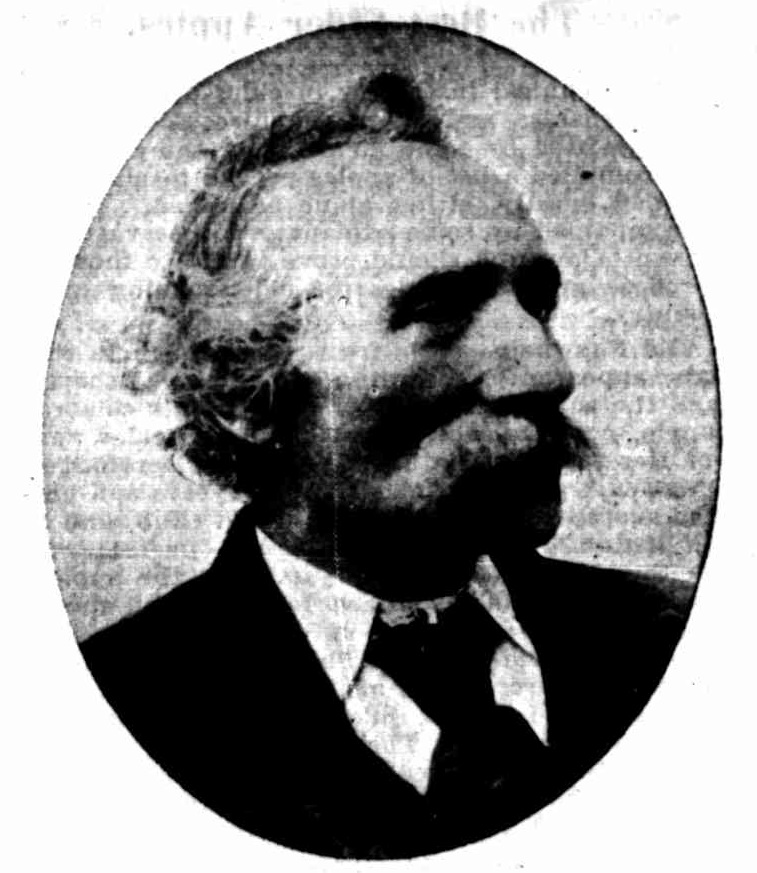
Death of Signor Simonetti. (1900, March 31). Australian Town and Country Journal (Sydney, NSW : 1870 - 1907), p. 27. Retrieved from http://nla.gov.au/nla.news-article71378510
His Estate on passing was quite small, necessitating a sale of works after his death:
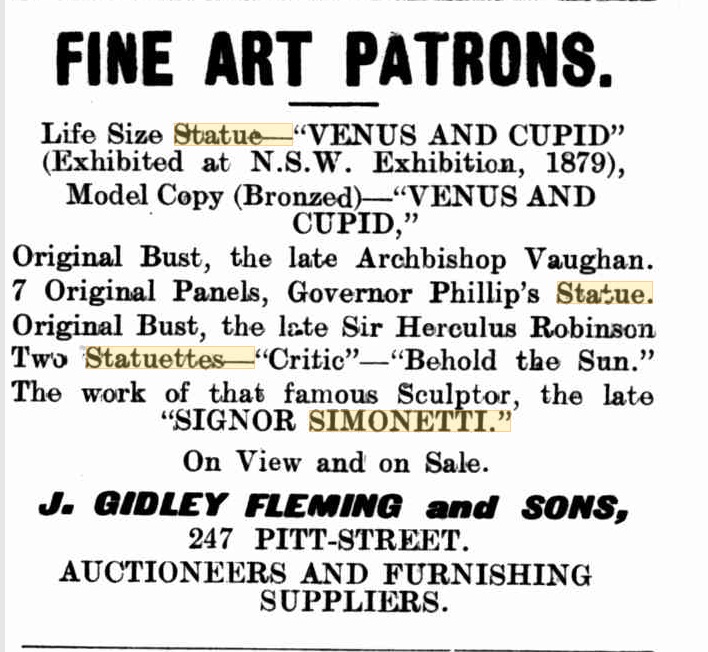
Advertising (1901, November 16). Freeman's Journal (Sydney, NSW : 1850 - 1932), p. 23. Retrieved from http://nla.gov.au/nla.news-article111083997
STATUES FOR MANLY.
At the last meeting of Manly Council the Mayor (Alderman Bonner) presented to the borough six statues. The gift includes one each of Captain Cook and Nelson, and one each of the four seasons. The aldermen applauded the Mayor for his generosity, and recorded a vote of thanks on the minutes. A committee was appointed to select suitable positions for the statues. STATUES FOR MANLY. (1910, August 8). Evening News (Sydney, NSW : 1869 - 1931), p. 6. Retrieved from http://nla.gov.au/nla.news-article115261260
Too Much Salt Without Taste.
The residents of Manly appear to be devoted too much to salt and enjoyment. Salt is said to be emblematical of wisdom', but some residents have displayed none at all, by objecting to the erection of statues in public places.
Recently the Mayor of Manly (Ald. James Bonner) found that in changing his residence at Fairlight, North Harbour, he would be compelled to part with several stone statues, representing 'The Four Seasons,' monuments of 'Captain Cook' and 'Nelson.' Not desiring to see them in the hands of strangers, the Mayor offered his collection to the Manly Council, in the hope that they would be safeguarded.
The aldermen viewed the offer in a favourable light, and appointed a committee to arrange for erecting the 'Seasons/'' and. the 'Admirals' in a suitable spot. The main thoroughfare, the Corso, was chosen as a suitable resting place for '-'Spring,' 'Summer,' 'Autumn,' and Winter' and the heroes of the sea found a resting place on the main harbour beach, in the esplanade overlooking Manly Cove.
Residents are now up in arms over the alleged spoliation of the street and the reserve, and complaints are being made at the funereal aspect given to Manly by the erection of these statues. Petitions are being largely signed as a protest, and may possibly be followed by indignation meetings.
Some time ago a monumental drinking fountain was erected near the Manly wharf in honour of the late South African warriors who volunteered their services from Manly. It took the form of a broken column, and efforts were made shortly afterwards to have it removed to a more secluded spot, but without avail. The local council has now chosen this spot for erecting the models of 'Captain Cook' and 'Lord Nelson,' one on each side of the memorial monument.
Manly, is certainly not altogether devoted to hero-worship, and probably does not believe in the well-known and oft-quoted lines— . 'The lives of great men oft remind us
We make our own sublime.' .
NOMADIC NOTES. (1910, September 8). Freeman's Journal (Sydney, NSW : 1850 - 1932), p. 34. Retrieved from http://nla.gov.au/nla.news-article108170925
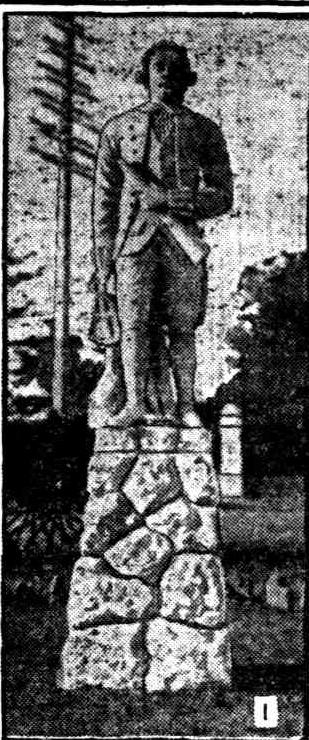
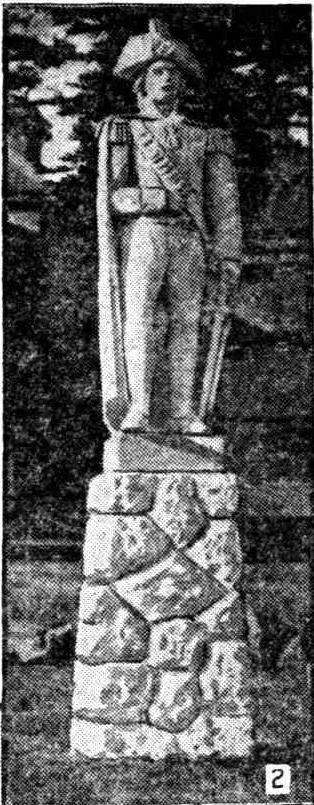
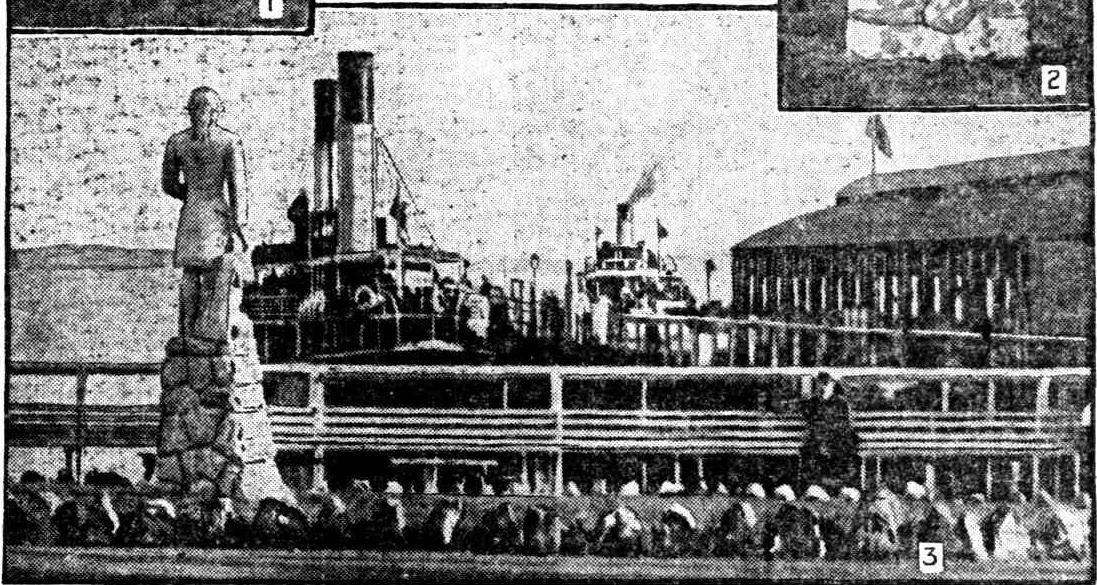
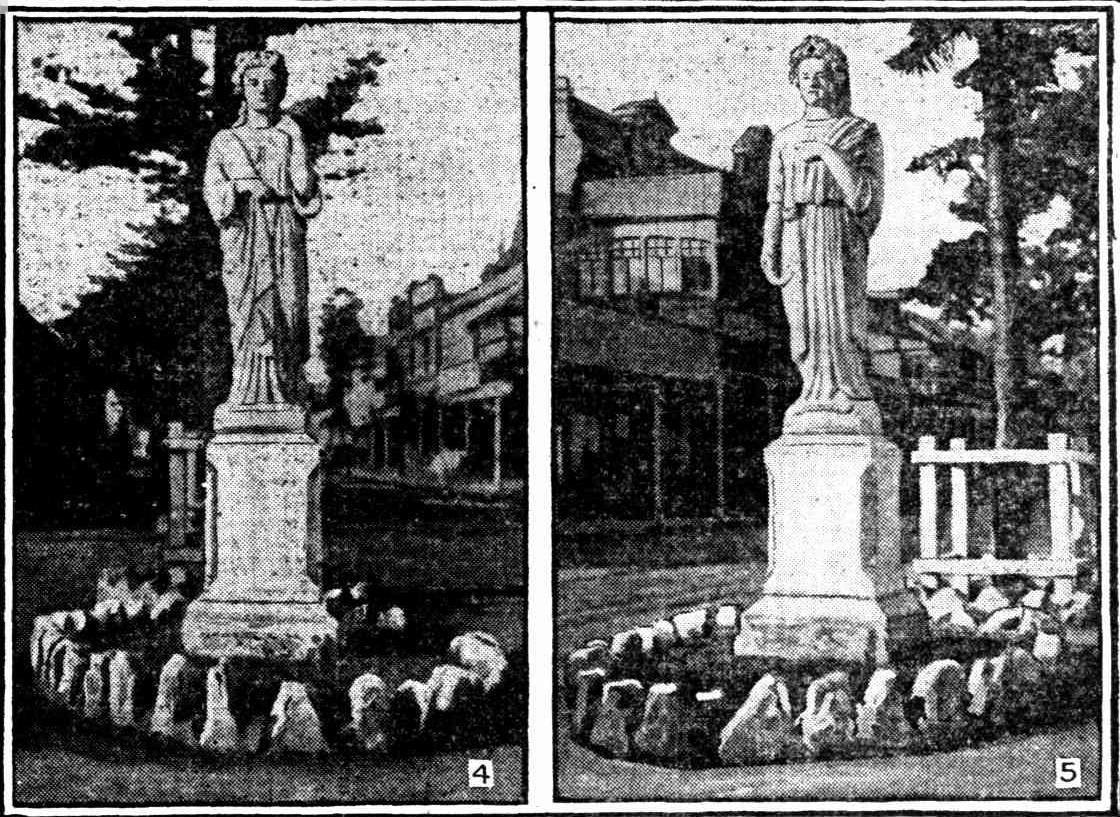
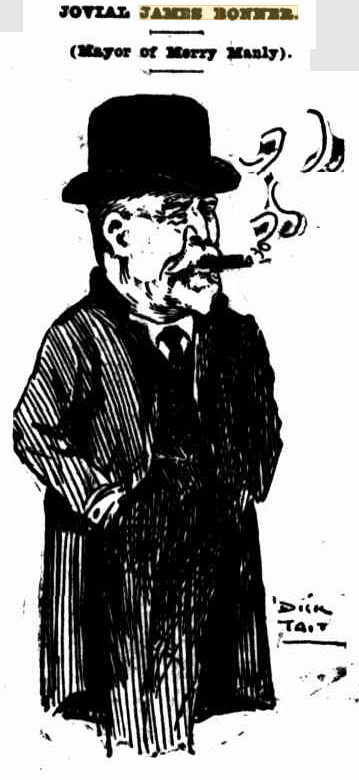
The deceased bequeaths his household furniture, pictures, plate. &c., to his wife during her widowhood,
Both Woods and Bonner were involved in other early 'Arts' ventures at Manly as well:
SCHOOLS OF ART.
MANLY.
At the annual meeting of the Manly School of Arts, Dr. Thomas presiding, the report showed the financial position of the institution to be improving. The surplus of assets over liabilities, after allowing for depreciation, was £234.
Lack of room prevented the formation of many classes, and the new committee will, the secretary's report states, have to take measures to secure their own premises. The sum of £100, which had been held in trust by the late Mr. John Woods, for 30 years, towards the building of a new School of Arts, was handed over to the institution. Officers for the ensuing year were elected as follows: — Patrons, Mr. Dugald Thomson, M.H.R., Dr. Arthur, M.L.A. ; president, Dr. Thomas; vice-presidents, Drs, Harvey and Hall, Messrs. F. W. Mansell, T. P. Wright, and W. II. Harman; trustees, Messrs. W. J. Douglass, A. W. Wearn, and E. Badmington; hon. treasurer, Mr. A. Learmonth; hon. secretary, Mr. F. T. Smith; committee, Messrs. Fuller, Maybury, Millett, Hosking, Mack, Adam, Ogilby, Lewis, Hind, Carroll, Stevens; auditors, Messrs, Wedderburn and Peterkin. SCHOOLS OF ART. (1905, February 10). The Daily Telegraph (Sydney, NSW : 1883 - 1930), p. 3. Retrieved from http://nla.gov.au/nla.news-article236909301
LORD CHELMSFORD-AT MANLY.
The ceremony of laying the foundation stone of the new School of Arts was performed by Lord Chelmsford at Manly yesterday afternoon in the presence of a large crowd. His Excellency was accompanied by Lady Chelmsford and private secretary (Captain' Miller). Included among those. at the: ceremony were: Mr. James Hogue (Minister for Public Instruction), Mr '"Dugald ''Thomson M.P'., Dr. Nash, M.L.C., Mr. James Bonner (Mayor of Manly), Mr. D. Hogan (town clerk), Aldermen .T. :J. Dargan,. Mulligan, Ogilvy, Patterson, Russell; Heaton, and Walker, Drs. Thomas and Harvey. A guard of honor from the Australian Rifle Regiment and Boys' Scouts' was formed at the wharf to greet the Governor on arrival.
The Mayor of Manly (Alderman J. Bonner) welcomed the vice-regal party on behalf of the aldermen and citizens, and the town clerk read the illuminated address, which was formally presented to Lord Chelmsford. An adjournment was then made to the public' school, where his Excellency addressed a few remarks to the children, followed by the Minister for Public Instructions The children rendered patriotic verses to the accompaniment of the Manly Brass Band. Dr. Harvey presented Lord Chelmsford with a silver trowel and mallet, and after the usual ceremony declared the stone laid for the new building.
During the course of his remarks his Excellency referred to the good work accomplished by the various educational establishments throughout the State, and congratulated the committee and citizens on the good work they were performing. "This school was going to be a centre of life in Manly. He admired the person who had a hobby. It was a sure sign that that man would never have a dull moment. You all know, or have heard, of the great scientist, Professor David. (Cheers.) No one could say that Professor David had a dull moment in his life. But we cannot all be professors, and our next best course is to avail ourselves of the advantages within our reach. There is a social side in every person's life, and when we see the family circle comparing the doings of the day's work, it was safe to say that it augured well for the social advancement of that family. If we have something to interest us in ourselves we shall never have a dull moment. In this building you will hear educational lectures, and general knowledge that will prove of the greatest value to your future advancement. This school will be a great and lasting benefit to the interests of Manly." LORD CHELMSFORD AT MANLY. (1909, June 20). The Sunday Sun (Sydney, NSW : 1903 - 1910), p. 1. Retrieved from http://nla.gov.au/nla.news-article227022418
This vitriol is funny as it also mentions another Simonetti work and how that too was criticised:
Public Statuary.
Ballarat's Lesson to Manly.
SYDNEY is not nearly so well off in the matter of public statuary as might reasonably be expected of a city of its importance and pretensions. Its peerless situation, with innumerable points of prominence within the city and about the shores of its sunlit waters, gives it an immense advantage over most of the great centres of the world for the display of beautiful examples of the sculptor's art Yet what do we find? If all the statues in and around the city — from the amusing figures in the niches of the Lands Office and the altogether wonderful sculptures that adorn the General Post Office, to the truly admirable statues of Governor —were assembled together, Bourke and Robert Burns quite an imposing collection would be presented. But of the whole how few, alas, would be regarded with feelings of pride and admiration by the artistic section of the community! Prominent in the display would be those remarkable creations which dot the beautiful Centennial Park — a miscellaneous assortment purchased by the Parkes Government from a monumental mason's workshop for something like £2000. And distinguished for their absurdity, even in a group in which the quality of mediocrity would be generally noticeable by anyone possessing the faintest artistic taste, would be the far-famed Manly statues.
Two of these we here reproduce, and, for the purpose of contrast, and to show what real sculptural art is in comparison with the poor imitation provided by these Manly figures, we add a couple of beautiful pieces of statuary which are among the principal attractions of the Botanical Gardens in Ballarat.
The exquisite figure-study 'Susannah' cost £4000, and the superb group representing the flight of a family from Pompeii cost £7000. Both were executed in Rome, and were presented to the city by the late Mr. James Russell Thomson, one of Ballarat's pioneers.
Cost, of course, is not always evidence of high artistic value. The Governor Phillip statue in our own Botanical Gardens, for instance, might be quoted in support of that fact. This massive group cost about £15,000; yet it is generally regarded as a colossal failure.
Statues that are inartistic are of no use educationally or aesthetically, and we would be much better without them, for, placed in conspicuous positions where they are continually in the public eye, they tend to encourage a false appreciation of art. That is one of the reasons why it is to be deplored that the Manly Corso and Esplanade have been disfigured by the erection of those weird figures which the local council apparently esteems as thoroughly artistic and in keeping with its progressive scheme for the beautifying of the popular watering-place. A stranger leaving the ferry boat naturally wonders whether he has strayed into a burial ground, and as he proceeds to examine the unique, figure of Captain Cook and the representations of the Seasons, he probably comes to the conclusion that the council has hit upon the scheme of raising revenue by permitting some monumental mason to display samples of his productions at so much per square foot.
These 'statues' were presented by the Mayor of Manly, Alderman Bonner, a citizen of the right type, whose public work over a period of some years is very generally appreciated. The spirit which prompted the gift cannot be too highly praised. Public benefactors in New South Wales are all too few; and when one steps out of the ranks and exhibits a desire to benefit the community of which he is a member, the offer should be given the fullest consideration; but it should not necessarily be accepted.
The Mayor, we understand, defends the erection of the statues on the ground that, whatever may be their artistic limitations, they are entirely local productions — created by local workmen from local stone. It must surely, however, be patent to everybody that, if that argument were once admitted as sound, we should have to put up with all sorts of monstrosities parading as works of art, and it needs no unusually vivid imagination to enable us to realise what the condition of affairs would be under such circumstances.
The Manly Council would be well advised to remove the offending figures, and the Mayor would place the public under still greater obligations if he were to take the initiative in the matter. It is stated that on New Year's Eve the local police were on duty all night to guard the 'statues' from desecration at the hands of certain individuals who were believed to be contemplating the destruction of the I figures. May we say, not unkindly, that most people would have been heartily glad if, for once, the police had neglected their duty and gone to sleep.
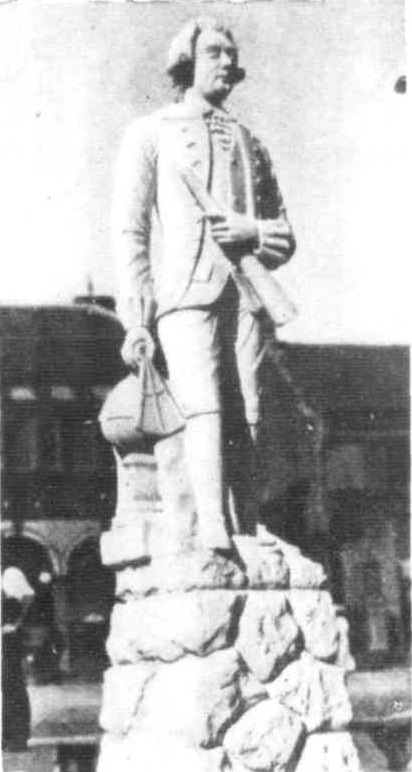
STATUE OF CAPTAIN COOK, MANLY.
STATUE IN BALLARAT BOTANICAL GARDENS.
.jpg?timestamp=1558828574606)
STATUE OF SPRING, MANLY.
STATUE IN BALLARAT BOTANICAL GARDENS.
PUBLIC STATUARY. (1911, January 4). The Sydney Mail and New South Wales Advertiser (NSW : 1871 - 1912), p. 32. Retrieved from http://nla.gov.au/nla.news-article164298066
The criticism went on for years until finally they were going to be removed and then in the months of delay someone ruined one:
MANLY’S STATUES.
To be Removed
A couple of years ago, when the Mayor of Manly (Alderman James' Bonner) sold his residence, "Fairlight," he presented, the statues standing in the grounds to the municipality." The figures are of local sandstone, carved by a sculptor named Simonetti. The gift was accepted by the council with thanks, and a sub-committee was appointed to allot sites for their re-erection in the borough. That sub-committee failed to meet, and four of the statues, representing the seasons, were erected on the Corso, while those of Captain Cook and Nelson were placed in positions fronting the Manly Wharf.
Since their erection, however, much controversy has been going on regarding Mr. Bonner's generous, gift, and considerable adverse criticism has been levelled; against the artistic qualities of the statues. The good intentions of the donor were never questioned, but it was held that the statues were not sufficiently artistic to occupy a place on Manly's main thoroughfare. The difficulty has now been solved. The ; Mayor has announced that the much-abused figures on the Corso will be removed at an early date. MANLY'S STATUES. (1913, February 16). The Sun (Sydney, NSW : 1910 - 1954), p. 24. Retrieved from http://nla.gov.au/nla.news-article228697330
Manly’s statues.
CORSO FIGURES REMOVED.
The much-debated statues on the Corso at Manly have disappeared for ever. On Tuesday night some unknown individuals demolished the effigy of "Spring." Yesterday the council authorities removed the others, representing "Summer." "Autumn," and "Winter," and the Corso Is now, to Its advantage, innocent of art. MANLY'S STATUES. (1913, June 20). The Sun (Sydney, NSW : 1910 - 1954), p. 9 (FINAL EXTRA). Retrieved from http://nla.gov.au/nla.news-article229846842
Which didn't some council from accepting more art:
MORE STATUES FOR MANLY
At last night's meeting of the Manly Council a letter from Mrs. Alfred Bennett, of Mosman, offered as a gift to the municipality of Manly the two porcelain lions that have adorned her Into residence, Restormel, Belgrave-street, Manly, for many years. The offer was accepted. MORE STATUES FOR MANLY (1916, June 28). The Sun (Sydney, NSW : 1910 - 1954), p. 5 (FINAL RACING). Retrieved from http://nla.gov.au/nla.news-article221361991
And then the great mystery over where the four seasons statues went began, as well as more calls to get rid of the other two:
Sentenced to Death
LAST OF MANLY STATUES
For years a set of statues, truly representations of savage art, blotted the landscape on the Manly Corso. They offended the eye until the Corso beautification scheme was put into operation. In the process Spring, Summer, Autumn, and Winter disappeared. Now the remaining two, supposed to portray Captain Cook and another celebrity, are to go. At last night's meeting of the Manly Council the Mayor, Alderman Keirle, in a minute, suggested that they should be removed, and without one regret that minute was adopted. This will be bad news for the ribald youths who in the dead of night made a practice of placing extra wearing apparel on the person of The Inoffensive Cook. In future they will have to dispose of their discarded and battered hats and dirty collars in another way.SENTENCED TO DEATH (1917, February 7). The Sun (Sydney, NSW : 1910 - 1954), p. 6. Retrieved from http://nla.gov.au/nla.news-article221965674
GROTESQUE STATUES AT MANLY.
TO THE EDITOR
Sir — As it does not seem to have occurred to anyone else to do so, may I beg the favor of a little space to point out the regrettable fact that Sydney permits, and has permitted for several years, one of Its pleasantest suburbs to perpetrate an insult to the Royal Navy, the grotesqueness’ of which is the only thing that mitigates Its bitterness. On the Esplanade at Manly, a little to the right of the wharf as one lands, and close beside a drinking fountain erected In memory of men who died In the South African war, stand two Indescribable caricatures In statuary of Lord Nelson and Captain Cook, which look as If they might have been carved in Callan Park by some maniacal tombstone maker. It Is only necessary to view these works of mental aberration to become possessed with doubt as to the collective sanity of the municipal council which permits thorn to remain where they are. Just now, when the Navy is strenuously engaged in preserving the Empire, and In view of the fact that, had It not been for the Navy, Sydney might have been shelled by the ships of the late Admiral von Spee, Is It too much to suggest to Sydney that these horrible effigies of the Great Admiral and the Great Navigator should be taken down and burled or broken up? They are certainly amusing, but the spirit of the Royal Navy, as represented by the memories of those two famous sailors, is now less than any time a subject for mirth.— Yours, etc.. J. H. M. Abbott. GROTESQUE STATUES AT MANLY. (1917, March 26). The Daily Telegraph (Sydney, NSW : 1883 - 1930), p. 6. Retrieved from http://nla.gov.au/nla.news-article239222567
What became of the four statues representing the four seasons? – they were smashed up for road ballast – as this, and other newspapers reported:
ARTISTIC MANLY
STATUES USED FOR BALLAST CAPTAIN COOK INDISPOSED
"Captain Cook looks as if he had the stomach-ache and needed medical attention, while Nelson, in some mysterious way, has both his eye and his arm back." In these terms Alderman Ogilvy referred last night at the Manly Council meeting to the statues which disfigure the harbor beach front. Following upon the recent minute of the Mayor, recommending their demolition, Alderman Quirk moved that they be removed. "They've been there long enough." Alderman Ogilvy, who seconded the motion, said that in a sense they would have regrets in removing the statues. A former Mayor, the late Mr. Bonner, had given them in the best spirit possible. Consequently they had been left there because of sentiment. Certainly they had neither artistic value nor beauty. Alderman Wright said that he would be sorry if they were destroyed. He suggested that they should be placed in the Town Hall grounds. The Mayor, Alderman Keirle, said that it would be far wiser if the matter were not discussed at all.
Alderman Reid: What are we going to do with them? It was not proposed to smash them to pieces and throw them on the dust heap, is it? What happened to Spring, Summer, Autumn, and Winter, who used to grace the Corso?"
The Engineer: We broke them up for ballast for the roads.
Alderman Reid: I know a man who said he would give a good price for them.
Alderman Railton: We can't sell a gift.
The Mayor: Mr. Bonner ordered the removal of those on the Corso himself. '
Alderman Ogilvy: Yes, that was after Mrs. Winter was insulted by someone.
Alderman Railton: I remember, and someone put a battered billycock on Summer.
It was finally agreed to remove the statues. What is to become of them was not made clear. ARTISTIC MANLY (1917, April 18). The Sun (Sydney, NSW : 1910 - 1954), p. 4 (FINAL RACING). Retrieved from http://nla.gov.au/nla.news-article221957991
A later report states the second statue is Garilbaldi. They didn't sell the remaining two then - and where did they put the remaining two - reappears 10 years later:
MANLY'S STATUES
HISTORIC RELICS UNEARTHED
A number of the celebrated statues that once graced the Corso, Manly, have been, for years lying among rubbish in the back yard of the Manly Town Hall.
This fact was made known at the council meeting last night, when an application to purchase Lord Nelson and Governor Phillip was made. Aldermen were in a quandary as to what they should accept for the historic relics. The Mayor (Ald. A. T. Keirle) preferred to leave it to the purchaser to make an offer. Council agreed to dispose of the art collection. MANLY'S STATUES (1927, July 20). The Sun (Sydney, NSW : 1910 - 1954), p. 17 (FINAL EXTRA). Retrieved from http://nla.gov.au/nla.news-article222494704
By the look of this photograph from the same week the remaining two had already been broken as well, so if they were disposed of, where did they go?:
"Fallen Idols."
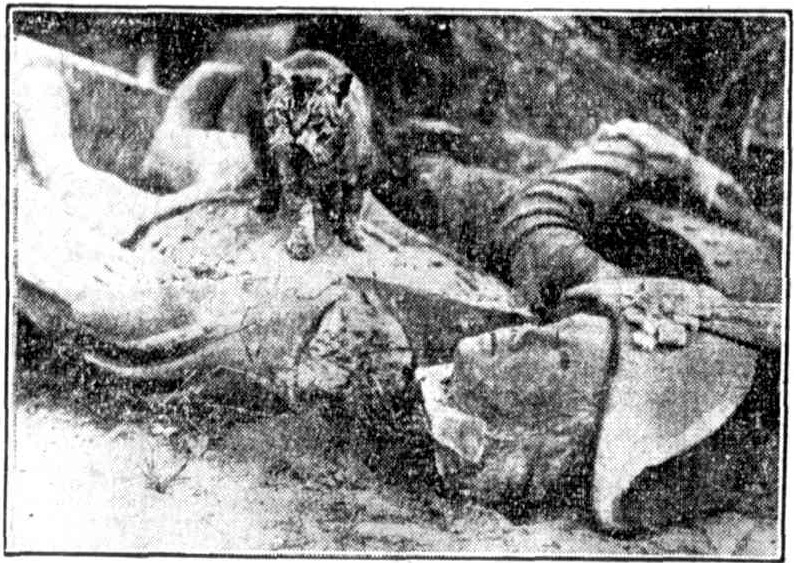
—Statues of Nelson and Garibaldi that once "graced" the Corso, Manly (N.S.W.), now in the municipal yard. The council cat has charge of them. No title (1927, July 28). Daily Standard (Brisbane, Qld. : 1912 - 1936), p. 10 (3 p.m. EDITION). Retrieved from http://nla.gov.au/nla.news-article184905739
Establishing provenance must rely upon the good word of two good men perhaps and an examination of the works themselves. Simonetti was known for his exquisite faces, article after article marvels at his works as they appear and those in sandstone are still remarkably intact compared to those made from 'soft' Manly sandstone as stated above:
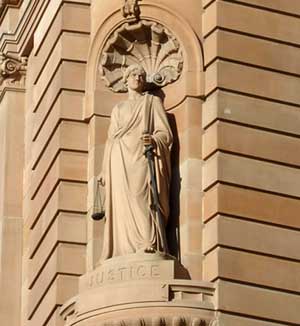 The STATUE or Justice designed and executed by Signor Simonetti was on Saturday at noon placed in its position, in the middle of three spaces at the corner of the new public offices immediately opposite Government House gate. From time to time we have informed our readers of the progress of the sculpture, and its present appearance justifies fully all the favourable comments that have been bestowed upon it. Signor Simonetti has been eminently successful in his work, and he is to be congratulated heartily on the result. The statue looks even better in its position than it did in the studio. There is an air of dignity and yet of mildness combined in the face, the attitude is majestic, and the drapery is finely arranged, so as to show the figure to the greatest advantage. In a word, the statue is a great triumph, and proves that there is no necessity to go out of Sydney for excellent artistic workmanship. The other two statues at the northeastern corner of the building will, we believe, be those of Wisdom and Mercy, the designs for which Signor Simonetti has now on hand. On Saturday there was much interest shown in the lifting the figure into its place. Mr. Macredie directed the work, and it was so capitally done that not a single change of position was necessary. The statue reached its pedestal, was lowered, and stood there as firmly as if it had been carved out of the original stone of the building. Those engaged in the duty deserve every credit for their forethought and care. AT THE POLICE-OFFICE, YASS, On Wednesday, 18th December. (1878, November 16). The Goulburn Herald and Chronicle(NSW : 1864 - 1881), p. 2. Retrieved from http://nla.gov.au/nla.news-article100879640
The STATUE or Justice designed and executed by Signor Simonetti was on Saturday at noon placed in its position, in the middle of three spaces at the corner of the new public offices immediately opposite Government House gate. From time to time we have informed our readers of the progress of the sculpture, and its present appearance justifies fully all the favourable comments that have been bestowed upon it. Signor Simonetti has been eminently successful in his work, and he is to be congratulated heartily on the result. The statue looks even better in its position than it did in the studio. There is an air of dignity and yet of mildness combined in the face, the attitude is majestic, and the drapery is finely arranged, so as to show the figure to the greatest advantage. In a word, the statue is a great triumph, and proves that there is no necessity to go out of Sydney for excellent artistic workmanship. The other two statues at the northeastern corner of the building will, we believe, be those of Wisdom and Mercy, the designs for which Signor Simonetti has now on hand. On Saturday there was much interest shown in the lifting the figure into its place. Mr. Macredie directed the work, and it was so capitally done that not a single change of position was necessary. The statue reached its pedestal, was lowered, and stood there as firmly as if it had been carved out of the original stone of the building. Those engaged in the duty deserve every credit for their forethought and care. AT THE POLICE-OFFICE, YASS, On Wednesday, 18th December. (1878, November 16). The Goulburn Herald and Chronicle(NSW : 1864 - 1881), p. 2. Retrieved from http://nla.gov.au/nla.news-article100879640
FINE ARTS.
Signor Simonetti has now completed his clay model of the third of the three sandstone statues he was commissioned to carve for the exterior decoration of the new public offices in Macquarie street. It is that of Minerva, Goddess of Wisdom, and will occupy a niche about ten feet from the ground. The daughter of Jove is shown standing in a graceful dignified pose, and wearing upon her passionless face the aspect of "self knowledge, self-reverence, self-control 'which attributes alone, we are told by the poet, "lead life to sovereign power ' Her parted locks fall from beneath a helmet and, clustering on each side of her low broad forehead, flow to her shoulders. Her left hand holds a shield with the right she leans slightly upon a tall spear, while on her breastplate is fixed Medusas horrible face with its living snake tresses. But though she is thus armed, it is for defence rather than for attic!, and the peace of the colonies is indicated by an olive spray entwined round her spear. She wears a tunic, caught at the waist and a long cloak, which falls in massive folds from the shoulders, is caught over the right arm, looped over the knees and again caught by the hand resting on the shield. The drapery is graceful and natural falling softly into the lines of the figure, and suggesting them in its folds and curves there is no rigidity about it, and its treatment and an arrangement are very artistic. The general expression of the figure, which is 7 feet 6 inches high is that of calm wisdom and serene security, and the placid beauty of the "grey-eyed goddess" is reproduced in a face which combines masculine strength with feminine loveliness FINE ARTS. (1880, June 8). The Sydney Morning Herald (NSW : 1842 - 1954), p. 8. Retrieved from http://nla.gov.au/nla.news-article13461690
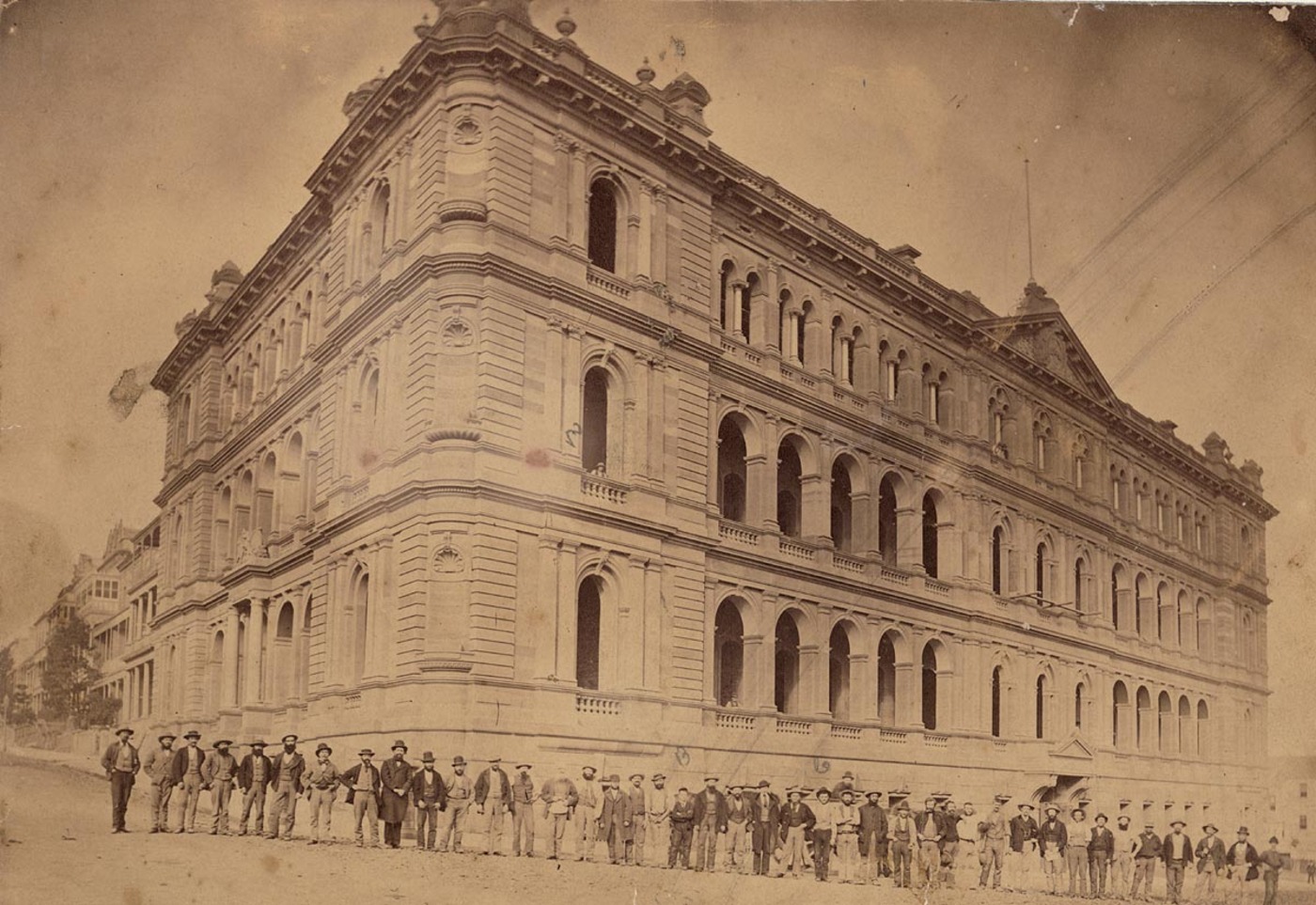
Colonial Secretary's Office, Sydney Image No.: a089247h - note the niches are empty, courtesy State Library of New South Wales
.jpg?timestamp=1558831365849)
Colonial Secretary's Office, Sydney Image No.: a089248h -In this photograph, one statue is missing from the lower corner niche facing Macquarie Street, courtesy State Library of New South Wales
STATUES FOR THE COLONIAL SECRETARY'S OFFICE.
Signor Simonetti has completed the sixth and last statue for the Colonial Secretary's office, that ' of ' Art," and yesterday it was placed in its position on the stop storey niche by the well-known contractor— Mr. J. G. M'Leod. The statue Is very beautifully executed with graceful drapery, showing to perfection the contour of the figure. The left hand of the figure holds a palette, and in a the right there is a brush. The attitude of the figure denotes some fresh inspiration. It will be remembered that the group consist of Wisdom, Justice, Mercy,' Labour, Science and Art. The first three are on the building at the corner of Macquarie and Bridge streets, and the last three at Bridge and Phillip streets. The whole group reflects the highest credit on the sculptor, who has already caned a well-deserved reputation in our midst. STATUES FOR THE COLONIAL SECRETARY'S OFFICE. (1888, January 14). The Australian Star (Sydney, NSW : 1887 - 1909), p. 7 (SECOND EDITION). Retrieved from http://nla.gov.au/nla.news-article229742592
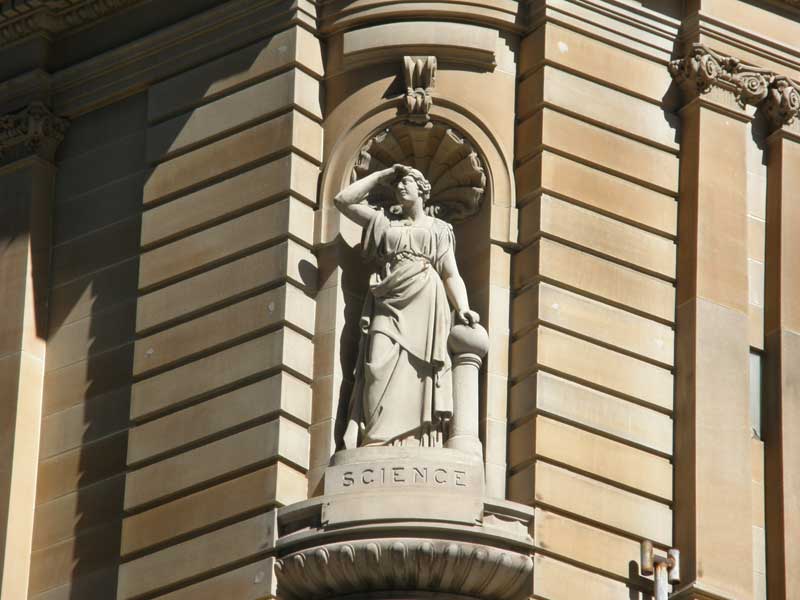
The Art Gallery.
In speaking of the various pieces of sculpture which appear in the Art Gallery, we turn first to the works of Signor Simonetti, for whom we may fairly claim the title of a new South Wales sculptor, but who would be recognised as an artist anywhere, and who is beyond doubt the most talented in Australia. He is a native of Rome, son of Signor Luigi Simonetti, who was himself a sculptor of no mean order. Achille Simonetti was born in 1838, and early commenced the study of his art under his father's instructions. When 30 years of age he went to Athens, where he remained for three years, and there received many commissions from the Greek aristocracy, but becoming home-sick, he returned to Rome in the beginning of 1872. About the middle of the following year he was induced to go to Australia, and arrived in Brisbane, from which he came to Sydney, where he has since resided. His first commission here was a bust of Sir Hercules Robinson, and since then he has gradually risen into notice and acquired for himself, by dint purely of talent and hard work, his present reputation. The group which he now exhibits in the New South Wales Court, has occupied Signor Simonetti for many long months, and he justly regards it as his best and most artistic production. It is the attraction of the room ; and surrounded, as it is, by busts of well-known colonists, it forms a trophy of art of which the colony may well be proud.
This group, which has been named 'The Venus of the South,' was, it may be remembered, unveiled some time since at a conversazione held at the Academy of Art, in Elizabeth-street. It represents Venus teaching Cupid to shoot the arrows of Love. The child standing at his mother's knee has just discharged a shot; and, full of expectation and delight, he is watching whether it has hit the mark, raising himself on tip-toe, with his face full of glee. Venus is looking in the same direction with a sweet smile on her face. Signor Simonetti is always happy with his female faces, but he has been better than usual here, as he has succeeded in imparting to this Venus the maternal expression of interest and pleasure at the child's attempt, with the sweet beauty of the goddess. The proportions of the form and figure are well-nigh faultless, and every portion of the work exhibits the most painstaking execution, combined with accurate study. The subject has been treated purely in the classical style, and it is worthy of high place, not only here, but wherever else genuine art is appreciated and admired. At present the group is only in the plaster cast, which has been just sufficiently tinted to take away the rawness of the material ; but there is amply sufficient to show how beautiful the work would be if executed in marble. This should be done, and the sculpture preserved among our national art gallery. By the way, we notice that Signor Simonetti has just completed a marble bust of Mr. P. A. Jennings, which is excellent, both as regards likeness and execution. The Exhibition. (1880, January 3). The Sydney Mail and New South Wales Advertiser (NSW : 1871 - 1912), p. 22. Retrieved from http://nla.gov.au/nla.news-article161875089
Speculation about another 'Captain Cook' statue that appeared in New Zealand, commissioned, 'Sent to Australia for', in 1882 by Samuel Jagger, manager of the Captain Cook brewery in Newmarket, Auckland, and which some opine may also be a Simonetti work of not good quality or resemblance, backs up some of the 'take them down' cries. An article by a member and writer for the Captain Cook Society points out that the unremarkable quality of that statue may be attributed to the fact that the subject had passed away a fair bit before its creation and accurate paintings or sketches of the dead Captain Cook were hard to come by or not of great quality themselves.
The Captain Cook Society also states of this NZ's Cook statue and its time of creation, in trying to determine who sculpted this Cook that:
There were two Italian sculptors working in Sydney during the 1880s. Tommaso Sani was a sculptor’s pointer, or carver. Since 1882 he had been carving the monumental keystone heads and high relief figures on the spandrels of the Sydney General Post Office. Among Sani’s keystone heads are five famous explorers, one of whom is Captain Cook. Sani seems to have used Woolner’s 1879 Hyde Park statue as the inspiration for his Cook keystone. Hence his Cook has a grim face; its features angular and hard. Later Sani repeated Cook’s head on a bust he exhibited at the 1888 Melbourne Centennial International Exhibition. But both Sani’s severe Cook faces differ from the softer, rounder face on the Auckland brewery statue. So our statue does not seem to be his work. And neither is Sani known to have made any other full-size Cook statues. Furthermore by 1883 his reputation had already been tarnished by public controversy about his Sydney GPO spandrel reliefs, which self-appointed colonial art critics proclaimed too realistic in style.Would Jagger have commissioned a statue from this man?
Despite the inaccuracies of the brewery statue’s uniform it is still a fine piece of work. The Italian/Australian most likely to produce a statue of this quality was Achille Simonetti. Simonetti was a professionally-trained sculptor who received favourable attention and reviews when he exhibited a full-size plaster model called the “Venus of the South” at the 1879 Sydney International Exhibition. Simonetti’s “Venus” and two other busts were later shown as the New South Wales sculpture exhibit at the 1880 Melbourne International Exhibition. Through influential patronage Simonetti became the most fashionable Sydney sculptor during the 1880s.18 He is best known for his statue of Governor Phillip in the Sydney Botanic Gardens. His work combined realistically portrayed subjects with elements of neo-classical restraint. Australian sculptor and critic Ken Scarlett believes the brewery statue could be Simonetti’s work because “it is clearly the work of a professional, well-trained academic artist. It manages to combine a great amount of detail in the costume with a very relaxed pose – all very convincing.”
But then a history of the Sydney suburb, Leichhardt, tells a strange story that Simonetti once borrowed the retired Captain Deloitte’s naval uniform, because he was working on a naval subject and wanted to get its details right. If this is true Simonetti might be the brewery statue’s sculptor. The only other naval subject Simonetti is known to have completed was the bust of Commodore Goodenough, for which he did not need a coat. But it would also mean any captain’s coat on which he based Cook’s would be a mid-nineteenth century anachronism....
And finally there is one last detail strongly indicating the brewery statue is meant to be Captain Cook. The statue holds a navigator’s set-square.
So what can we say about the strange Auckland brewery statue? It is an idealized likeness of Captain Cook. Cook personifies the spirit of exploration. The statue was probably carved in Sydney by Achille Simonetti, although this is not certain. And while the statue differs so much from other images of Cook to seem a questionable likeness, consider that Cook’s biographer Alan Villiers pointed out that portraits of him “differ so much they could be of different persons.” This judgement must also apply to other Cook engravings, medallions and statues in various countries around the world. In the end who really knows if any likeness of Captain Cook is completely accurate? It seems that, for our sculptor, the Newmarket brewery statue was the representational likeness of Captain Cook. [2.]
All sounding, and looking. very similar....
In 1892 Simonetti was holding classes in drawing and modelling at his studio at Rose St, Balmain. James White, winner of the Wynne Prize in 1902, worked as his assistant after 1888. Mr. White's statues also are still standing and very fine examples of the sculptor's Art.
The rounded features, from what can be determined of the photos run in the articles crying out for them to be taken down, all seem similar and women not made to look 'pretty' but communicate, perhaps classically, mannish looking divinities.
Based on what Mr. Bonner said over 100 years ago, they were Simonettis, which gives us the image of casting pearls before swine, or in this case, in the road of some unknown Manly street and at all of our feet.
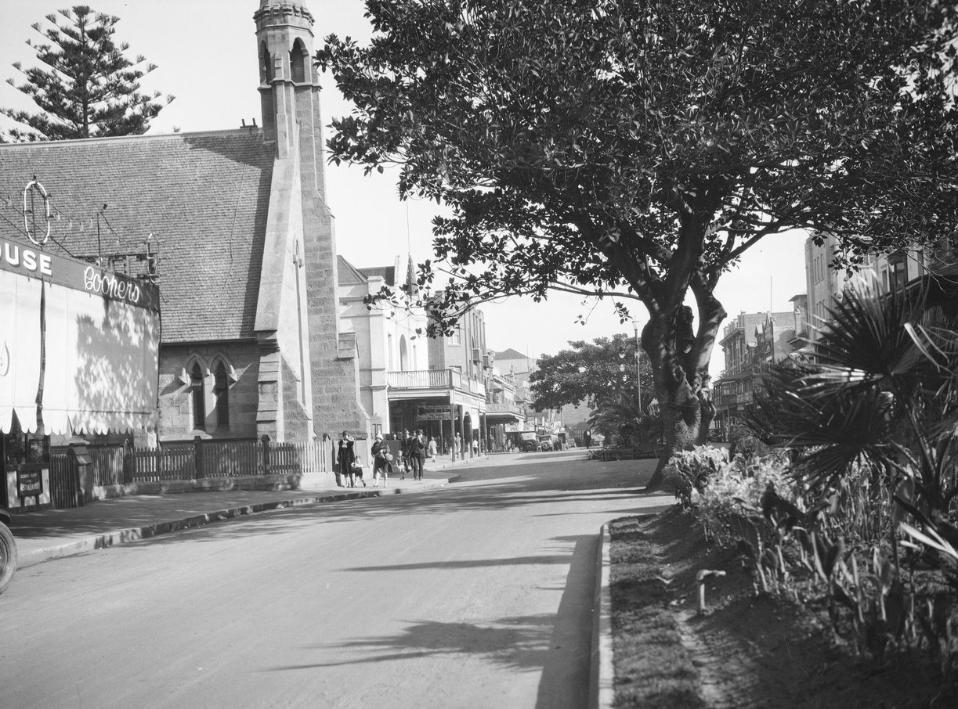
Manly Corso and St Matthews Church, June 1928. Photo by E.G.Shaw. courtesy State Library of NSW.
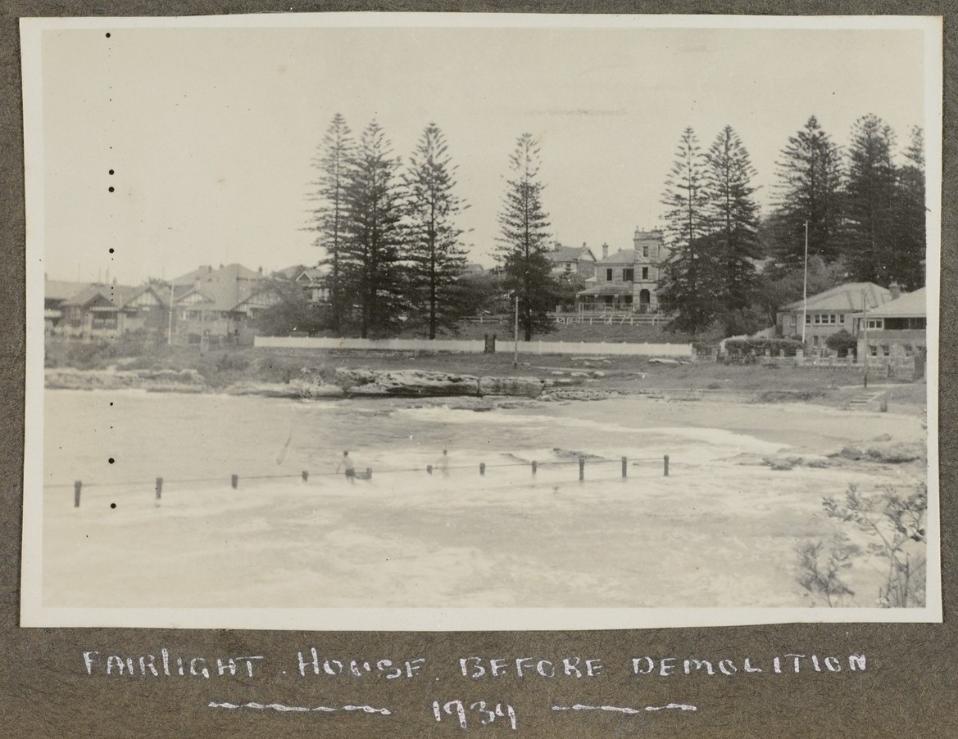
Fairlight House, photo from files of Percy Gledhill, courtesy State Library of NSW
OLD HOME TO BE DEMOLISHED
The historic 80-year-old Fairlight House, Manly, is to be demolished shortly to make room for a block of 16 modem flats. A syndicate from Sydney paid £17,000 for the old home. Fairlight House was originally the home of John Woods, an early Lord Mayor of Sydney. John Woods's son, Sam, was an International cricketer, who died in 1931. OLD HOME TO BE DEMOLISHED (1939, March 6). The Daily Telegraph (Sydney, NSW : 1931 - 1954), p. 8. Retrieved from http://nla.gov.au/nla.news-article247556946
Demolished house - stone from going cheap!

Advertising (1939, March 23). The Sydney Morning Herald (NSW : 1842 - 1954), p. 1. Retrieved from http://nla.gov.au/nla.news-article17567454
Manly also lost, in 1939 - Dalley's Castle:
OLD HOMES PASS.
Making Way for Flats.
EXAMPLES AT MANLY.
Recent movements in the real estate market presage the demolition of many old homes in the suburbs. Conspicuous examples are Fairlight House, on the foreshores of Manly Cove which, with an earlier structure on the same site, revives memories of the very early history of that suburb, and Dalley's Castle on its prominent position overlooking the harbour and ocean beach. Negotiations in connection with the latter property have not been completed yet.
The intention in both instances, is to sub-divide for flat sites These will be amongst the best positions. In Manly Homes of a type which was popular some years ago have become a problem in many suburbs They are too large for present demand Owners are seeking to turn them Into two flats where possible in municipalities where building regulations permit Mosman and North Sydney are cases in point, the smaller home or the flat being more in request there On the other hand In Ku-ring-gai, including the suburbs of Roseville, Lindfield, Killara, Gordon, Pymble, Turramurra, Warrawee, and Wahroonga, the large two-storey home has come back into favour with its new architectural styles, although not always with a big area of land. OLD HOMES PASS. (1939, April 5). The Sydney Morning Herald (NSW : 1842 - 1954), p. 3. Retrieved from http://nla.gov.au/nla.news-article17591770
On With The New
It is with displeasure that I watch the demolition of beautiful and well-loved landmarks in favor of blocks of flats. Two instances have recently occurred at Manly— "Fairlight House" and "Dalley's Castle" are no more. Couldn't the council make these attractive to tourists and charge admission? — "F.E.B." FIFTY-FIFTY (1939, July 5). The Daily Telegraph (Sydney, NSW : 1931 - 1954), p. 13. Retrieved from http://nla.gov.au/nla.news-article247779567
Doomed To Extinction
To F.E.B.: Few people are anxious, or even willing, to support the maintenance of familiar landmarks of old Sydney. The doom that fell upon Fairlight House and Dalley's Castle has swallowed up almost every interesting landmark in New South Wales. There is no redress. People have other things to do with money than fostering architectural encumbrances.— "Ring." FIFTY- FIFTY (1939, July 8). The Daily Telegraph (Sydney, NSW : 1931 - 1954), p. 11. Retrieved from http://nla.gov.au/nla.news-article247777527
In the Supreme Court of New South Wales.
PROBATE JURISDICTION.
In the will of Eliza Maclntyre, late of "Fairlight House," Manly, in the State of New South Wales, widow, deceased.
PURSUANT to the Wills, Probate and Administration t Act, 1898-3932, the Testator's Family Maintenance and Guardianship of Infants Act, 1916, and the Trustee Act, 1925: Notice is hereby given that every creditor or other person having any debt or claim against or affecting the estate, or otherwise interested in the . property or assets of Eliza Mclntyre, the abovenamed deceased, who died on or about the 18th day of August, 1938, and probate of whose will was, on the 11th day of November, 1938, granted by the Supreme Court of New South Wales, in its Probate Jurisdiction, to Peter Mackay and Robert Maclntyre, the executors in the said will named, are hereby required to send particulars in writing of such debt or claim against or affecting the said estate or in respect of the property and assets or any part thereof to the said executors, in care of the undersigned the proctors for the executors mentioned, on or before the 24th day of May, 1939, at the expiration of which time the said executors will proceed to distribute the assets of the said deceased amongst the persons entitled thereto, having regard only to the claims of which they then have notice; and notice is hereby further given that the said executors will not be liable, for the assets or any part thereof so distributed, to any person of whose claim they shall not have had notice at the time of such distribution.—Dated this 10th day of March, 1939.
FISHER AND MACANSH,
Proctors for the said Executors,
70-72 King-street, Sydney. PROBATE JURISDICTION. (1939, March 17). Government Gazette of the State of New South Wales (Sydney, NSW : 1901 - 2001), p. 1333. Retrieved from http://nla.gov.au/nla.news-article222062293
Captain and Mrs. Mackenzie have lent the ballroom of Fairlight House, Manly, for a dance on Saturday night, to raise funds for the beautification of Fairlight bathing pool and Its surroundings. Cards and mah-Jongg will be played. The committee Includes Mrs. Goerge S. Holburn, president; Mrs. H. G. Munro, secretary; Miss D. May, treasurer; Mrs. W. J. Nesbitt, Miss M. Henry, Miss Marjorie May, Miss Constance Taylor, Miss Doris Wade, Miss Rene Lister, and Miss E. Mackenzie. NEAR AND FAR. (1926, September 15). The Sydney Morning Herald (NSW : 1842 - 1954), p. 7. Retrieved from http://nla.gov.au/nla.news-article16333170
Mrs. Archdale Parkhill will officially open the garden party, which will be held at the home of Mrs. McIntyre, Fairlight House. Manly, on May 14. Further arrangements will be made for this at a meeting of the Seaside Home Committee of the Country Women's Associationat David Jones on May 11 at 10.30 a.m. NEAR AND FAR. (1932, May 6). The Sydney Morning Herald (NSW : 1842 - 1954), p. 3. Retrieved from http://nla.gov.au/nla.news-article16861068
References And Extras
- TROVE - National Library of Australia
- CAPTAIN COOK OR AN UNKNOWN ITALIAN ADMIRAL ON STATUE CONTINUED by Christopher Paxton, Retrieved from: https://www.captaincooksociety.com/home/detail/captain-cook-or-an-unknown-italian-admiral-on-statue-continued
- MacRitchie, John, Fairlight, Dictionary of Sydney, 2008, http://dictionaryofsydney.org/entry/fairlight
Manly 1927 extras
Local Government
£60,000 for Manly Town Hall
Manly's proposed new town hall has advanced to the stage of being approved by the Council and at a recent meeting a motion was carried that a town hall be erected at a cost not exceeding £60,000. A sub-committee reported on the financial side of the proposal on the basis of a loan at 5 ¾ per cent, for a period of 25 years. Council agreed to endeavor to extend the period to forty years.
The estimated annual income from rental of professional chambers, meeting rooms, municipal offices, hire of town hall, etc., is £5980 which will, cover repayment of principal and interest, wages of caretaker and cleaner, lighting, rates, insurance, and maintenance. The town clerk was instructed to obtain full information regarding conditions relating to the Marrickville and Newcastle town hall schemes, for submission to the next meeting of the committee.
Marrickville Town Hall cost £32,000 and Newcastle's combination Town Hall and shop scheme is estimated to cost £275,000, so there is a wide gap between these two schemes. It is to be assumed, that Manly Council aims at a prepossessing building, after deferring the proposal for so long and in view of the increasing importance and dignified status of this popular residential and holiday suburb. Local Government (1927, April 27). Construction and Local Government Journal (Sydney, NSW : 1913 - 1930), p. 8. Retrieved from http://nla.gov.au/nla.news-article108992064
General Notes
Manly's Disillusionment — A Scion of the Greater City
Manly's vision of becoming a city will not be realised if the Minister for Local Government has his way, as the sponsors of the Greater Sydney scheme have designs on the marine suburb and would include it in the Greater Sydney area. This is the first Manly has heard of the above intentions, and its 'independent spirit is rather outraged at such summary, 'disposal of its future and status, when it' had hoped to become an independent unit. General Notes (1927, June 29). Construction and Local Government Journal (Sydney, NSW : 1913 - 1930), p. 7. Retrieved from http://nla.gov.au/nla.news-article108992138
Also more statue criticisms from same year - articles such as these appeared regularly, some even printing the real name of the critic so the authorship/agenda may be scrutinised.
Statuesque Conventions
(By "ACHERNAR.")
STATUES are coming in for criticism. . Sydney is asking when some of its begrimed public statues are to be washed. Manly discusses the right or wrnnff of its ancient statue of a two-armed Nelson. And in- the Antipodes . Mr. G. K. Chesterton wants a London statue of Sherlock Hoimes set up in Baker Street. Modern art may be anarchic in patches, but statues , have ' conventions like ordinary, living people, and, generally speaking, act up to those rules?
When the statue of Mr.' T. J. Ryan. ex-Premier of Queensland, was being planned by Mr. Bertram Mackennah that sculptor pointed out the "appalling lack of artistry in trousers," and wanted to hide such garments beneath ft barrister's gown. But trousers are, not the only sins against the statuesque conventions.
When the late Mr. Nelson Illingworth was making in his Sydney studio a statue of Mr. James Manifold, M.P., he shocked some sensitive souls by putting a pipe in one hand of the bronze effigy of that pastoralist-politician. Why should a pipe jar any aesthetic susceptibilities? Is smoking too modern relaxation to harmonise' easily with so venerable and hide-bound a cult as Statuary?
Apparently a statesman may carry a pipe or an umbrella all his days but should a grateful public in after years erect a statue to his memory, pipe and umbrella must be sternly discarded in the sacred name of art.
Of course, It may be said that sculptors have a wide choice of decorative gear to put in the hands and on the heads 'of their statuesque .subjects.' A statue of the right sort need not blush to clutch a sword, a scythe, a staff, an hour-glass, or a bit of fossilised lightning; but umbrellas are taboo, and pipes (unless of the Pan type) are objects of artistic suspicion. . Perhaps the nearest approach to the statuesque pipe is the cigarette. which the figure of Robert Louis Stevenson holds in the famous bas-relief which portrays that literary invalid reclining languidly upon a stone couch. And even that offending "fag" was transformed into an innocuous pencil when the bas-relief was subsequently used as a model for a church memorial to R.L.S.
A great citizen who has never worn anything on his adult head but a soft felt hat, and would not know which end of a telescope to put in his mouth, is in danger of being ultimately memorialised in stone or metal as an august person in cocked hat and knee breeches with a spy-glass tucked under his arm. We may say of most sculptors, as Bernard Shaw said of some advanced moderns, "How conventional these unconventional people are!” Statuesque Conventions (1927, July 24). The Daily Telegraph (Sydney, NSW : 1883 - 1930), p. 21. Retrieved from http://nla.gov.au/nla.news-article246987872
Why did the statutes in Manly look 'shabby' around their edges - What makes sandstone statues deteriorate?
Typical problems
There are a number of different problems associated with stone, many of them specific to certain types of stone (such as marble, granite or sandstone).'Sweep Boy' marble and sandstone statue before treatment The problems associated with stone can affect all types of stone items, including monuments, memorials, buildings, sculptures and movable heritage items. Carved stone, such as statues and monuments, decorative objects and architectural elements, is often more susceptible to damage than bulk masonry. The deterioration of stone depends on a number of factors including the type of stone, its location, purpose and use and its maintenance.
In general, the factors affecting stone deterioration can be grouped into the following categories: environmental decay, mechanical decay and applied decay.
From International Conservation Services, Sydney. Retrieved from their webpage: http://www.icssydney.com.au/index.php?id=537
Achille Simonetti
1838 – 1900
Achilles Simonetti (1838-1900) was a sculptor. Born in Rome, the son of sculptor Louis Simonetti, he trained as a religious sculptor. He migrated to Australia at the instigation of Dr James Quinn, Roman Catholic Archbishop of Brisbane, and moved to Sydney in 1874 to teach at the NSW Academy of Art. Simonetti made the statue of Governor Phillip for the Botanic Gardens in Sydney and completed numerous other commissions for public works. His work was shown in the NSW sections of the Sydney and Melbourne International Exhibitions of 1879-80 and almost a century later, in Early Australian Sculpture, Ballarat Fine Art Gallery, 1976. He was also included in the 1976 exhibition, Australian Art in the 1870s, at the Art Gallery of New South Wales. He won the NSW Academy of Art Sculpture Prize in 1874 and 1875, as well as the sculpture prize at the International Exhibition in Sydney in 1879. Simonetti is represented in the Art Gallery of NSW, at the University of Sydney, University of Adelaide and in the Queensland and NSW State Houses of Parliament.
Still in Brisbane in Autumn of 1873:
SIGNOR SIMONETTI'S STUDIO.
Few residents in Brisbane, who have any appreciation of the fine arts, can be aware that we have located amongst us a sculptor so skilled and gifted as Signor Simonetti, When we were invited yesterday to pay a visit to his studio, we little anticipated that such a treat was in store, as, some now or other, we uacl, like many more associated the Signor with the execrable bust of the late Governor Blackall exhibited in this city not long since. Most humbly do we apologise, for the Signor is not ' a inert bungling modeller of base clay,' but an artist in every sense of the term. The son of a sculptor in Rome, Signor Simonetti seems to have inherited his father's skill, and liio earlier tastes and studios were doubtless refined and improved by a short sojourn in Athens, the home of Phideas, the demigod of sculptors.
We believe that the Signor first came to the colony ' under the auspices of the Right Rev. Dr. Quinn, the Roman Catholic Bishop of Brisbane, and the first production of the artist's chisel in Brisbane, is a life-size bust of the right rev. gentleman. It is in pure Carrara marble, as clear as alabaster, and as a portrait of Dr. Quinn, it is ' speakingly correct,' The well-known features of the rev. gentleman are as visibly pourtrayed in the cold marble as they could be by photography itself. The Bishop is represented as wearing his sacerdotal robes, but the artist has, wisely we think refrained from reproducing in the marble the ornamentations in embroidery, &c., which usually adorn the cope. The skull-cap is admirably carved, oven to the' minutest crease. But the observer is not so much attracted by such details as these, as by the inimitably chiselled features, and we venture to say that in no colony of the Australian group has such a work of art been produced. There have been many maiden efforts bepuffed and bepraised but here we have the handiwork of a true artist.' Not only is Signor Simonetti a sculptor in marble, but his models in clay are exquisite. Many of our readers may remember the small bust of Mr. Jefferies, shown at the School of Arts Exhibition. This was one of the Signor's productions, and he has produced many others, equally life-like and satisfactory to the parties represented. He is now engaged in producing medallion casts of some gentlemen well known in the city, and the unfinished copies we saw were sufficiently striking to command identification, even in their rough state.' The gem of the studio was, in our opinion, a plaster model of a group of the Signor's' own conception, which he happily calls ' The First Fish.' The mother, whose countenance is full of expression and tenderness, is represented by a half-draped figure exquisitely moulded, partially ? supporting the standing form of a young boy, who lias apparently been fishing for minnows. The mother has assisted him to land his first piscatorial prize, and the delighted features of the lad are admirably represented in the clay. The group altogether is well worth a study, and speaks volumes for the skill of its designer. The Signor informs us that the clay he uses is procured from a shaft in Mr. Potrie's quarries at Breakfast Greek, and he declares it to be the equal to any that he ever worked with. When the last artistic touches have boon given to the marble bust of Dr. Quinn, — which will probably be by Monday next, — this work of art will be exhibited at the studio in Wickham-street, but, if we may venture to offer the Signor a hint, it is worthy of a more general inspection than it can possibly be subjected to in its present locale. SIGNOR SIMONETTI'S STUDIO. (1873, April 23). The Telegraph (Brisbane, Qld. : 1872 - 1947), p. 3. Retrieved from http://nla.gov.au/nla.news-article169487276
By early November 1873 he is in Sydney and offering in an Advertisement that runs a few times:
SIGNOR ACHILLE SIMONETTI, Sculptor, from Roma, begs to inform the public that he is prepared to give LESSONS in Modelling in Clay Pupils received at his Studio Pitt-street, No 143, opposite the Union Bank. Private families attended. Signor Simonetti is prepared to execute from photographs, Deceased Persons, in marble, plaster of paris, or clay. Advertising (1873, November 14). The Sydney Morning Herald (NSW : 1842 - 1954), p. 1. Retrieved from http://nla.gov.au/nla.news-article13326541
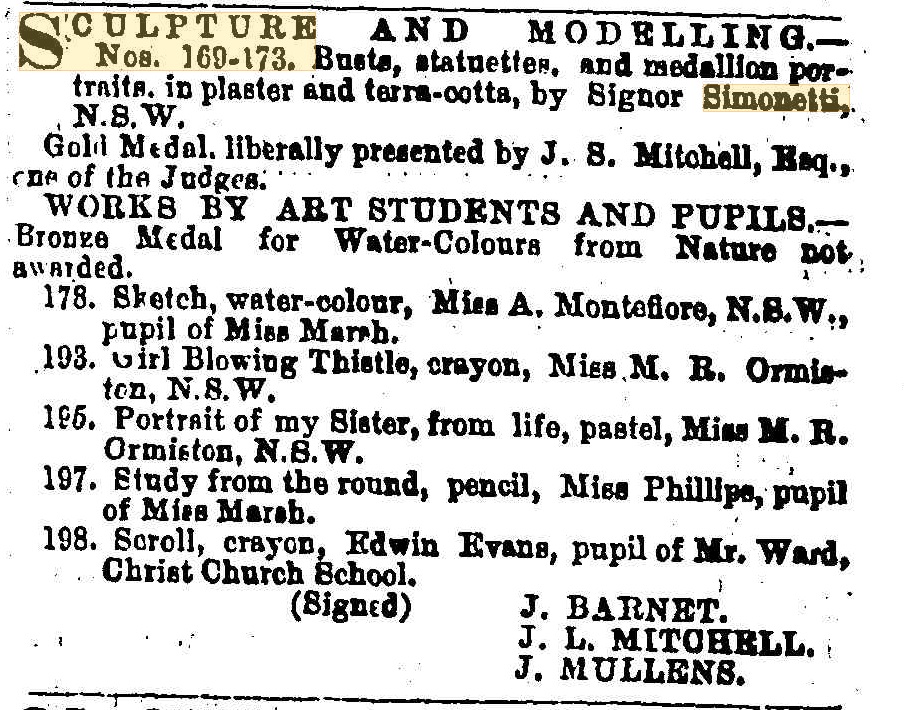
Prizes - 31st of March 1875 - Advertising - Trove
In Balmain - 22 Rose Street, Snails Bay, North Balmain - also called Birchgrove(The famous sculptor, Achille Simonetti, bought lot 9 in September 1874 - Leichhardt Historical Journal).
He also later had a mountain retreat it seems at Springwood - backing up the statment by the Springwood Historians that the sculptures recently found have buried in a garden there may have been his as well:
Several new dwellings have been erected in the district lately, and now Signor Simonetti, the sculptor, is commencing to build himself a Mountain home here. Springwood. (1894, September 14). The Mountaineer (Katoomba, NSW : 1894 - 1908), p. 2. Retrieved from http://nla.gov.au/nla.news-article194838983
The Nepean Times (15 August 1894) also mentions that 'Simmonetti, who was an eminent sculptor, had commenced operations on his land facing the Western Road nearly opposite Mr M. Chapman.' He had erected a room on the property prior to building his cottage and had also been busy planting some vines (for wine?).
Simonetti had open studios at Balmain as well as participating in Art Society Exhibitions etc. He also taught at this studio. He was also part of Balmain regattas - whether just as a contributor to costs (indicating he was making a good income from works) or as a sailor is not spoken of:
ART.-During the past week Signor Simonetti's studio has been open to the public, who have availed themselves largely of the opportunity to see his works in modelling and sculpture, particularly the model for the " statue of justice." His Excellency the Governor visited the studio on Saturday, and expressed his gratification at Signor Simonetti's productions. His Excellency expressed the general opinion that these statues for the new public offices should be executed in marble instead of the more perishable sandstone. If the work is to be done at all, it should certainly be done in the best material. The difference in cost would be comparatively small. The Sydney Morning Herald. (1877, October 15). The Sydney Morning Herald (NSW : 1842 - 1954), p. 4. Retrieved from http://nla.gov.au/nla.news-article28395931
Balmain Regatta.
A meeting of the committee of the Balmain Regatta was held at the local Town Hall on Monday evening last. Dr. P. G. Kelly presided. Letters were received from the following gentlemen accepting office and enclosing or promising donations : — Messrs. W. Higstrim, John Hunter, A. Oliver, R. Campbell, jun., H. E. Moxham, J. B. Fairfax, J. C. Mills, 3. C. Waterman, F. B. Freehill, A. C. J. Wood, W. Bennett, R. E. O'Connor, J. R. P. Gray, and W. Meggit (of Lever Brothers, Limited), D. Morgan', A. Simonetti, W. Fountain, A. S. Bolton, H. A. Scott, L. Dodds, T. B. Dibbs, J. Cox, M. Rush, E. Parkes, H. B. Swan, G. C. Murdoch, A. Been, Alderman Williams, H. M. Shelly, and M. A. H. Fitzhardinge. A letter was read from the Prince Alfred Yacht Club promising its support. The canoe race conditions were altered to class A and B only. Prizes were allotted and a great many minor arrangements attended to. The Son. secretary (Mr. IV W.J. Donovan) announced . that Mr. F. W. Jackson, of the Union Steamship Company, had again been waited upon, and had finally arranged for the Moana as flagship. Balmain Regatta. (1897, October 30). The Sydney Mail and New South Wales Advertiser (NSW : 1871 - 1912), p. 911. Retrieved from http://nla.gov.au/nla.news-article163797892
Works in sandstone:
FINE ARTS.
Signor Simonetti has now completed his clay model of the third of the three sandstone statues he was commissioned to carve for the exterior decoration of the now public offices in Macquarie street It is that of Minerva, Goddess of Wisdom, and will occupy a niche about ten feet from the ground. The daughter of Jove is shown standing in a graceful dignified pose, and wearing upon her passionless face the aspect of "self knowledge, self-reverence, self-control 'which attributes alone, we are told by the poet, " lead life to sovereign power ' Her parted locks fall from beneath a helmet and, clustering on each side of her low broad forehead, flow to her shoulders. Her left hand holds a shield with the right she leans slightly upon a tall spear, while on her breastplate is fixed Medusas horrible face with its living snake tresses. But though she is thus armed, it is for defence rather than for attic!, and the peace of the colonies is indicated by an olive spray entwined round her spear. She wears a tunic, caught at the waist and a long cloak, which falls in massive folds from the shoulders, is caught over the right arm, looped over the knees and again caught by the hand resting on the shield. The drapery is graceful and natural falling softly into the lines of the figure, and suggesting them in its folds and curves there is no rigidity about it, and its treatment and an arrangement are very artistic. The general expression of the figure, which is 7 feet 6 inches high is that of calm wisdom and serene security, and the placid beauty of the "grey-eyed goddess" is reproduced in a face which combines masculine strength with feminine loveliness FINE ARTS. (1880, June 8). The Sydney Morning Herald (NSW : 1842 - 1954), p. 8. Retrieved from http://nla.gov.au/nla.news-article13461690
Signor Simonetti's competitive statuette of Her Majesty the Queen, whose statue is to be placed on the pedestal at the junction of Macquarie and King streets, is nearly finished. Advertising (1884, June 21). Evening News (Sydney, NSW : 1869 - 1931), p. 5. Retrieved from http://nla.gov.au/nla.news-article107267571
He didn't win this commission - The Queen Victoria statue is the work of John Hughes (1865–1941). Instructor in Modelling at the Dublin Metropolitan School of Art.
The Governor Phillip fountain:
Signor Simonetti has completed a model in clay, 13 feet high, of the statue of Governor Phillip. Telegrams. (1888, April 28). Queanbeyan Age (NSW : 1867 - 1904), p. 2. Retrieved from http://nla.gov.au/nla.news-article30919466
Governor Phillip's Statue.
About seven years ago the idea of erecting a statue in memory of Governor Phillip, whose connection with the early history of the colony is so well known, was mooted, and the conception of the erection of the statue must be placed to the credit of Sir Henry Parkes. The idea was approved, and the commission was entrusted to the well known Sydney sculptor, Signor Simonetii, who has worked unceasingly at its composition since 1889. The statue forms part of an expensive work. The sculptor despatched the central figure (the Governor's statue) to Florence last year, and from his design it was cast in bronze and has now been returned to the colony in its new and permanent form. Signor Simonetti is at present in Florence in connection with the various allegorical figures, typifying commerce, mining, &c, which are to be grouped at the base of the colossal statue. When considering the question of the site of this important historical work, it was thought that the Centennial Park was not so suitable as the more frequented portion of the city in which the work in all its artistic excellence could be brought daily within the observation of the inhabitants of the metropolis. A more appropriate position has therefore been selected in the Inner Domain, and the monument is likely to prove one of the first prominent objects of the city that visitors entering Sydney Heads will observe. The site fixed upon is marked by a small fig-tree on the highest portion of the upper land of the Inner Domain, on the site of the old Garden Palace, and to some extent this site has been chosen to perpetuate the memory of the Garden Palace.
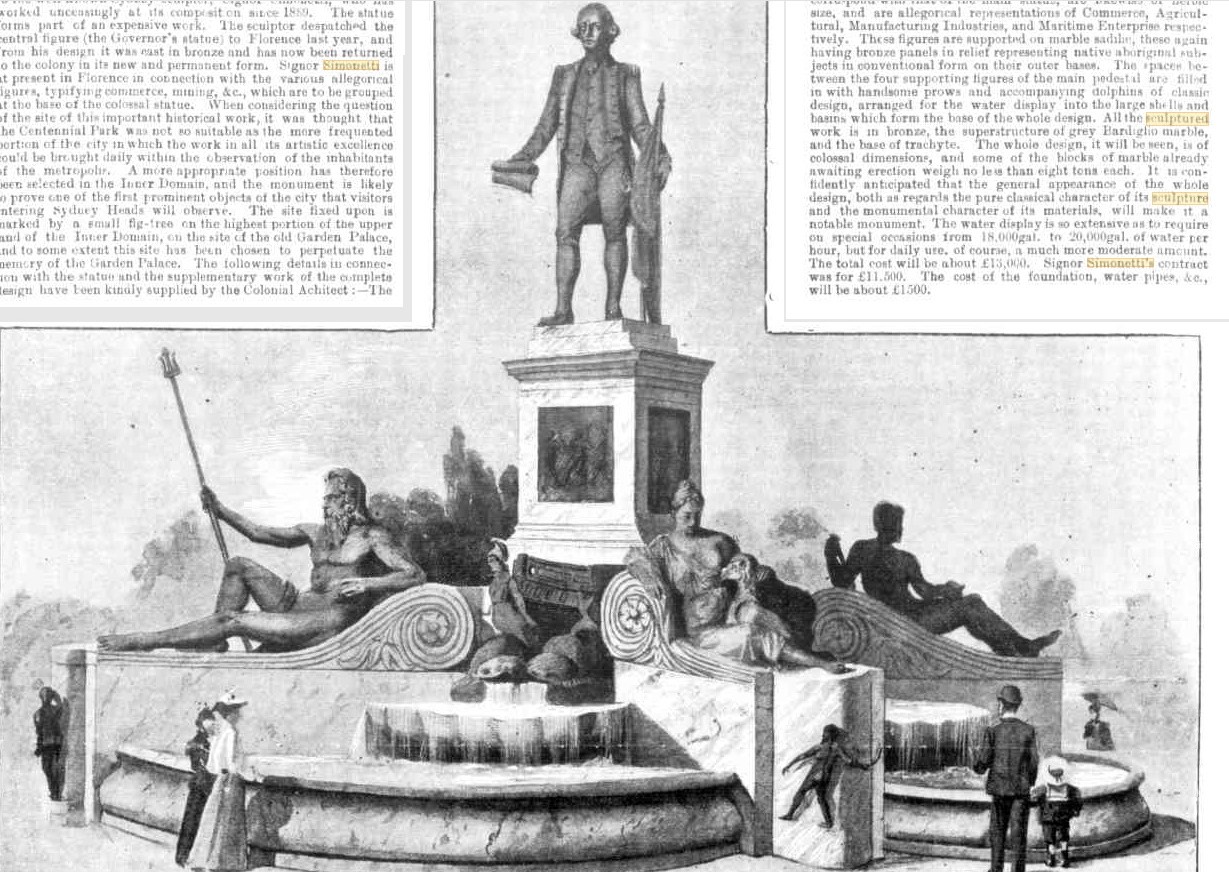
The following details in connection with the statue and the supplementary work of the complete design have been kindly supplied by the Colonial Architect :—
The GOVERNOR PHILLIP'S STATUE. Complete design with pedestal fountains and allegorical representations to be erected in the Inner Domain, Sydney.
Foundations will require to be of solid concrete, with a subway (o give access to the water supply, drains, -fcc. Upon this foundation is the superstructure, including the fountain, pedestal, statue, &c, which will reach to a height of about 48ft, and have a diameter, in the shape of a St. Andrew's Cross, of about 45ft. The central statue is of heroic size, and is understood to represent a good likeness of Governor Phillip taken from the best available records. The four supporting recumbent figures, in bronze, to correspond with that of the main status, are likewise of heroic size, and are allegorical representations of Commerce, Agricultural, Manufacturing Industries, and Maritime Enterprise respectively. These figures are supported on marble sadilae, these again having bronze panels in relief representing native aboriginal subjects in conventional form on their outer bases. The faces between the four supporting figures of the main pedestal are filled in with handsome prows and accompanying dolphins of classic design, arranged for the water display into the large shells and basins which form the base of the whole design. All the sculptured work is m bronze, the superstructure of grey Bardiglio marble, and the base of trachyte. The whole design, it will be seen, is of colossal dimensions, and some of the blocks of marble already awaiting erection weigh no less than eight tons each. It is confidently anticipated that the general appearance of the whole design, both as regards the pure classical character of its sculpture and the monumental character of its materials, will make it a notable monument. The water display is so extensive as to require on special occasions from 18,000gal. to 20,000gal. of water per hour, but for daily use, of course, a much more moderate amount. The total cost will be about £13,000. Signor Simonetti's contract was for £11,500. The cost of the foundation, water pipes, &c, will be about £1500. Governor Phillip's Statue. (1896, February 22). The Sydney Mail and New South Wales Advertiser (NSW : 1871 - 1912), p. 383. Retrieved from http://nla.gov.au/nla.news-article162824659
SIGNOR SIMONETTI'S RETURN.—Signor Simonetti, who sailed for Italy by the Darmstadt on 2nd November last, returned to Sydney by the great German liner on Sunday. With his arrival the Governor Phillip memorial, which some years ago he was commissioned by Sir Henry Parkes to execute at a total cost to this colony of about £12,000, will be hastened to its completion. After reaching Italy, Signor Simonetti visited Carrara, and was freshly struck by the inexhaustible supply of flawless marble there, and by the magnitude of the dynamite operations by which gigantic masses are blown out in the quarries. His visit enabled him to choose splendid blocks, weighing in all 10 or 12 tons, for the pedestal of the colossal statue, and he saw that the material was safely despatched to Sydney, where it has since been received. The sculptor then journeyed on to Florence, where, it will be remembered, the central statue, 15ft. high, was cast in bronze early last year. Signor Simonetti's mission was to see unloaded at Genoa his four allegorical statues of Commerce, Agriculture, Marine Industry (Neptune), and Mining (Cyclops). This was safely accomplished, and the groups were delivered intact at the foundry in Florence for reproduction in bronze. Now that Signor Simonotti is back in Sydney with health renewed, and literally looking 10 years younger than when he left, he will set to work briskly upon the four groups in basso- relieve needed to adorn the pedestal. At present the workmen are engaged in laying the foundation for the pedestal on the site of the old Garden Palace, so that shortly the Governor Phillip Statue will begin to be in evidence. THE SYDNEY MORNING HERALD. (1896, March 10). The Sydney Morning Herald (NSW : 1842 - 1954), p. 4. Retrieved from http://nla.gov.au/nla.news-article14040709
TENDERS are invited for Erection of Statue &. Fountain, etc., in the Inner Domain. Tenders to be forwarded to Signor SIMONETTI. Sculptor, Snail's Bay, Balmain, not later than the 12th day of JUNE, 1896. Plan and specification to be seen at the Government Architect's Office, Public Works Department. Advertising (1896, June 3). The Daily Telegraph (Sydney, NSW : 1883 - 1930), p. 1. Retrieved from http://nla.gov.au/nla.news-article238605663
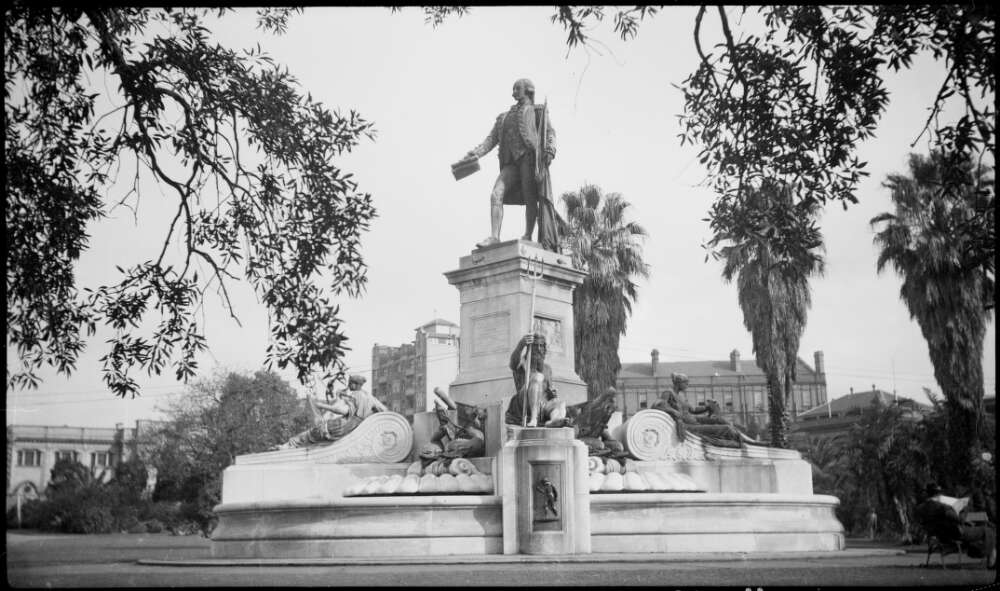
Governor Phillip fountain - Fountain, Memorial
Monument in the Royal Botanic Gardens commemorating Governor Arthur Phillip. Sculptor Achille Simonetti was commissioned to create the work by Sir Henry Parkes as part of the 1888 Centennial celebrations and it was unveiled on 22 June 1897 as part of the Queen Victoria Diamond Jubilee. By Edward William Searle Contributed By National Library of Australia [PIC P838/1033a LOC Nitrate store PIC Box 24] nla.obj-141860044-1
Models for above must have visited his Balmain studio, which makes the inability to access his papers/sketches doubly frustrating:
One of his own sons, Mr. Harry Smith, besides being a very successful swimmer, had twice been champion long-distance runner of New South Wales, and was chosen by Simonetti, the sculptor, as the model for the figures surrounding the statue of Governor Phillip. Lived 107 Years. (1903, June 10). Australian Town and Country Journal (Sydney, NSW : 1870 - 1907), p. 26. Retrieved from http://nla.gov.au/nla.news-article71482173
Same year - a poet!:
Amongst the sculpture is an imposing bust of Mr. A. B. Paterson, by Mr. Simonetti, … The Art Society's Show. (1896, October 17). The Sydney Mail and New South Wales Advertiser (NSW : 1871 - 1912), p. 808. Retrieved from http://nla.gov.au/nla.news-article163784549
Family connections here
Marriage: 153/1888 SIMONETTI ACHILLE DOHERTY MARGARET SYDNEY
Margaret’s death: SIMONETTI MARGARET 6817/1914 JOHN MARGARET BALMAIN NORTH
SIMONETTI.— October 19, at Rose-street, Balmain, the wife, of Signor Simonetti, of a daughter. Family Notices (1889, October 26). The Sydney Mail and New South Wales Advertiser (NSW : 1871 - 1912), p. 955. Retrieved from http://nla.gov.au/nla.news-article162068283
They lose their baby daughter:
SIMONETTI.—At Rose-street, Birchgrove, Balmain, Philippa Violet Simonetti, aged 9 weeks. Family Notices (1890, January 11). The Sydney Mail and New South Wales Advertiser (NSW : 1871 - 1912), p. 106. Retrieved from http://nla.gov.au/nla.news-article162075384
SIMONETTI.—November 12, at her residence, Rose-street, Snail's Bay, the wife of Achille Simonetti, of a son. Family Notices (1890, November 22). The Sydney Mail and New South Wales Advertiser (NSW : 1871 - 1912), p. 1175. Retrieved from http://nla.gov.au/nla.news-article163649520
Their son was named Arthur P (Philip for his sister?).
His death funeral notice shares some light on her family:
SIMONETTI— March 23, 1900, at 22 Rose-street,, Birchgrove Park, Balmain North, Signor Achllie Simonetti, sculptor, aged 62 year:-. R.I.P. Funerals.
SIMONETTI.— The Friends of the late Signor ACHILLE SIMONETTI, sculptor, are kindly invited to attend HIS Funeral, which will move from his late residence, 22 Rose-street, Birchgrove Park. Balmain North, THIS (SUNDAY) AFTERNOON, at 1 p.m., for the Necropolis. WOOD and COMPANY, Funeral Directors, Sydney and Suburbs. Tel. 726, &c.
SIMONETTI.— The Friends of Mrs. M. SIMONETTI are kindly invited to attend the Funeral of her late beloved HUSBAND, Achille, which will move from his late residence, 22 Rose-street, Birchgrove Park, Balmain North, THIS (SUNDAY) AFTERNOON at 1 p.m., for the Necropolis. WOOD and COMPANY, Funeral Directors.
SIMONETTI.— -The Friends of Mr. CORNELIUS DOHERTY are kindly invited to attend the Funeral of his late beloved BROTHER-IN-LAW, Signor Achille Simonetti, which will move from his late residence, 22 Rose-street, Birchgrove Park, Balmain North, THIS (SUNDAY) AFTERNOON, at 1 p.m.. for the Necropolis. WOOD and COMPANY, Funeral Directors. Telephone 726, &C;
SIMONETTI— -The Friends of Mr. WILLIAM CLEARY are kindly invited to attend the Funeral of his late beloved UNCLE, Signor Achille Simonetti, which will move from his late residence, 22 Rose-street, Birchgrove Park, Balmain North, THIS (SUNDAY) AFTERNOON, at 1 p.m., for the Necropolis. WOOD and COMPANY, Funeral Directors. Telephone 726. Family Notices (1900, March 25). Sunday Times (Sydney, NSW : 1895 - 1930), p. 5. Retrieved from http://nla.gov.au/nla.news-article126288309
Margaret's parents Marriage: 896/1859 DOHERTY JOHN MALONE MARGARET SYDNEY
DOHERTY—MALONE—On the 8th December, by special licence, at St. Mary's Cathedral, by the Rev. A. J, Forde, John Doherty, of County Clare, Ireland, to Margaret, second daughter of Mr. Daniel Malone, Lisdoonoarna Spa, County Clare, Ireland. Family Notices (1859, December 17). Empire (Sydney, NSW : 1850 - 1875), p. 4. Retrieved from http://nla.gov.au/nla.news-article64094616
Birth
DOHERTY BRIDGET 602/1861 JOHN MARGARET SYDNEY
DOHERTY KATE 719/1863 JOHN MARGARET SYDNEY
DOHERTY CORNELIUS 2153/1864 JOHN MARGARET SYDNEY
DOHERTY MARGARET 501/1867 JOHN MARGARET SYDNEY
PARLIAMENTARY PAPER. DISORGANISED STATE OF THE PUBLIC WORKS DEPARTMENT. Extracts from minutes of evidence taken before the Select Committee of the Legislative Assembly. | (Continue... Empire (Sydney, NSW : 1850 - 1875) Friday 22 April 1864 p 3 Article- ... DAY, DECEMBER 3. 1863. MR JOHN DOHERTY B examination continued ; How much do you suppose these trial surveys
Sister’s marriage
737/1878 CLEARY WILLIAM DOHERTY BRIDGET SYDNEY
HARTLEY.—Georgina L. W. Barton, Thomas Stillwell, Michael Kinemore, William Cleary, Patrick Hanrahan, Andrew Brown. Approved Claims to Pre-emptive Leases. (1878, April 13). Australian Town and Country Journal (Sydney, NSW : 1870 - 1907), p. 23. Retrieved from http://nla.gov.au/nla.news-article70612389
BALMAIN.
Cornelius Doherty, 29, was fined 10s, and Kate M'Guire, 27, servant, 5s, for drunkenness. BALMAIN. (1894, March 15). Evening News (Sydney, NSW : 1869 - 1931), p. 5. Retrieved from http://nla.gov.au/nla.news-article114075820
An Impudent Assault
MAN SENT TO GAOL.
SYDNEY, Thursday.
At the Central Police Court to-day a thickly-set laborer, Cornelius John Doherty, 35 years of age, was charged with having assaulted Frank Williamson. The evidence for the prosecution was that on the 1st inst. Williamson was standing on a ladder in front of a theatre in George-street when Doherty, with three companions came along. One of them made use of vile language to Williamson, and shook the ladder, causing him to fall to the ground. One of the men then put his arm around Williamson's neck and held him while accused struck him a violent blow on the side of the head. Accused gave evidence to the effect that on the day in question he was surf-bathing at Coogee. Sergeant Mankey informed the Bench that only recently Doherty had been convicted of an impudent assault very similar to the present one. On another occasion he had been convicted and fined. Accused's solicitor asked for leniency, on the ground that Doherty was a married man with a young family. Mr. Smithers, S.'M. : Yes, that is the most distressing part of these cases, but it is no excuse for the offence. The accused is sentenced to one month's imprisonment with hard labor. The Solicitor: Can’t you impose a fine, your Worship? Mr. Smithers : I think I have been too lenient already. I might have given him more. An Impudent Assault (1911, November 24). National Advocate (Bathurst, NSW : 1889 - 1954), p. 5. Retrieved from http://nla.gov.au/nla.news-article157780015
He worked and worked and worked - a definitive list of all his works, some which may have had 'assistant' hands in there too, would be hard to catalogue - no record of his papers; sketches, commissions, letters or diaries being held by local libraries. State Library of NSW have some among their records (Papers relating to artists, Achille Simonetti, H. C. Prinsep, Frederick Garling and Eric Wilson, 1875, 1937, 1961. Item 1 Extract from J. Lane Mullins' Memoirs 1875 relating Achille Simonetti copied by H. Lane Mullins) AND [Communication to William Bede Dalley of a resolution passed in the Legislative Council accepting his Marble Bush to be erected by Simonetti; and directing an appropriate place for the Marble Bush to be assigned on the walls of the Council Chamber, 1st July 1886] New South Wales. Parliament. Legislative Council : 1st July 1886 AND S. N Hogg bound typescript of 'Balmain, past and present from 1800 [to 1925] (with biographical sketches of a few eminent men who lived there), c. 1880-1925 Hogg, S. N. (Samuel Nisbet), d. 1934 : c. 1880-1925- MLMSS 8096 - also National Library of Australia or Australian National Archives, Australian National Museum.
Margaret passed away in 1914, still at the house/studio in Balmain North (22 Rose Street) - no record of Arthur Simonetti ? or what became of his papers.
Describes methods - workings, sitting etc. and also indicates he travelled far and wide frequently, often staying in places for some length of time to execute or deliver commissions and that many also travelled to his Rose Street Studio to inspect the progress of works being undertaken - no sketch or photograph of this studio found. This also shows, again, that those who knew his subjects found his likenesses very accurate:
PROPOSED BUST OF THE PRESIDENT OF THE QUEENSLAND LEGISLATIVE COUNCIL.-The members of the Legislative Council (says the Brisbane Courier) have had it for some time in contemplation to procure a painting or bust of their respected President, Sir Maurice O'Connell, in testimony of their recognition of his services as President of the Council over since the inauguration of Parliamentary government in this colony. It was ultimately decided that of the two, an oil painting or a marble bust, the latter would be preferable, and could most conveniently be placed in the Council Chamber. The members of the Council have been so fortunate as to obtain, for the carrying out of their design, the services of Signor Simonetti, whose ability as a sculptor has been thoroughly established by his execution of several works in the best style of his art. This gentleman is now on his way to Brisbane for that purpose. The bust is to cost about £130. The Sydney Morning Herald. (1877, March 20). The Sydney Morning Herald (NSW : 1842 - 1954), p. 4. Retrieved from http://nla.gov.au/nla.news-article13395753
BUST OF SIR MAURICE O'CONNELL.
Through the courtesy of Signor Simonetti we were, on Wednesday last, the 11th of April, afforded an opportunity of inspecting the model prepared by that gentleman, from which to execute a marble bust of Sir Maurice O'Connell, president of the Legislative Council. Having conversed with many persons who saw this work of Signor Simonetti, and who pronounced it a perfect likeness in every detail, we were of course prepared to expect a very artistic representation of our late Acting-Governor; and we must say that a view of the model fully bore out the encomiums passed upon the artist. The bust, which has been prepared from clay, is a really capital likeness of Sir Maurice, and gives promise that the bust, when executed in marble, will be a real work of art.
Sir Maurice's features are so familiar to most people in Brisbane that the artist, no doubt, felt himself put upon his mettle, as it were, and that his powers as a sculptor would be fully tested. It is no fulsome flattery to the original to say that his face is one which any artist would take pride in poutraying correctly, and perhaps some of Signor Simonetti's success may he attributed to this fact. Certain it is that Signor Simonetti has succeeded in poutraying the features with remarkable' fidelity, the likeness being strikingly—in fact, we may say, speakingly—correct. The eyes, which, in sculpture it 'is,very: difficult to give a life-like expression to, are very successfully sculptured, and show unmistakeably the work of a true artist; and all the features and accessories are brought out with an attention to detail which is really marvellous, considering that the artist has as yet only executed a preliminary model in clay. Signor Simonetti informed us that Sir Maurice had his last sitting on the above day, and that the model will be finally completed about Saturday next. Next week the signor proposes to have the bust on view at Parliament House, when the public will be allowed to see it in the room in which the work has been executed; and we venture to say that a visit of inspection will be sufficient to convince any person that in the matter of giving a life-like representation of the human, face, sculpture, when, carried out by a true artist, is in no way behind photo. BUST OF SIR MAURICE O'CONNELL. (1877, April 14). The Week (Brisbane, Qld. : 1876 - 1934), p. 19. Retrieved from http://nla.gov.au/nla.news-article181784938
STATUES FOR THE COLONIAL SECRETARY'S OFFICE.
Signor Simonetti has completed the sixth and last statue for the Colonial Secretary's office, that of '' Art," and yesterday it was placed in its position on the top storey niche by the well-known contractor— Mr. J. G. M'Leod. The statue Is very beautifully executed with graceful drapery, showing to perfection the contour of the figure. The left hand of the figure holds a palette, and in a the right there is a brush. The attitude of the figure denotes some fresh inspiration. It will be remembered that the group consist of Wisdom, Justice, Mercy,' Labour, Science and Art. The first three are on the building at the corner of Macquarie and Bridge streets, and the last three at Bridge and Phillip streets. The whole group reflects the highest credit on the sculptor, who has already eanred a well-deserved reputation in our midst. STATUES FOR THE COLONIAL SECRETARY'S OFFICE. (1888, January 14). The Australian Star (Sydney, NSW : 1887 - 1909), p. 7 (SECOND EDITION). Retrieved from http://nla.gov.au/nla.news-article229742592
THE MUNRO BUST
Mr. J. Kelf, Secretary to the Committee charged with procuring of a bust of Mr Alex Munro of Bebeah—to be placed in the new wing of the Benevolent Asylum building— yesterday received a letter from the sculptor, Signor Simonetti, who has now completed his task. In his communication, Signor Simonetti stated that he will leave Sydney for Singleton, with the bust and pedestal, tomorrow (Thursday) by the 4.45 p.m. train and will therefore arrive here about 1 a.m. on Friday. He will be met at the station by one or more representatives of the Committee; and it may safely be concluded that within the next few days the formal ceremony of placing the long-looked for bust in position will take place. THE MUNRO BUST. (1888, March 28). Singleton Argus (NSW : 1880 - 1954), p. 2. Retrieved from http://nla.gov.au/nla.news-article82617090
Singleton.
March 20.
Our city fathers at their last meeting had a long discussion as to how and where the water supply for the drinking fountain, presented by our esteemed townsman, Alexander Munro, to the people of Singleton, was to come from. One alderman stated, that if the council erected the fountain at the place named (near Court-house) the cost of laying down pipes and supplying it with water would necessitate a ? special water-rate on the ratepayers of Singleton. The same alderman asked — if Mr. Munro made a present- of a drinking fountain to the public, would it be considered a present if the public had to furnish it with water at a very large expense ? It seems they would like the donor to find the means of supplying water, gas, and everything else. Some of our councillors are advocating a water supply for this town, which, when laid on, will sec our fountain never dry, and so will end all discussion on this matter. Speaking of Mr. Alexander Munro, next week a bust of this esteemed and worthy citizen is to be placed in the hospital here. It was executed by Signor Simonetti, and parties who have seen the bust all say it is a really good likeness of this gentleman.
There is a rumour here that the large and valuable estate, Ravensworth, the property of the late Mr. D. F. Mackay, has been sold to some company in Sydney for something like £150,000.
A special public meeting of the subscribers of the Benevolent Asylum was called for Thursday last, but it fell through from, the paucity of attendance. The meeting was convened for the purpose of making some new rules, and altering others. A meeting is again' called for Wednesday, the 28th March, when it is hoped there will be a, good attendance. I am sorry to report a sad accident that happened to Mr. Arthur C. Cobcroft's son, who it may be remembered was laid up for something like 12 months with a gun shot wound in the arm, the contents of a gun blowing the muscle and flesh away. On Friday evening last at Stockton, near ' Newcastle, he was out on horseback, when the horse shied at something and throw him on the arm that was before injured. He was taken to the Newcastle Hospital, where it was found that his arm was broken in two places. It is thought amputation will bo necessary- I heard last evening that ho is suffering great agony, and that an operation had been performed ; some pieces of bone were taken away which had been formerly injured by the gun shot wound.
Another accident happened yesterday evening, to Miss Mackay, of Dalcalmah, which might have been very serious. Miss Mackay, with three other ladies, were starting from homo for Singleton (Miss Mackay driving) when the horse bolted, and the trap came in collision with a tree, which overturned it. Miss Mackay was found to have Doth hips dislocated; the other young ladies got some severe bruises, and were very much shaken. Drs. Read and Bowman were quickly in attendance. I hear that the discolation was greatly reduced last night, although she had suffered great pain. But from enquiries this morning I am glad to be able to say the lady is very much better. The Quarter Sessions commenced on Monday morning; before his Honor Judge Dowling, and William Dudding, J.P., acted as Sheriff. The Banisters present were: — Messrs. Fitzhardinge (who acted as Crown Prosecutor), Blacket and Shand. The calendar was a light one, there being only three cases. Singleton. (1888, March 24). The Sydney Mail and New South Wales Advertiser (NSW : 1871 - 1912), p. 656. Retrieved from http://nla.gov.au/nla.news-article164362027
The Magdalen Asylum.
Laying the Foundation-stone.
On Sunday afternoon the ceremony of blessing and laying the foundation stone of the Holy Cross Asylum which will be better known as the Magdalen Asylum, at Lutwyche, was performed by Dr. Dunne, Archbishop of Brisbane, in the presence of a considerable company of clergy and laity. Amongst those present were the Revs. Fathers Dorriganj T. O'Connell, and P. Corrigan, Mr. Justice Mein, Captain Butcher, Dr. M'Neally, and Messrs. J. F. Lyons and O. W. Gray.
The objects of the institution will be to afford shelter and to provide the means of earning an honest livelihood, to all fallen women, irrespective of creed, who express willingness to abandon their sinful course of life. The management of the asylum has been entrusted to the sisters of mercy at All Hallows Convent under the direction of Sister M. R. Quirke as lady superior.
At the conclusion of the ceremony, Dr Dunne, addressing those present, said he wished as far as possible that everyone should under* stand the circumstances under which the building was being commenced. They were all very well aware that at the time of the death of their late bishop, Dr. O'Quinn, it was determined to erect a monument to his memory, and at the first meeting held on the subject it was decided that this monument should take the form of a Magdalen Asylum. He need not repeat why this course should be adopted, but it was an institution that the mind and heart of the late bishop had been very much set upon. In support of the movement and for also erecting a statue to the late bishop in the cathedral subscriptions had been made all over the diocese, and the amount collected with interest up to the present time amounted to £2,269 16s. 2d. Of that sum £200 had been paid Mr. Simonetti in connection with the statue, and there was still £400 to be given him for the same purpose, leaving £1,600 10s. 2d. available for the asylum. Besides that amount £467 16s. dd. had also been collected at various other times, and one lady and gentleman had given over £1,100, so that the total they had to commence the building with was £3,174 12s. 7d. The amount of the contract was £4.700, but that included simply the structure, and all the necessary furniture ani appliances for carrying on a large laundry would have to be otherwise provided for. He therefore had to appeal to those present for further assistance, since so far as their present funds stood there would be a large deficit. Subscriptions were then received, and about £200 collected. The Magdalen Asylum. (1888, April 28). The Week (Brisbane, Qld. : 1876 - 1934), p. 23. Retrieved from http://nla.gov.au/nla.news-article183932390
The Commodore Goodenough bust commission: - is held by the Art Gallery of NSW - not on display
We (S.M. Herald) are much pleased, to hear that Signor Simonetti has been commissioned to execute for the colony a marble bust of our late gallant and lamented commodore. The amount raised by subscription having, we regret to say,fallen very short of the cost, a few 'gentlemen; rather than that such a memorial should be lost to the colony, have generously undertaken to hold themselves responsible for the balance. Wreck of the Strathmore. (1876, May 17). Queanbeyan Age (NSW : 1867 - 1904), p. 3. Retrieved from http://nla.gov.au/nla.news-article30600869
PRESENTATION TO SIR JOHN ROBERTSON.-On July 26 last a meeting of heads of departments and officers in the Civil service of all branches took place in the Public Library, Sydney, for the purpose of presenting to Sir John Robertson a bust of himself. The. presentation was made by Mr. John Rie, M.A., formerly Under-Secretary for Public Works, who said that some of Sir John's admirers in the Civil Service had commissioned Signor Simonetti to design and execute the bust, and had commissioned him as an old Civil servant, although he had recently left the service, to present it. Sir John Robertson expressed his gratification at the presentation, as it showed that he was still remembered by those with whom he had been associated, more or less, for thirty years. He had retired from politics. But he had not forgotten his old comrades ; and he was pleased, to find that he had not been forgotten by them. Among the toasts which followed the presentation were " All Honor and Success to the Civil Service of the Colony," and " The Artist, Signor Simonetti,", which was duly acknowledged. Our Prize Story Competition. (1888, August 4). Australian Town and Country Journal (Sydney, NSW : 1870 - 1907), p. 13. Retrieved from http://nla.gov.au/nla.news-article71100677
Colonial Calling's
Signor Simonetti has just completed a life-size statue of Sir John Robertson. Andrew Goldie, the New Guinea explorer, died at Port Moresby of jangle fever. NEWS IN BRIEF. (1886, November 20). Weekly Times (Melbourne, Vic. : 1869 - 1954), p. 10. Retrieved from http://nla.gov.au/nla.news-article220481737
THE ART GALLERY.-XI.
Speaking of the various pieces of sculpture which appear in the Art Gallery we turn first to the work of Signor Simonetti, for whom, we may fairly claim the title of a New South Wales sculptor, but who would be recognised as an artist anywhere, and who is beyond doubt the most talented in Australia. He is first a native of Rome, son of Signor Luigi Simonetti, who was himself a sculptor of no mean order. Achille Simonetti was born in 1838, and early commenced the study of his art under his father's instruction. When 30 years of age he went to Athens, where he remained for three years, and there received many commissions from the Greek aristocracy, but becoming home-sick, he returned to Rome in the beginning of 1872. About the middle of the following year he was induced to go to Australia, and arrived in Brisbane, from which he came to Sydney, where he has since resided. His first commission here was a bust of Sir Hercules Robinson, and since then he has gradually risen into notice and acquired for himself, by dint purely of talent and hard work, his present reputation. The group which he now exhibits in the New South Wales Court, has occupied Signor Simonetti for many long months, and he justly regards it as his best and most artistic production. It is the attraction of the room and surrounded, as it is, by busts of well known colonists, it forms a trophy of art of which the colony may well be proud.
This group, which has been named "The Venus of the South," was, it may be remembered, unveiled some time since at a conversazione held at the Academy of Art, in Elizabeth-street. It represents Venus teaching Cupid to shoot the arrows of Love. The child standing at his mother’s knee has just discharged a shot, and, full of expectation and delight, he is watching whether it has hit the mark, raising himself on tip-toe, with his face full of glee. Venus is looking in the same direction with a sweet smile on her face. Signor Simonetti is always happy with his female faces, but he has been better than usual here, as he has succeeded in imparting to this Venus the maternal expression of interest and pleasure at the child's attempt, with the sweet beauty of the goddess. The proportions of the form and figure are well-nigh faultless, and every portion of the work exhibits the most painstaking execution, combined with accurate study. The subject has been treated purely in the classical style and it is worthy of high place, not only here, but wherever else genuine art is appreciated and admired. At present the group is only in the plaster cast, which has been just sufficiently tinted to take away the rawness of the material ; but there is amply sufficient to show how beautiful the work would be if executed in marble. This should be done, and the sculpture preserved among our national art gallery. By the way, we notice that Signor Simonetti has just completed a marble bust of Mr. P. A. Jennings, which is excellent, both as regards likeness and execution. THE ART GALLERY.—XI. (1879, December 24). The Sydney Morning Herald (NSW : 1842 - 1954), p. 3. Retrieved from http://nla.gov.au/nla.news-article13443895
Death of Signor Simonetti
Signor Achille Simonettl, the well-known sculptor, died at his residence and studio, Rose-street, Birchgrove Park, Balmain, on March 23; after an illness of over two weeks,the cause - of death being heart disease and ' asthma. Achille Simonetti was born at Rome in 1833, his father, Louis, being a well-known sculptor in that city.
The deceased received his education at the Jesuit College at Rome, and then' worked with his father ' till 1874, when he went to Brisbane with the late Bishop Quinn, a statue of whom Simonetti subsequently made. He (Simonetti) afterwards 1 came to Sydney, and .worked for a time at St. John's College. He then settled at Balmain.
His principal work is the statue of Governor Phillip in the Botanical Gardens. When taken ill Simonetti was engaged on a clay model for a statue of Mr. Byrnes, the late Queensland Premier, and, also had in hand a contract for a memorial tablet to be erected in the Sydney Town Hall, of the late Sergeant-Major Griffin, who was killed recently in South Africa. The deceased sculptor leaves a widow and two children. The funeral took place on Sunday, the remains being Interred in the Leichhardt Cemetery. Death of Signor Simonetti. (1900, March 31). Australian Town and Country Journal (Sydney, NSW : 1870 - 1907), p. 27. Retrieved from http://nla.gov.au/nla.news-article71378510
FOREIGN TELEGRAMS.
London, March 22.
Sir Saul Samuel, the Agent-General of New South Wales, will shortly visit Florence to arrange with Simonetti, the eminent sculptor, for a statue of Governor Phillip. FOREIGN TELEGRAMS. (1894, March 31). Western Mail (Perth, WA : 1885 - 1954), p. 17. Retrieved from http://nla.gov.au/nla.news-article33105740
Bust example
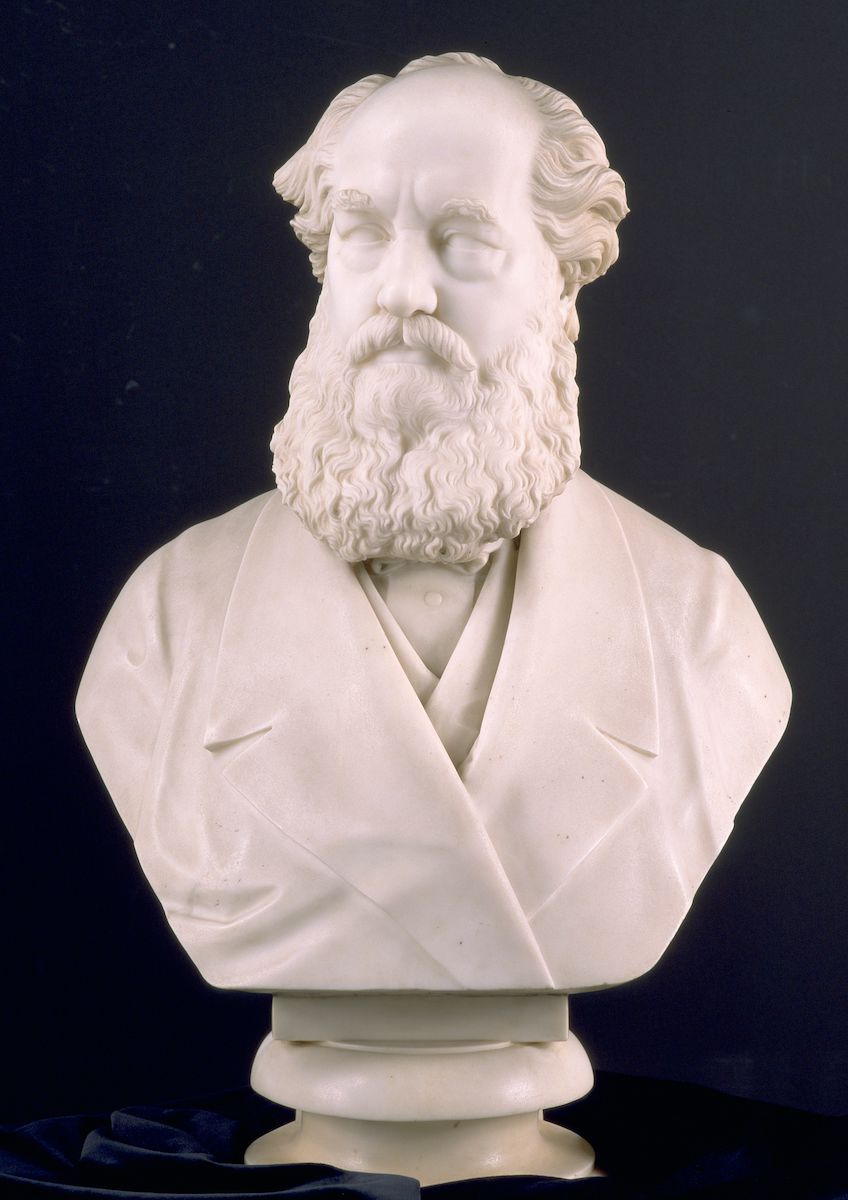
John Fairfax by Achille Simonetti
carrara marble on scagliola column
John Fairfax (1804-1877) was a newspaper publisher whose purchase of the Sydney Morning Herald in 1841 began a family association with the paper that would last for over five generations and nearly 150 years. No other newspaper in the world has been so long under one family's control and no other family in Australia has subsequently formed such a successful entrepreneurial dynasty. Born in England, John Fairfax left school at the age of twelve and was apprenticed to a printer and bookseller. In 1838 he immigrated to Sydney with his wife Sarah (née Reading). Three years later he and partner Charles Kemp purchased the seven-year old Sydney Herald and the following year renamed it the Sydney Morning Herald. In 1853 John Fairfax bought out Kemp and went into partnership with his eldest son, Charles John Fairfax (1829-1863).
Collection: National Portrait Gallery, Canberra. Gift of John Fairfax Holdings Ltd 2002. Donated through the Australian Government's Cultural Gifts Program. Accession number: 2002.76 Courtesy National Portrait Gallery (Australia)
Another work, with speculation that the figures atop them are his:
SITUATED on either side of the rose garden of Centennial Park (Sydney) are two tall, fluted columns surmounted by classical figures. The origin of the columns for many years has been disputed, some maintaining that the pillars came from the old post office in George-street. But this supposition is at once laid to rest by the fact, illustrated in Fowles' 'Sydney in 1848,' that the post-office had six Doric (plain) columns. In the same volume there is an engraving of the old Australian Museum, on the corner of College-street and facing Park-street, which possessed a pair of columns similar to those in question, one on each side of the entrance, leaving little doubt that, after the Museum was demolished in 1890 to make room for the present building, the columns were transferred to Centennial Park. Who the sculptor of the figures was is unknown, but it has been suggested that it was most likely to have been Achille Simonetti, an Italian who lived at Balmain, and died in March, 1900. This artist did much work for the Government, the Governor Phillip statue and fountain in the Palace Garden being his labour. — W.G.
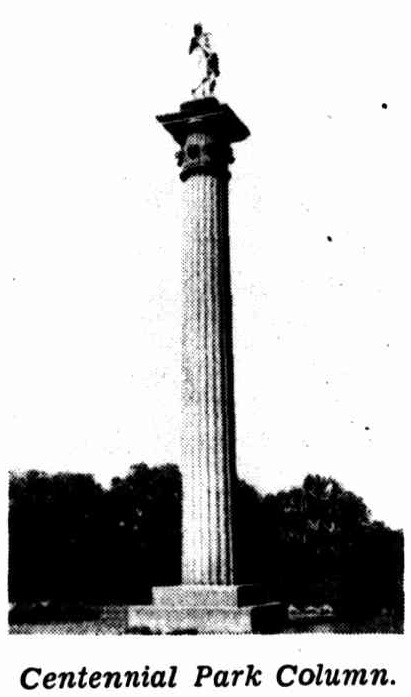
A SURVEY and SOME OPINIONS (1937, May 5). Sydney Mail (NSW : 1912 - 1938), p. 6. Retrieved from http://nla.gov.au/nla.news-article160501856
James Bonner
Passed away BONNER JAMES 4686/1916 WILLIAM ANN registered at: MANLY
MR. JAMES BONNER DEAD
SEVEN TIMES MAYOR OF MANLY
Mr. James Bonner, ex-Mayor of Manly, died at his residence, Ilfracombe, Margaret-street, Manly, yesterday afternoon, after an illness of a couple of months. He was on seven successive occasions elected Mayor of the municipality, and many good works stand to his credit. The purchase of the town hall site was a notable action. The council then had no funds, and the splendid position would have been lost to the municipality but for Alderman Bonner, who paid the deposit of £500 out of his own pocket. He was offered £1000 on his deal within a week, but he kept the property until the council was in a position to take it over. The property, which cost £5000, is now valued at £12,000. He also secured the sub-leasing of the Manly wharves from the Harbor Trust. He was president of the Manly Bowling Club for many years. Mr. Bonner was born in England, and on coming to Sydney served his time at Mort's Dock. Later on he successfully commenced business on his own account. The Globe iron foundry, Ultimo, was his property. Mr. Bonner left a widow, three sons, and a married daughter. The funeral will take place to-morrow afternoon at the Manly Cemetery.
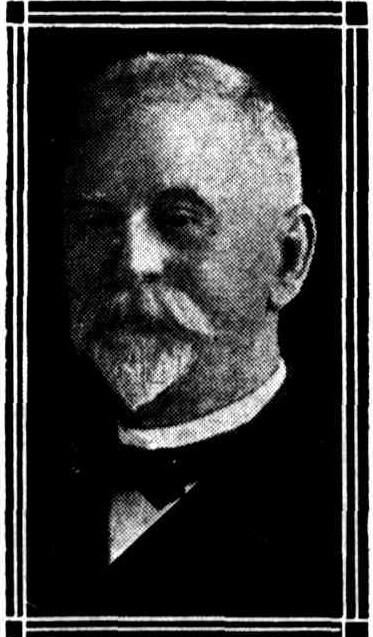
Ex-Mayor James Bonner, who died at. Manly yesterday.
MR. JAMES BONNER DEAD (1916, February 16). The Sun (Sydney, NSW : 1910 - 1954), p. 4 (FINAL RACING). Retrieved from http://nla.gov.au/nla.news-article221367422
James Bonner and Sons
Iron foundry formed by James Bonner in 1895 which purchased the Globe Iron Foundry and Glebe Foundry and operated from McKee Street Ultimo until the 1930s.
Marriage: 358/1866 BONNER JAMES ARNOLD JANE SYDNEY
Births:
BONNER ELIZABETH A 3904/1868 JAMES JANE REDFERN
BONNER SYDNEY THOMAS 4994/1873 JAMES JANE REDFERN
BONNER FREDERICK JAMES 5092/1876 JAMES JANE REDFERN
BONNER ETHEL M 2280/1878 JAMES JANE SYDNEY
BONNER ALBERT ARNOLD 3002/1880 JAMES JANE SYDNEY
Death:
BONNER JAMES 4686/1916 parents: WILLIAM ANN registered at MANLY
Wife’s death:
BONNER JANE 16774/1933 parents JOHN A HARRIETT registered at MANLY
BONNER.-July 17, 1933, at the residence of her son, No. 3 Margaret-street, Manly, Jane Bonner, relict of the late James Bonner, ex-Mayor of Manly, aged 87 years. Family Notices (1933, July 19). The Sydney Morning Herald (NSW : 1842 - 1954), p. 12. Retrieved from http://nla.gov.au/nla.news-article16992345
BONNER.-The Relatives and Friends of the late JANE BONNER are kindly invited to attend her Funeral ; to leave the residence of her son, No. 3 Margaret-street, Manly, after a short service commencing at 2.15 o'clock THIS (Wednesday) AFTERNOON for the Church of England Cemetery, Manly. T. WAUGH and CO., Funeral Directors, Tele., YU1118. 92 The Corso, Manly. Family Notices (1933, July 19). The Sydney Morning Herald (NSW : 1842 - 1954), p. 11. Retrieved from http://nla.gov.au/nla.news-article16992374
THE FRIENDS of Mr. JAMES BONNER are invited to attend the Funeral of his late beloved DAUGHTER, Elizabeth Ann; to move from his residence, Shepherd-street, Darlington, THIS (Thursday) AFTERNOON, at half-past 2 o'clock, and proceed to Camperdown Cemetery. J. and G. SHYING, Undertakers, 719, George-street South ; 120, South Head Road, near Palmer-st ; and Abercrombie-st., op. St. Benedict's Ch. Family Notices (1869, November 25). The Sydney Morning Herald (NSW : 1842 - 1954), p. 8. Retrieved from http://nla.gov.au/nla.news-article13195802
PORTRAIT OF THE MAYOR OF MANLY.
HUNG IN THE LOCAL TOWN HALL.
A representative gathering of Manly citizens assembled in the Town Hall on Friday, when an oil painting of the Mayor of Manly (Alder- man J. Bonner) was unveiled. The picture of the first citizen of the village was hung in the chamber as a recognition of his efforts in securing the building and site for the citizens. Mr. F. T. Smith presided and said they had all assembled to do honor to their chief magistrate and first citizen. It was a gratification to the committee to find how readily the people responded to help in the movement to recognise the efforts of their Mayor. The portrait, which was painted by Mr. Percy Spence, was then unveiled with musical honor and cheers. The artist is to be complimented, as the likeness is a striking one.
Other gentleman who bore testimony to the good work done by Alderman Bonner were Dr. Thomas, Dr. Harvey, Aldermen Quirk and Ogilvy, and Messrs. E. H. Millett, Thomas Hughes, Percy Spence, and A. Ralston. The Mayor, in responding, thanked the citi- zens for the honor conferred by hanging his picture in the Town Hall and said he was pleased to know that he had the good wishes of the residents. There expressions of goodwill were especially gratifying to him. A tablet was also unveiled bearing the names of those who had occupied seats in the Mayor's chair since the incorporation of the borough.
Dr. Thomas, in performing the ceremony, made an interesting speech and recounted the good work done by each occupant. The ex-Mayors who replied were Messrs. J. Cameron, A. Lear-month, J. J. Lough, C. R. Austin, F. C. Passau, and E. W. Quirk.
A silver salver suitably inscribed was presented to Mrs. Bonner, and Mr. Fred Bonner briefly responded for his mother. An enjoyable programme of vocal and instrumental items were rendered by Messrs. Fred Gray, Arthur Noble, Sag. Sergeant, Parsons, J. H. Rankin, J. Ferris, Dr. Sturges. W. J. Maling, L. Wellings, J. H. Hawkins, and Master Hawkins. The success of the gathering was due to the efforts of a committee, of which Mr. F. T. Smith was president, Dr. Thomas hon. treasurer, and Mr. E. H. Millett hon. secretary.PORTRAIT OF THE MAYOR OF MANLY. (1909, August 7). Evening News (Sydney, NSW : 1869 - 1931), p. 5. Retrieved from http://nla.gov.au/nla.news-article114774780
MANLY'S VETERAN.
ALDERMAN BONNER RETIRES.
At the Manly Council meeting the resignation of Alderman James Bonner was received. The retiring alderman, who is over 70 years of age, was elected for seven successive terms as Mayor, and resigned the chair last year, through ill-health. He, however, remained in the council, but his medical adviser recommended his giving up municipal life altogether.
That course was taken by the veteran last night, in a letter in which be thanked his colleagues for their friendship, and splendid sup-port during his seven years of mayoralty. Alderman Quirk moved that the resignation be received with regret, and that the council place on record the good work done by the ex-Mayor. The municipality owed Alderman Bonner a big debt of gratitude for his long years of zealous service, and his many public benefactions. Only for Mr. Bonner they would not be sitting in the present council chambers. The site was privately purchased by Alderman Bonner, who had the foresight to see that it was a good bargain. He paid £5000 for it, and handed it over to the council at that figure. It was now worth £12,000. He could have made £1000 out of the transaction within a week. Alderman Ogilvy, in seconding, said that Alderman Bonner had been a model Mayor. He was excessively liberal in his public capacity, and spared not time or money in advancing the interests of the municipality. Alderman Heaton, Wright, Rallton, Patison, Dumbrell, and the Mayor also voiced their regret that Alderman Bonner's health forced him to resign, and joined in testimony of his in-valuable services to Manly. MANLY'S VETERAN. (1915, February 5). Evening News (Sydney, NSW : 1869 - 1931), p. 10. Retrieved from http://nla.gov.au/nla.news-article115826029
EX ALDERMAN BONNER.
WELL-KNOWN MANLY RESIDENT'S DEATH.
Ex-alderman James Bonner, who occupied the Manly Mayoral chair for seven consecutive terms, and who was one of Manly's most progressive and popular citizens, died at his residence, 'Ilfracombe,' Margaret-street. Manly, yesterday afternoon, at the age of 71 years.
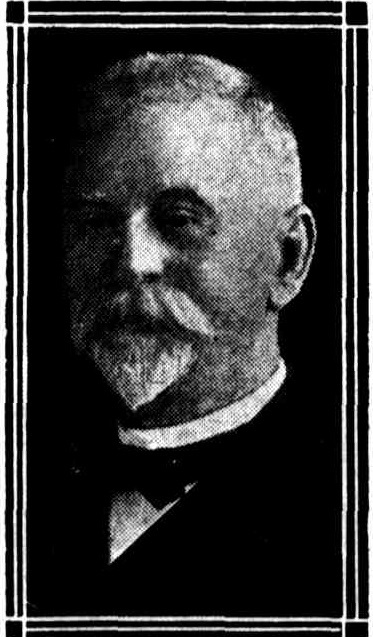
Ex-Mayor Bonner's finest work for Manly, however, was his patriotic purchase of the present Town Hall site and building. It was known that another purchaser was about, and there appeared an absolute certainly of the magnificent opportunity being lost to the council. Mayor Bonner, however, saved the situation. He bought the properly in the name of his son for £5000. and paid £500 deposit. Within a week he was offered £1000 on his bargain, but be refused the offer of this profit and kept the property until the council was in a position to lake it over. The bargain that he had made for the people of Manly can be estimated by the fact that the Council Chambers and land are now valued at £12,000. He was also well known in bowling circles.
For many years he was president, and latterly patron, of the Manly bowling Club. He was born in England, and came to Sydney as a young man, and served his time at Mort's Dock. He soon got into business on his own account, and his abilities were held in high esteem in the engineering world. Of late years he was the proprietor of the Globe Iron Foundry, Ultimo, which is now controlled by his sons. He leaves a widow and three sons - Fred, Sydney, and Arnold, and a married daughter, Mrs Rothonbury. EX ALDERMAN BONNER. (1916, February 16). Evening News (Sydney, NSW : 1869 - 1931), p. 4. Retrieved from http://nla.gov.au/nla.news-article115845677
DEATH
BONNER. — February 15. at his residence, Ilfracombe, Margaret-.street, Manly, James Bonner, ex-Mayor of Manly; age 70 years.
FUNERALS
BONNER. — The Relatives and Friends of the late JAMES BONNER, ex-Mayor of Manly, are kindly invited to attend his Funeral, to leave his late residence, llfracombe, Margaret-street. Manly. TO-MORROW, THURSDAY. at 3 p.m., for Church of England Cemetery, Manly. T. WAUGH and CO., Funeral Directors, 92 Corso. Manly. Tel., 42. Family Notices (1916, February 16). The Sun (Sydney, NSW : 1910 - 1954), p. 3 (FINAL RACING). Retrieved from http://nla.gov.au/nla.news-article221367419
DEATHS.
BONNER.—February 15, at his residence, Ilfracombe, Margaret-street, Manly, James BONNER (ex-Mayor of Manly), aged 70 years. Family Notices (1916, February 17). The Sydney Morning Herald (NSW : 1842 - 1954), p. 8. Retrieved from http://nla.gov.au/nla.news-article15653753
FUNERAL OF MR. BONNER.
The Funeral of the late Mr. James Bonner, who died at Manly on Tuesday, was one of the largest that has taken place at Manly for a number of years. The Manly Band, of which the deceased was patron, headed the cortege, and played the "Dead March" In "Saul," and Chopin's "Funeral March."
The service at the graveside was conducted by the Rev. A. C. Stoddart, of St. Matthew's Church of England, Manly, The Masonic rites were also administered.
Among those present at the graveside were Mr. T. Hoskins (Lithgow Ironworks), the Mayor and aldermen of Manly, the employees of the Ultimo Ironworks, of which deceased was the proprietor, and many representative citizens of Manly, Sydney, and the suburbs. FUNERAL OF MR. BONNER. (1916, February 19). The Sydney Morning Herald (NSW : 1842 - 1954), p. 18. Retrieved from http://nla.gov.au/nla.news-article28782039
WILLS.
In the estate of the late James Bonner, iron founder and ex-Mayor of Manly, probate of the will has been granted. He died on February 15 last, and his estate was of the net value of £12,791 11s 3d ; £5436 was realty, and the balance personal. WILLS. (1916, April 14). The Sydney Morning Herald (NSW : 1842 - 1954), p. 4. Retrieved from http://nla.gov.au/nla.news-article15649709
No. 18,408. APPLICANT:—James Bonner, Manly. LAND:—Municipality Manly, 1 rood 181 perches, on The Crescent and in Margaret-street,—lots 27 and 28, section C, Chapman's Estate, and part 17 acres, granted to Charles Chapman; adjoining properties of Mrs. B. N. Cropp and Mrs. J. Bonner. NOTICE UNDER REAL PROPERTY ACT. (1913, June 25). Government Gazette of the State of New South Wales (Sydney, NSW : 1901 - 2001), p. 3845. Retrieved from http://nla.gov.au/nla.news-article221596334
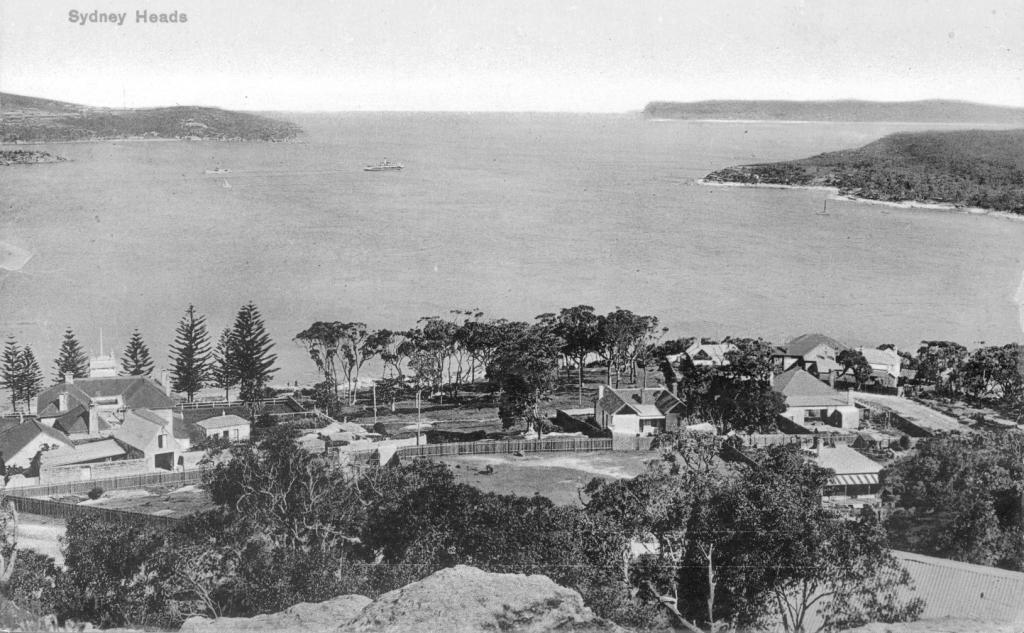
Fairlight House circa 1913 - showing rear view and outbuildings - postcard.
WILLS.
JAMES BONNER.
Probate has been granted of the will of James Bonner, Ironfounder, and ex-Mayor of Manly, who died on February 15 last. Testator appointed his sons, Sydney Thomas, Frederick James, and Albert Arnold Bonner, executors and trustees of his estate, the whole of which he bequeathed to his trustees upon trust, to allow his widow, Jane Bonner, to receive the net proceeds during her life. After the death of his widow, the trustees were to realise the estate, with discretionary power to postpone the realisation, and out of the proceeds pay £100 to Harriett Allen for long and faithful service to his family; divide £200 In equal shares among his grandchildren: and to hold the residue for themselves in equal shares. The net value of the estate was sworn at £12,791 11s 3d, of which £9993 represented the value of shares in James Bonner, Limited, voluntarily disposed of to his widow, daughter (Harriett Jane Rottenbury), three sons, and Alfred Thomas Rottenbury. WILLS. (1916, April 14). The Daily Telegraph (Sydney, NSW : 1883 - 1930), p. 9. Retrieved from http://nla.gov.au/nla.news-article238786885
In the Supreme Court of New South Wales. (2,296)
IN BANKRUPTCY.
Re James Bonner, of Hunter's Hill, iron-founder.
NOTICE is hereby given that the Single Meeting of creditors in the above matter will be held at the Registrar's Court, Chancery-square, Sydney, on the 7th day of May, 1890, at 11 a.m., or as soon after as the course of business will permit. To entitle a creditor to vote thereat, his proof must be lodged with the Registrar in Bankruptcy, not later than the 3rd day of May, 1890.
ARTHUR HENRY,
Registrar in Bankruptcy. Official Assignee—Edward Milner Stephen. IN BANKRUPTCY. (1890, April 25). New South Wales Government Gazette (Sydney, NSW : 1832 - 1900), p. 3389. Retrieved from http://nla.gov.au/nla.news-article222116945
[Notice of Application for a Certificate of Discharge.]
In the Supreme Court of New South Wales. (2,296)
IN BANKRUPTCY.
Re James Bonner, of Woolwich, Hunter's Hill ; ex parte James Bonner.
To the Official Assignee and Creditors.
TAKE NOTICE that I, James Bonner, intend to apply to His Honor the Judge in Bankruptcy, at the Court, Chancery-square, Sydney, on Wednesday, the 27th day of August, at 11 a.m., or as soon afterwards as the course of business will admit, that a certificate of discharge be granted to me, under and according to the provisions of the Act 51 Victoria No. 19.— Dated this 6th day of August; 1890.
JAMES BONNER. IN BANKRUPTCY. (1890, August 8). New South Wales Government Gazette (Sydney, NSW : 1832 - 1900), p. 6218. Retrieved from http://nla.gov.au/nla.news-article224318654
House at: 51 & 53 Woolwich Road Hunters Hill 2010 - GP: Grant: NSW Property Investment Company-CT552-131 (1881) trans James Bonner 1882; CT704-171(1884) J Bonner, 1889
THE CITY IRON WORKS.
A few months since we noticed the commencement of an extensive establishment at Pyrmont for working up wrought-iron scraps into merchant bars and other descriptions of iron in constant demand. The works have been for some time past in active operation, and a return is now yielded upon the Urge outlay that has been incurred. "We have pleasure in calling attention to the starting of a new factory of this kind as being on addition to the manufacturing resources of the city, and as affording a source of profitable employment. The new establishment - which has been called "The City Iron-rolling Works"- is the property of Mr. Alexander Brown, formerly of Newcastle, and is under the management…
The site of the City Iron Works is a portion of the Ultimo Estate at Pyrmont, immediately contiguous to the Glebe Island bridge, Mr Brown having obtained a lease of several acres of land from Mr John Harris. A portion of the land of sufficient size for the works now commenced having been levelled, a substantial shed eighty feet by seventy, with a galvanised iron roof, was erected, and a wharf was built, running the whole length of the works, well piled and planked, and having a depth of eighteen feet of water.
The principal operation at the City Iron Works is the working up of scrap iron into merchant bars, dray axles, engine forgings, shafts, and other implements in common use. Hitherto, until the election of rolling mills at the Fitzroy Iron Works at Mitta-gong, nearly all the refuse iron has been thrown away and wasted, and we believe that for several months past no scraps have been worked up at Mittagong. In the prospect of his works being brought into full operation, Mr Brown has purchased all the scrap iron he could obtain, and there are now collected more than six hundred tons, which have cost from 35s to £3 per ton the extensile heap of old iron presents a curious conglomeration of steamers' boilers, cask hoops, horse shoes, nails, saucepans, kettles, and other domestic utensils, which arc destined, After undergoing certain changes of form, to serve other purposes equally useful The collecting of these scraps affords occupation to the class of boys known as " street Arabs," who bring round their gatherings sometimes in barrows, and some-times in their hands.
The apparatus at present In use for working up scrap iron consists of three scrap furnaces connected with an underground flue lending into a shaft built of brick, seventy feet in height, one of the furnaces works through an upright boiler that supplies steam, for a steam hammer The latter is one of " Coondie's Patent," it differs in principle from the well-known steam hammer of Nasmyth, in the cylinder forming part of the hammer instead of being stationary at the top, the steam being admitted through the piston rod A quantity of scrap is put into the furnace, and after being exposed to the heat for about half-an-hour, during which time the scraps have partially amalgamated, the mass is taken out and immediately hammered into what is called a bloom, the name having been given on account of the colour of the surface resembling that of some kinds of fruit The blooms arc afterwards again put into the furnace , when thoroughly heated They are taken out, and while red hot are hammered or rolled into the required shapes-the scraps being by this time thoroughly Interacted and welded together These processes were for some time in operation for the manufacture of axle-arms for drays, of which altogether about fifty tons were turned out. At present The principal operation in progress is the rolling of merchant bars, which can be made either flat, angular, or round. Two pairs of rollers are used in each process in rolling merchant bars. In the first process called bolting rolls, the openings are angular, and those in the other are square, gradually diminishing in size. The bloom of red hot iron, on being taken out of the furnace, is passed rapidly in succession through these openings, by which it is gradually compressed and stretched out until, as it leaves the rollers in the form of a merchant bar, it is about fifteen feet in length , it is then laid out on an Iron plate, where it straightens and cools. A similar process is adopted in rolling angle iron, of Which a large quantity has lately been turned out.
The rolls, of which there are eighteen pairs, were cast at Messrs P N Bussell and Company, and were turned st the City Iron Works, on a lathe constructed purposely, driven by an engine of six-horse power.
In addition to the above, a mill for rolling all kinds of boiler plates is about to be erected, the machinery being ready on the ground. There is also to be a steam saw for cutting off the ends of the bars.
Both the boiler-plate mill and the merchant bar mill ore driven by a fifty-horse horizontal engine, the flywheel of which weighs about tight tons. The engine was made in England, by Messrs bands and Vivian, and its importation was one of the unfortunate of speculations of the Melbourne Provident Institute. Besides the furnaces already in use, two others are in course of construction f r puddling pig iron for the mills, the chimney shafts for those are upright boilers, twenty-four feet in height, which economise fuel by generating steam by means of the furnace fires.
Some of the operations that are being carried on at Mr Brown's factory have not hitherto been started in the colony. So far, therefore, from its coming into competition with the other large establishments, the City Iron Works can supply them with many descriptions of iron which they have had to import, and of which they have to keep expensive stocks. The production of iron bars at the City Iron Works is at present about twenty tons a week on single shift. THE CITY IRON WORKS. (1865, October 21). The Sydney Morning Herald (NSW : 1842 - 1954), p. 9. Retrieved from http://nla.gov.au/nla.news-article13120659
Smallpox during the 1880's saw people sent to the Quarantine Station at Manly:
THE CASE AT ULTIMO.
In consequence of the inclemency of the weather yesterday the patient Mrs. Bonner was not removed to the quarantine station. It was deemed expedient by the authorities to await a more fitting* opportunity, and one when the waters of the harbour are running not so high as on yesterday and this day. THE CASE AT ULTIMO. (1881, July 13). Evening News (Sydney, NSW : 1869 - 1931), p. 2. Retrieved from http://nla.gov.au/nla.news-article107222355
Husband died few months prior – same parents as James Bonner - among other Bonners at Redfern dring this era:
BONNER JOHN 4577/1880 WILLIAM ANN WATERLOO
Funerals.
THE FRIENDS of the late Mr. JOHN BONNER are respectfully invited to attend his Funeral ; to move from his late residence, Cloncurry House, Botany Road, Waterloo, THIS (Friday) AFTERNOON, at half-past 1 o'clock, to Necropolis. W. and H. KINSELA, George-st., op. Christ Church, and Oxford-st.
THE FRIENDS of Messrs. JAMES, CHARLES, and GEORGE H. BONNER are respectfully invited to attend the Funeral of their late beloved brother, Mr. JOHN BONNER ; to move from his late residence, Cloncurry House, Botany Road, Waterloo, THIS (Friday) AFTERNOON, at half-past 1 o'clock, to Necropolis. W. and H. KINSELA, Oxford-st., near Crown-st.
G. U. O. O. F.—The Officers and Brethren of the SONS OF FRIENDSHIP LODGE, together with the Officers and Brethren of the various Lodges, Sydney District, are respectfully requested to attend the FUNERAL of their late departed Brother, JOHN BONNER, N.F. ; to move from his late residence, Cloncurry House, Botany Road, Alexandria, THIS DAY, at 2 p.m. JAMES WRIGHT, N.G. Family Notices (1880, November 12). The Sydney Morning Herald (NSW : 1842 - 1954), p. 12. Retrieved from http://nla.gov.au/nla.news-article13476028
The Case of Mrs. Bonner and Family.
We have ascertained the following facts in regard to Mrs. Bonner and family :— On or about July 11 the house of Mrs. Bonner, Harris-street, Ultimo, was declared an infected house, and was quarantined. The shutters of the shop were closed, and an iron palisading was placed in front of it, enclosing the pavement. This was painted yellow, and a large notice appended to it, stating that the house was infected with small-pox, and cautioning people against approaching the premises. A man was placed in charge of the premises to prevent any communication with the inmates. Five days afterwards a woman was places in the house to look after the inmates, consisting of Mrs. Bonner and five children, viz., four girls, aged respectively 13, 9, 2 years and eight months, and one boy aged 5 years. On Saturday, July 16, Mrs. Bonner was removed to the Quarantine Station. She was required to leave her clothing in the house, as it was stated that the clothing and bedding used by her were to be destroyed. Five weeks have elapsed and these things have not been destroyed or removed, nor has the house been in any way purified or disinfected, and the children are still confined there. House refuse and sweepings have never been removed from the yard during all this period. The accumulated rubbish still remains, and the goods in the shop, &c. have never been fumigated.
An elderly gentleman entered the back yard and vaccinated all the children. He called afterwards and was told that the operation was not effective with either of the children. He then promised to call the next day and see to it. This occurred three weeks ago, and yet the operator has not called, nor has any person visited them excepting the man in charge of the place. The woman in charge (or nurse) complains bitterly of the treatment, and in the presence of the attendant or custodian of the premises, said this morning, 'The way we are left here is simply disgraceful, and if we were dogs we could not be treated worse,' &c. The drainage at the back of the yard is very bad, and nothing is being done to remedy it. from the above it appears that five children have, for five weeks, been confined in a house declared to be infected ; that they are all still unvaccinated; that no medical aids or responsible person has called for three weeks; - that the infected clothing and goods and furniture are still in the house that no fumigating process has yet been' performed ; and that the nurse in charge is weary of the place and dissatisfied with this treatment. Now, what is known by the children and their friends of the unfortunate mother.
A telegram was received from Mrs. Bonner, dated Quarantine Station, August 5, in which she says: — 'I am well, have not had small-pox;' and since them another message, saying ' Dr. Clune states that I have not had the small-pox.' She is not permitted to write, and this is all the children know of their mother. She is not even in the list of convalescent patients. When is she to be released? Whoa are the children to be set free? How is the mother to support herself and children when released? Her means of livelihood have been taken from her. Her late husband was a respectable and worthy young man employed in the Railway Department for 20 years, and died after a short illness, leaving a widow and seven young children. Two gentlemen in the country have each adopted a child, leaving her five to provide for. She is a woman of independent spirit, and unwilling to allow any of her children to be placed in a public institution, (preferring to work and struggle hard to keep then about her. Her husband’s life was insured fora small sum, which she invested in the business in Harris-street, and also took in boarders, to assist her in Housekeeping. Doubtless the labour and anxiety connected with her circumstances caused her health to break down. She caught a bad cold when excessively fatigued and debilitated with hard work and nursing her infant, an eruption appeared, and the result has been enumerated in this brief statement. The Case of Mrs. Bonner and Family. (1881, August 16). Evening News (Sydney, NSW : 1869 - 1931), p. 3. Retrieved from http://nla.gov.au/nla.news-article107221747
Department of Public Works,
Sydney, 26th November, 1900.
TENDERS have been accepted for the following Public
Works for the week ending 24th instant:—
Railway Construction Works— Manufacture, &c., Six 20,000-gallon Cast Iron Water Tanks, with Swinging Jibs, and Six Steel Tank Stands—James Bonner & Sons, Ultimo. Government Gazette Tenders and Contracts (1906, November 28). Government Gazette of the State of New South Wales (Sydney, NSW : 1901 - 2001), p. 6491. Retrieved from http://nla.gov.au/nla.news-article226477561
CRANE-DRIVER KILLED.
HANDLE SMASHES SKULL.
Joseph Kirby, a driver of a travelling crane at James Bonner and Sons, engineers, M'Kee-street. Ultimo, was killed this morning. He was working the crane, which was carrying about a ton of iron, when the handle of one of the wheels got out of control, and struck him on the head, crashing his skull. Kirby fell 20ft. on to a heap of Iron, and when picked up was dead. He was married, and up till a week ago lived In Annesley-street,' Leichhardt. CRANE-DRIVER KILLED. (1913, May 28). The Sun (Sydney, NSW : 1910 - 1954), p. 4 (FINAL EXTRA). Retrieved from http://nla.gov.au/nla.news-article229833322
CASUALTIES.-
ULTIMO FATALITY.
At about 10.30 a.m. yesterday Joseph Kirby, 27, a winchman, was working on the platform of a moving crane at James Bonner and Sons' Ironworks in Mackie-street, Ultimo, when he lost his balance. A minute later he was picked up from some iron on the ground in a semi-conscious condition. The Civil Ambulance was summoned, and Kirby died from injuries to his head on the way to Sydney Hospital. CASUALTIES. ULTIMO FATALITY. (1913, May 29). The Sydney Morning Herald (NSW : 1842 - 1954), p. 10. Retrieved from http://nla.gov.au/nla.news-article15423431
SERIOUS THREAT TO INDUSTRY.
If the engineering shops close, about 10,000 additional men will be rendered idle, and a serious dislocation of kin-dred businesses, both manufacturing
and retail, will take place. In effect, the metal trade industry will be paralysed.
It was estimated yesterday that most gene-ral engineering firms will manage to carry on until the end of the week with the supplies on hand, but they will quickly become affected next week If the dispute continues.
The threatened tie-up of the metal trade Industry will be brought to a head very soon if the mass meeting of engineers on Saturday decides to withdraw its members. It is known that the militants favour an Immediate general strike, arguing that, as a matter of tactics, it would be better to stop work than be forced into idleness by the gradual closing down of workshops.
CLOSED AT 5 P.M.
Swift action was taken by the Metal Trades Employers' Association yesterday to give effect to their ultimatum that foundries would close at 5 p.m. unless the metal trades award was observed.
During the afternoon the following notice was posted In all foundries: "The management announces with regret that, owing to the breakdown in negotiations with your officials, work will cease at 5 o'clock, at the usual stopping time, pending a general trade understanding about the acceptance of the
Federal metal trades award."
It was felt In some quarters that an eleventh hour move for a compromise might be made, or that perhaps Intervention by the Court would prevent the deadlock. When the notices appeared there was a general realisation that a serious hold-up of the In-dustry was certain. Work ceased at 5 o'clock.
FOUNDRIES NOW IDLE.
The larger foundries which closed down last night were:
Clyde Engineering Co., Ltd.
Cockatoo Docks and Engineering Co., Ltd. John Heine and Co., Ltd., Leichhardt.
Gibson, Battle and Co., Ltd., Waterloo.
Electricity Meter Manufacturing Co., Ltd., Waterloo.
McLean and Scorer, Ltd., St. Peters.
Malleable Castings, Ltd., Marrickville. Metters, Ltd., Alexandria.
Gordon Marr and Sons, Ltd., Waterloo. Taylor and Wearing, Redfern.
Andrew Thomson and Scougall. Ltd.. Alex-andria.
Watson and Crane, Ltd., Camperdown.
Westinghouse Sales and Rosebery. Ltd..Waterloo.
Other foundries which closed Included the following :--
Advanx Tyres, Rushcutter Bay ; Ascot Iron Foundry, Botany-road; Babcock and Wilcox. Ltd., Regent's Park; Bird and Lucas, Ltd., Glebe; James Bonner, Ltd., Ultimo; Bradley Bros., Ltd., Fivedock; Bramwell and Vincent. Ltd., Newtown; Brogan and Treacy, Alexandria; Brown and Brown, Ltd., Pyrmont, Frank Callinan and Sons. Botany; John Danks and Son Pty., Ltd., Alexandria; A. P. Donney and Sons, Marrickville; W. B. Eastaway and Co., St. Peters; Geo. E. Fortescue and Sons, Ltd., Arncliffe; Geo. Foster and Sons Ltd., St. Peters: T. Green and Co.. Ltd., Camperdown, Halliday Bros., city; Oscar Harvey and Co., Ltd., Waterloo; Howcroft and Doze, Waterloo; T. J Jay. city; Julccf and Sons, Ltd., Redfern; The Keech and Wise Engineering Co., Ltd., Marrickville; Kingston Foundry, Ltd., Marrickville; Kookaburra Retread Equipment. Auburn, Leichhardt Foundry, Ltd.; H. C. Linder, Alexandria; J. W. Mann, Kogarah; Mascot Engineering Co., Alexandria; V. Meyer. Marrickville: Milton Foundry. Granville: The Oliver Manufacturing Co., city; The Parker Foundry, city; Progress Foundry, Waterloo: Purcell Engineering Co., Ltd., Auburn. Shelley Bros., Auburn; Staveley Iron Foundry Co., Leichhardt; Triangle Foundry, Ltd., Marrickville; United Brass Founders, Ltd., Alexandria: James Ward, Ltd., Surry Hills; Sidney Williams and Co. Pty., Ltd., Dulwich Hill.
STOVEMAKERS AFFECTED.
The first body of workers not parties to the dispute who were affected immediately were about loo bath enamellers employed at Metters, Ltd., the Clyde Engineering Works, and Richard Foreman and Son, Ltd, Marrickville. The bath enamellers are members of the Stovemakers' Union, and a special meeting of the union has been called for Saturday to review the position Another body of workers likely to be affected almost Immediately and the enginedrivers who, also, have no dispute with their management.
EMPLOYERS CRITICISED.
"There is a militant aroma in the Industilal air," said the secretary of the Ironworkers Union, Mr C. Tannock, MLC, yesterday Mr Tannock, who is one of the leaders in the dispute, sold that the employers' union had organised a strike.
"We will not squeal to the Arbitration Court about their strike as they have squealed against us," he said. "We will not apply to the Court for the deregistration of their association because their members have gone on strike " SERIOUS THREAT TO INDUSTRY. (1937, March 18). The Sydney Morning Herald (NSW : 1842 - 1954), p. 11. Retrieved from http://nla.gov.au/nla.news-article17353117
Manly Life Saving Club is one of Australia's oldest Surf Life Saving Clubs, founded in 1911 ... The current club President is actor Tony Bonner, a grandson of James Bonner. Serving others carried over the generations!
Mr Bonner of the current generation is a very successful thespian who has been recognised for great work that spans decades. His father, Frederick Bonner, was a musical comedy actor at Her Majesty's Theatre in Sydney.
John Woods
DISSOLUTION OF PARTNERSHIP.
NOTICE is hereby given, that the Partnership hitherto existing between the undersigned, as Carriers, Contractors, Forwarding and Shipping Agents, in New South Wales and Queensland, under the name, style, and firm of "Woods, Shortland, Fox, & Co.," has this day been dissolved by mutual consent. The Sydney branch will be continued by Messieurs Woods, Shortland, and M'Mahon, as " Woods, Shortland, & Co.," and the Queensland Branch by Messieurs Fox and Adair, as " Fox & Adair."
JOHN WOODS.
RICHARD SHORTLAND, By his Attorney, John Woods.
JAMES M'MAHON,
By his Attorney, John Woods.
GEO. FOX.
16th August, 1870. WILLIAM ADAIR.
Witness—John F. Rae.
All parties having claims against the late firm will please render the same for liquidation without delay, and all parties indebted will please pay their accounts.
WOODS, SHORTLAND, & CO.,
Offices, Railway Station and Circular Quay. DISSOLUTION OF PARTNERSHIP. (1870, September 13). New South Wales Government Gazette (Sydney, NSW : 1832 - 1900), p. 1968. Retrieved from http://nla.gov.au/nla.news-article223531814
John Woods – owner of the old Clarendon Hotel
John Woods born at Castleblayney, County Monaghan, Ireland in 1828; his parents were named Moses and Nellie. Woods arrived to Sydney with his wife Margaret in 1853, where he started a carrying business. Woods died at ‘Leona’, Manly, on 13 July 1904, after a paralytic fit followed by a fall from his carriage. He had nine children. An obituary in the Sydney Morning Herald noted that he was one of Sydney’s oldest residents, and had celebrated his golden wedding anniversary in 1903.
In April 1858, with Thomas McKeown and James Smith he was granted a council contract for the emptying and cleansing of privies throughout the City. At this time he was a dray contractor of Bullanaming (now Renwick) Street, Redfern. He also became an agent joining Thomas McDonald to form Woods & McDonald, agent for carriers, at 25 Campbell Street. He later founded the carrying company called Woods, Shortland & Co. By 1873 this company had expanded and was based at Glenfield, Liverpool. In 1861 Woods’ address as a contractor was in Redfern but by 1863 had moved to the Corso, Manly Beach. In 1873, he was living at The Esplanade, Manly Beach. In 1880 he bought Fairlight House, built for Henry Gilbert Smith in 1854. Woods added the distinctive tower and porch in the early 1880s. He caused a public protest when he attempted to buy the public reserve in front of his house for private use in July 1882.
From 1876, John Woods was a Director of the Port Jackson Steam Boat Company, becoming Chairman in 1882. In 1877 he received a presentation for his services to the Co-operative Fire Brigade. He was Returning Officer for Manly Council in February 1877 when fellow city Alderman Thomas Rowe was returned as first Mayor. In 1883 he was the first chairman of the Manly Gaslight and Coke Company.
John Woods was elected to Sydney City Council as Alderman for Denison Ward from 1 December 1860 to 1 December 1872. Woods was Mayor in 1865.
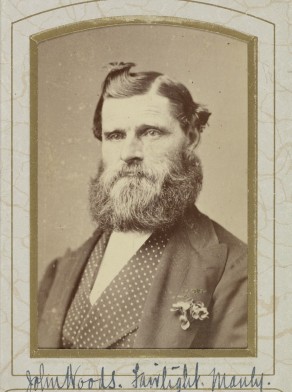
John Woods (Mitchell Library, State Library of NSW)
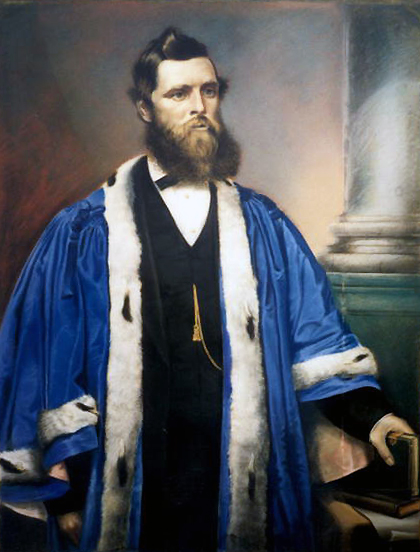
Alderman John Woods, Mayor of Sydney 1865, unknown artist (City of Sydney Civic Collection, Accession No: 1988.376)
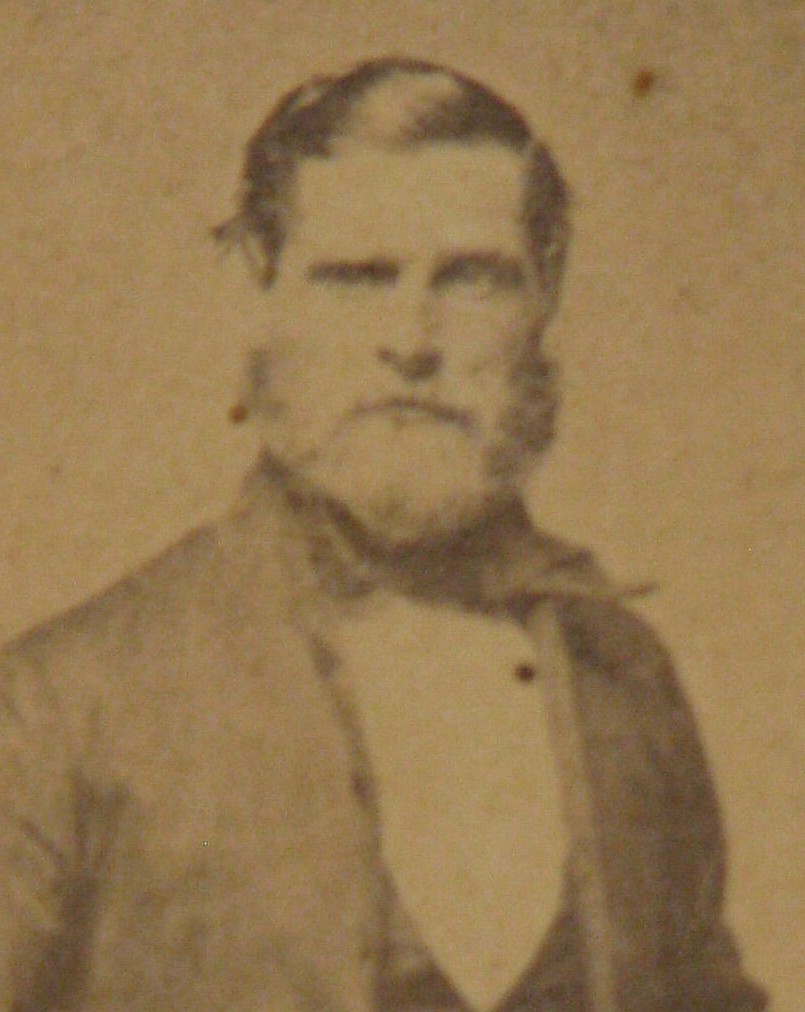
John Woods when an Alderman of Sydney (Mitchell Library, State Library of NSW)
MANLY PRESBYTERIAN CHURCH.
The pretty marine suburb, Manly, is to receive a very welcome addition to its church architecture in the form of a very handsome stono church for the accommodation of the Presbyterian community. Perhaps no site commanding a more charming prospect could have been chosen than the one where the edifice is to be erected.
Overlooking the park, the view takes in the entrance to the port, and then look out to sea over the ocean beach. The building, which is to be erected in two sections consists of a nave 34ft. 6in. in width by 74ft. in length, transepts each 14ft, deep by 23 ft. wide, and pulpit and organ recess measuring 17ft. deep by 25ft. wide. These, together with the necessary vestries and sessions-room, will be added when the increased congregation renders an enlargement desirable. The present accommodation will allow for 266 adults, and the total will be for 594 adults. The pulpit platform is to be central, and everyone will be in view and hearing of the preacher, as there arc no intercepting columns and the length of the building is moderate. Further, the floor of the nave is to be laid to a slight slope, thus affording a better view of the pulpit.
Externally the principal feature will be a square tower covered with a pointed roof rising to a height of 93ft. from the ground, and a handsome porch attached thereto forms the principal entrance. The second entrance is obtained at tho western side of the front, both accessible from tho main . street in front of the site. These porches arc so arranged as to check draughts in the winter. The main gable is occupied by three large and handsome windows, to be filled with stained glass, and the flank walls ave pierced by smaller windows, with special ventilating openings ornamentally treated above the same. The transepts are also marked by bold two-light windows and the vestries and sessions-room are lighted by windows especially designed to suit their respective purposes.
The site being on the rugged flank of a hill and the church being visible from n considerable distance the architect (Mr, John Sulman, F.B.I.B.A.) has designed the building in the Romanesque style, as best harmonising with the surroundings. The out-line will be bold and vigorous but the detail refined. The walls are being constructed entirely of white stone given by Mr. Broad and the roofs will be slated. Internally the roof principals will be treated very ornamentally and form an attractive feature. The details of lighting, ventilation and acoustics have been carefully studied, and in each respect it is anticipated that a perfect success will be obtained. The seating of the church will be a gift from Mr. J. Wood, of Fairlight. The contractor is Mr. D. M'Rae.
The ceremony of laying the foundation-stone was performed on Saturday afternoon under must favorable auspices by Mrs. J. H. Goodlet. There was a large assemblage of ladies and gentlemen, among those present being Mrs. Steel and Gilchrist, Revs. A. Miller, It. M'Kinnon, J. Walker, C. Moon and Kamblin (Western Australia), Messrs. T. Littlejohn, C. ft. Have, J. Broad, ,J. Patterson, G. Littlejohn, W. J. Lj-uo, jr. P., W. J. Vivian, J. Cameron (Mayor of Manly), Miller, J. A, Dean, M'Pherson, J. Sutherland, Candlisb, and Alderman Dean.The The proceedings began by the pastor, the Rev. T. J. Molyneux, MA., L.L.B., delivering an address, in the course of which he briefly sketched out the origin of the church at Manly some four and half years ago, when he was sent to the district by the church extension committee.
After a year's pastorate a site was promised by the late Mr. Smith. The church that was now to be built was estimated to cost £0700, and towards that £1100 was in hand while threre were two promises of' further subscriptions upon certain conditions. Dr. fciteel then offered up the dedicatory prayer, after which Mrs. Goodlet laid the Stone, in the cavity of which was deposited a tin case obtaining copies of the annual reports of the church for the past three years and the metropolitan and local papers of the day. Instead of the usual silver presentation mallet and trowel, an illuminated address, bound in morocco and very tastefully got up by Mr. John Sands, was presented to Mrs. Goodlet by Mr. T. Littlejohn on behalf of the congregation. T... Mrs, J. H. Goodlet by the congregation and members of the Manly Presbyterian Church on the occasion of her laying the foundation of the building on Saturday, April 15, 1889.1! Brief addressees were then delivered by Mr. Littlejohn, thanking Mrs. Goodlet for her attendance, and by Dr. Gilchrist. The offerings on the stone amounted to the handsome sum of £485. The ceremony concluded with the pronouncing of the benediction by the Rev. It. M'Kinnon, after which the company adjourned to tho rear of the pavilion in Manly Park, where afternoon tea and other light refreshments were served. MANLY PRESBYTERIAN CHURCH. (1889, April 15). The Daily Telegraph (Sydney, NSW : 1883 - 1930), p. 6. Retrieved from http://nla.gov.au/nla.news-article235868922
Manly and Its Churches.
(BY PEREGRINE.)
(See illustrations on this page.)
Manly is always lively, always a pleasant place to go to. When I last visited it, it was for the purpose of having a look at its churches and giving some idea of the work of a religious kind which goes on in the place.
I don't know why grotesque ideas should come into one's head at odd times, but as the Fairlight drew near the pier the old conundrum about Robinson Crusoe came into my head : " Who were the first persons he saw when he landed at Juan Fernandez ? A great swell on the shore, and a little cove running in." At Manly I could see 'many great swells on the shore, and lots of little coves ; but they weren't running in, they were perched upon the end of the pier, earnestly pursuing the craft of those who Beguile the finny tribe, and draw to land.
I watched the youngsters for a bit, and quite envied the joy which shone upon the juvenile face as a wretched little whiting, no bigger than a sprat, rewarded the tiny fisherman's toil.
Perhaps the prettiest street in Sydney or its suburbs is the "Corso" at Manly, with its grand row of trees running down the middle, its bright shops on one side, and its pretty church and modest grammar school on the other, it has a kind of " boulevard " look which is pleasant. By ' the way, talking of " boulevards," I wonder how many people know that it is really the same word as " bulwark," and means the same thing. From the fact that the fortifications on the walls of ancient cities were broad and elevated, and so became a favorite promenade, the word began to be applied to great and wide streets, and hence its modern meaning.
The Church of St. Matthew's is a pretty and substantial stone edifice in the Gothic style. As yet only nave and transepts are built, but some day, it is hoped that a chancel may be added, which will relieve the congestion at the eastern end of the church. I am afraid that in my illustration I have injured the feelings of the corporation, for I have knocked down a lamp post or two and a couple of fenced-in trees. I had to do it, for otherwise I could not show the church, and grammar school as I should wish.
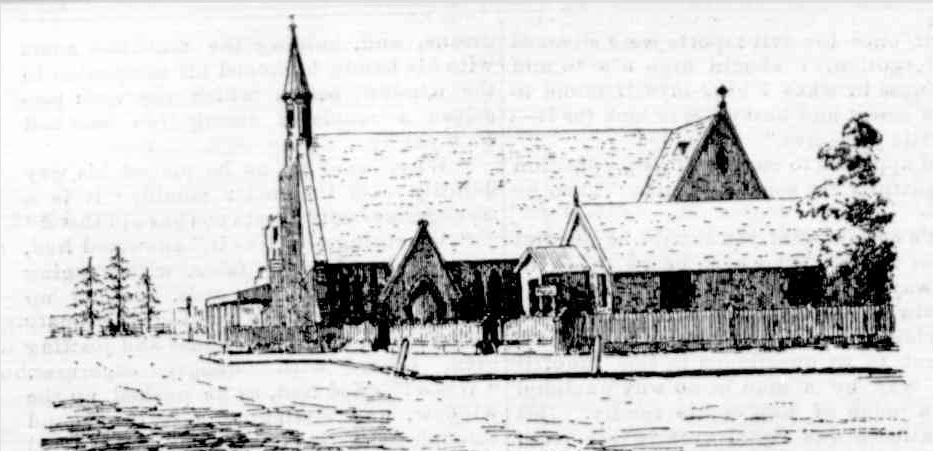
1.- St. Matthew's Church and Grammar School, Manly.
The incumbent of the parish is the Rev. E. S. Willis, and his district extends far beyond the precincts of the charming town of Manly. There is a large out-parish attached to the cure, which includes the beautiful district of Pittwater, and also Middle Harbor, Newport, Greendale, and a few other minor places. All these have to be served from the central church, so that the aid of a curate is necessary, in order that the duty may be effectively and regularly done. The incumbent is a hard worker, a good man of a good school, is beloved by his people, and goes on his way doing good work in a quiet, earnest way, an excellent type of an Anglican parish priest. There are the usual Sunday services, a weekly celebration of Holy Communion, and also Holy Communion and other services on holy days in great festival.
The services at this church are on Sundays or great festivals, fully choral ; there is a surpliced choir of about 30, and the service of the church is well and reverently sung. There is not a parish in Sydney or in the suburbs where the service is better than that of the cathedral, hardly one where it is so good. This is owing to the .distinguished ability of the organist, Mr. Alfred Pooley, and the unremitting labor which he and his musical wife ex-pend in the instruction of the members of the choir. I do not know a church in the neighbor-hood of Sydney into which it is such a pleasure to go, and I can only say that if the many week-day toilers, who make Manly their Sunday resort, were to avail themselves of the services of S. Matthew's, they would not only be charmed by the rendering of the good old liturgy of the church, but have their day of rest made more restful by the enjoyment of hallowed and melodious worship.
The plain though substantial building: which stands at the corner of the street is the Church of England Grammar School. It is under the charge of an able and efficient master, Mr. A. A. Gailey, a graduate of the University of Dublin, and I am told that since his appointment to it both attendance and efficiency have increased. The schoolhouse is used as a Sunday school, and there is also a service for the children every Sun-day at 11 o'clock. Here, in beautiful Manly, .religion and education go hand in hand, to the great advantage of the boys of the place.
The Congregational place of worship is in rather an awkward position for a sketch. If one tries to get at it from the side leading from the park, a great wall cuts out the half of it, if from the opposite side it is half hidden by the pastor's house, so there is nothing for it but to take it from the front, so sitting on the door step I get it in, quite conscious that the acute perspective takes from its claim to be picturesque. It is a goo'd structure of that type of Gothic known as Early English, the simplest, and in many ways the most useful of all the Gothic styles. I was given to understand that the church and its agencies were well worked by the present pastor, the Rev, P. Warner, whose name is a guarantee for energy and ability.
.jpg?timestamp=1558906553655)
2.-Congregational Church, Manly.
There are good Sunday schools, and many valuable agencies for good, with frequent services on Sundays and week days, and a go-ahead spirit of earnestness about everything connected with " Independency " in Manly.
The Wesleyans have a neat, wooden place of worship, and the Roman Catholics are building a magnificent church. The walls are up, and it is being roofed in ; but I did not sketch it, preferring to wait until some future day, when I should see it in all the beauty of completion.
But by far the most beautiful ecclesiastical structure in Manly is the Presbyterian "Kirk." I wish I could have done it more justice, but the fact is that its commanding position on the hill at the back of the town renders it necessary to sketch it from some little distance. Seen from the road which cuts the park at right angles, it makes a very pretty picture indeed, with its background of gum forest and rock. These serve to throw out its noble proportions and graceful architecture into bold relief. As my .readers will see for them-selves, it is built in the best Italian style-that charming combination of Romanesque and Nor-man which, with Renaissance modifications, makes' buildings of this type appear so graceful, strong, and captivating.
.jpg?timestamp=1558906522861)
3- Presbyterian Church, Manly.
The minister is the Rev. Dr.Molyneox, who has a high reputation as an eloquent preacher, a faithful pastor. Not far from the church is the new manse, a very fine house, indeed, which owes its existence in its present condition to the generosity of the Presbyterian squire, Mr. J. M'Gaw, of Daily's Castle, who has given most of the money for its erection.
I understand the services are good and well attended, and that the choir is efficient and well trained. - There is a magnificent three manual organ, by Hill and Son, on its way out from Eng-land, which is also a fruit of the liberality of Mr. M'Gaw ; when, what the old Presbyterians used to call " the kist o' "whustles " comes, no doubt ! the services will be still more harmoniously tendered.
After all labor there is rest, so, my sketching ended, I am glad to take shelter from the Bun under one of the trees on the Ocean Beach, and to enjoy the freshness of the sea and the beauty of the loveliest coast line about Sydney. Chat-ting to a friend, who is an invalid for the time being, and has to be wheeled to the beach in a chair, he tells me an amusing story of misdirected religious energy as regards himself. One day as he Bat in his chair on the beach, a very mature and solemn-looking female came up to him, and after a few patronising, district visitor kind of remarks, put a tract into his hand, and went away to try her hand on some one else. When my friend opened the precious "menage of peace," he found several pages of very poor doggerel, which the good woman had selected as forcibly applicable to his case. The opening lines were :
Alas! alas! and here I Bit, A worn-out. useless thing, which, considering my In end isn't 80 yet, was just a bit too rough. If the zealous tract distributor had only known that " my poor man" had a " handle to his name as the brother of a peer of the realm, I think she would have had a fit. My friend actually had a fit on the strength of it, but it was a fit of the most uproarious laughter, which not even the righ-teous indignation of his charming wife could restrain.
It was pleasant to sit there as the afternoon grew into evening, the soft thunder of the bil-lows on the beach making music in our ears, and the fresh sea breeze pouring ozone into our lungs. Pleasant! too to talk of the ancient town by the Cam, which we both knew well and loved. Pleasant to recall funny stories of the red-bearded Hussar of Downing, and of the eccentricities of "Joey P." But inexorable time calls us away from the contemplation of the loveliest beach in Australia, and from happy memories of the classic fen-land town, and the "Brighton" takes me back through golden scenes of sunset beauty to the city, with the sense of peace and rest which always follow another pleasant day at Manly. Manly and Its Churches. (1892, April 9). Australian Town and Country Journal (Sydney, NSW : 1870 - 1907), p. 30. Retrieved from http://nla.gov.au/nla.news-article71236306
Show of Wild Flowers at Manly.
It is only when an exhibition such as that at Manly, on Friday, Saturday, and Tuesday, brings vividly before us the bounty of our native soil, its harvest of beauty, that we learn how really great is the floral wealth of our own home. About this time of the year there often pass through the dusty streets parties of young people who have brought from far up the harbour, bunches of wild roses, or lengths of wild sarsaparilla knotted with clustered purple blossoms; and these and a few other of the commoner bush flowers constitute Li the great mass of the people the flora of t-ie colony. They have really no idea of the wonderful variety of flowers scattered over the fields and hills around them. Those who despise Australian wild flowers, and whose notions of our indigenous vegetation is confined almost to the limits of a knowledge of the ' eternal gum tree,' should have seen the show. It ie two years since the last show of native flowers was held there, and for days past the hills at the back, and the rocky heights along the shore, have been searched by eager parties of amateur botanists and florists. Happy was the one who found a great piece of native clematis now just breaking into blossom, or a fine bunch of lilies, or rarer than all a plant of the pun white native rose. Then the damp dark gullies were explored, and lovely ferns were found hidden away in the moss that ' lies amongst the sleeping stones.' Great indeed was the work of the flower finders, and wonderful was their success. The pavilion in Ivanhoe Park was a very 'bower of beauty.' Nothing prettier has been seen this season. It was opened at noon on Friday, and was, up till 6 o'clock in the evening, when it closed, visited by nearly 2000 people. The early afternoon steamers to Manly from Sydney were crowded— with ladies especially, and also very many gentlemen. Ivanhoe Park was made gay with lines of flags looped from staff to staff, and the pavilion newly painted, and, with the entrance framed in green leaves, looked also as pretty as need be. In the vestibule was a general stall, contributed to by all the stall keepers at the show ; and here encircled by a band of bouquets, and sheltered by a canopy of leaves and ferns, the ladies sold their dainty wares. The stall was presided over by Mesdames Willis and Thornton and a cloud of attendant Misses. It was beautifully decorated ; here, rich scarlet waratahs being set against a background of dark hued leaves, and there being laid out bouquets of forest flowers of every tint and form. Entering the hall the visitor was almost bewildered where to first gratify his sight.All round were stalls laden with flowers wrought into fanciful devices, or gathered into one concentrated bouquet of a multitude of lesser ones. From each corner of the hall a leafy cable was linked to a central point, from which depended a basket of ferns and creeping plants. At either end of the room sprang an arch and foliage, and ?n ?utS middle space from arch to arch were gathered fem trees, palms, and staghorns. To the left the first stall was that of Mesdames C. H. Hayes and W. M. Jackson. Here all the flowers, in bouquets and other forms in which they were grouped, were noncompetitive, though to these ladies fell the honour of the prize for the best arranged stall. One of the principal exhibits in the stall was a miniature carpet bed, laid out with flowers on moss ; native roses, honeysuckle, blue 'oats' eyes,' and a variety of other blossoms, being formed into stars and other shapes, and surrounded with moss. At short spaces mirrors were set on the carpet, and the toy swans upon them appeared as though swimming on miniature lakes. The ladies' in this stall had put together some really charming bouquets. The great fault, if one can be found in so excellent a show, would be, we should say, the rather crude and inartistic manner in which some of the bouquets were composed. They were too prim and set. Flowers to look their best must be arranged most naturally, and a series of concentric rings or bands of flowers of similar colours, or spaces of white picked out at regular intervals with patches of red or blue flowers, do not represent the acme of beauty. In avoiding this fault, so general among amateur florists, the ladies of this stall were most successful, and some of the bridal bouquets, with beautiful crisp little mow flowers, relieved by lemon-coloured sprigs of rock lily, and the whole seen through a lace work of delicate green maidenhair fern, were perfect little works of art.
An Exquisite heart Service was one of the best of the exhibits, and seat to this emblem of charity were kindred services of the emblems of faith and hope. The next stall— at the head of the hall was that of Mrs. Morris and Miss Miller. There were two very prominent exhibits at this stall, one a dado, from three to four feet in height, formed of squares of different coloured flowers, such as waratah, native rose, daphne, and paeans, in all about eight varieties : and the wf *??« 8T8 at bank of flowers containing about ? different varieties, and whose apex was downed by a magnificent Prince of Wales feather formed of rock lilies. Some splendid waratah and lilipilli were also shown in this stall. Mrs. W. R. Rowe and Mrs. Warburton had the next stall on the opposite side of the li'l. Here a most perfect Japanese garden is laid out. It was a charmingly pretty ^presentation of a lake scene in miniature. A square of mirror was the lake, and the basket were built of very fine velvety moss, fine ferns and little buds serving for the shrubs and flowers and clumps of trees, and miniature fonts being made with larger ferns and plants. A Iittle house perched on a distant hill overlooks the lake on which boats were placed JitlWlsset as if filled with a light wind.
Q-rsice bouquets and baskets of flowers were shown, and also the novel device of two crowed tennis bats worked in flowers. The stall next in order to this 5' tat of Mm. Medcalfe and Miss Underwood. There were several novelties, such as a parasol of flowers and a Union Jack worked in native roses, white
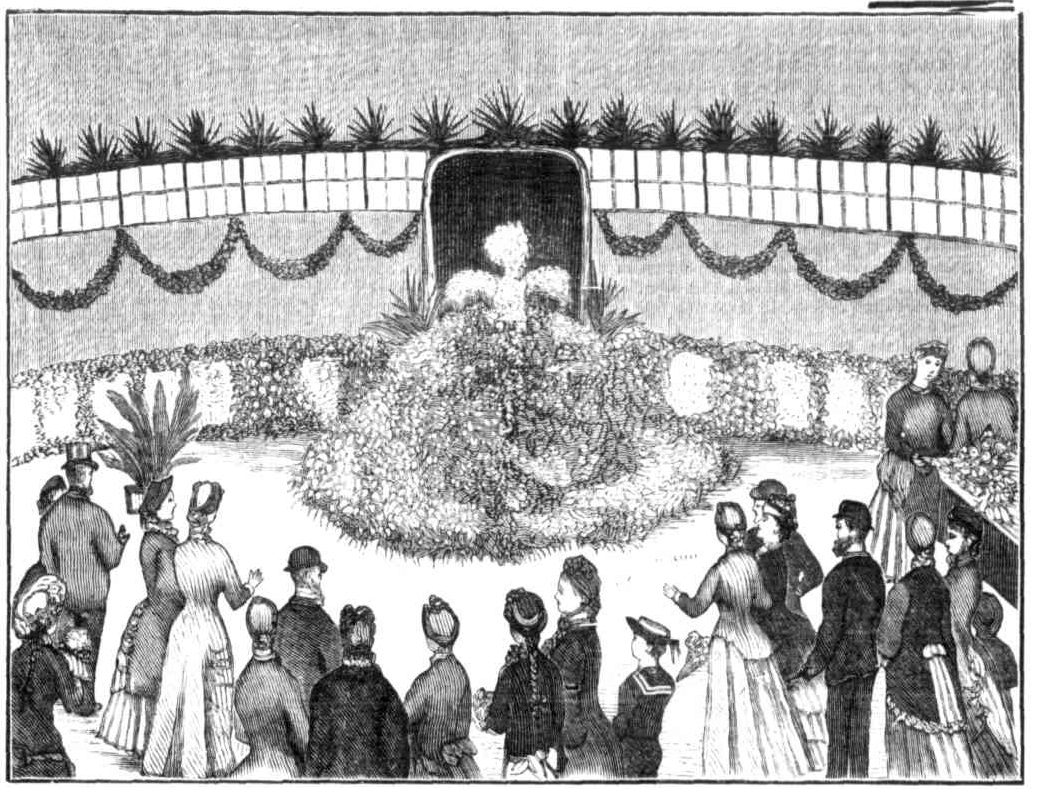
SKETCHES AT THE MANLY FLOWER SHOW.
forget-me-not, and blue flowers. A bridal wreath, some very pretty bouquets, and flower baskets, where among the other exhibits. In the next stall, Mrs. George Smith had s very beautiful anchor worked in violet and white blossoms, and at the back of the many pretty bouquets on the stall was a rockery. Meadames Robey and Tedd had a very abundant display of bouquets, many of which were worked fancifully with stars and crosses. Here also was certainly the most perfect plant of the white wild rose m the hall. A handsome basket was worked in pink roses, spider flower, and lilipilli. At the back of the stall was very elaborately worked design in leaves and flowers bearing the Irish welcome. Mesdam.es Christian and Doddemead had a very neat fanner arrangement of wild flowers and some very large floral 'fl baskets. They, too, were the envied possessors of a quantity of white clematis, difficult to get so early in the season. A fine Prince of Wales feather in flowers was also a noticeable feature of this stall. Miss Smith had a novelty in the way of a Persian carpet in native roses, with a Prince of Wales feather embossed on it in small white flowers. Miss Stubbs showed a very fine bridal bouquet, indeed so fine that it found a purchaser at a guinea. A heart worked in native roses and native may and fringed with fern leaves, a harp whose strings were beaded with golden-hued blossoms, and other pretty devices were among her exhibits. Miss M'Keown had some Very nice flowers, and next to her stall was that of the school children of Manly, presided over by Miss Bardsley. The young people had succeeded in gathering a goodly quantity of flowers, and some of them showed a little taste in their arrangement. Some beautiful clusters of waratah were conspicuous. Miss Woods' stall had many flowers, and a model of the steamer Brighton framed in leaves and blossoms was a prominent exhibit.
During the greater part of Saturday there was a constant stream of visitors going to and from the pier at Manly and Ivanhoe Park. The steamers carried between 4000 and 5000 persons to the watering-place, and it is hardly necessary to say that the pavilion which had been made attractive with its wealth of flowers and so instructive with floral designs, was thronged throughout the afternoon. Among the visitors to the show were the Premier, (the Hon. Alexander Stuart), the Hon. L. E. Cohen, the Hon. F. A. Wright, Sir John Robertson, Sir Alfred Roberts, and his Honor Mr. Justice Windeyer.
Between 5 and 6 o'clock the crowd began to thin and the stallholders commenced to illuminate their stalls for the evening exhibition, which was also largely patronised. The illumination of the main building was accomplished with patent portable gas and coloured lights, whilst a number of Chinese lanterns were suspended in the Rotunda. The scene was very charming. We understand that the Port Jackson Steamship Company have promised that they will give to the church building fund 50 per cent, of the receipts in excess of the ordinary traffic.
According to special arrangements, made at the instigation of Mr. John Woods, the native flower show was reopened on Tuesday, for the purpose of raising funds to assist the movement in aid of the widow and family of the late Captain Moreton.During the day additional steamers were put on by the Port Jackson Steamboat Company, and all necessary steps were taken to provide for the speedy transport and convenience of passengers. The flowers were fresh gathered for the occasion, and, as was fully anticipated, some hundreds of persons took the last opportunity offered of visiting the show. The show was closed at 10 o'clock at night, when the proceeds were found to be most satisfactory. The net proceeds of the day are expected to add £150 to the widow's fund. Manly has made the wild flower-show an institution of (he land. Is there anything else Manly can do ? There is indeed much, very much, if the people were fully worthy of the place. Old-world travellers have looked down from the peninsula upon that narrow sand neck between two seas, the satin robes, the harbour within, and the unwoven wool or the wild sea fleece without upon the point beyond point of the seaboard : noon the lakelets, each, as the eye of divinity, fringed with the forest skirts : and have said out of fall hearts and broad understanding, ?' There is no fairer spot in all the world;' but then, most bitter supplement, 'Nor a place with great opportunities so utterly neglected.' Has Manly aught besides wild flowers? As well ask has heaven aught betide the moon.
Manly has many delights, each as effectually buried as were the true beauties of the wild flowers a couple of years ago. Let us imagine Manly as it might be : with a perfect garden from 'sea to sea ; with a well-made drive about all that peninsula which is not surrendered to quarantine ; with those little lakes along the northern coast, approachable by railway, each made merry by half a dozen toy steamboat*, and with quaint pagodas about all their shores ; with a great sea field fenced against sharks, but free to all who would conform to simple rules to frolic or to swim ; and with another enclosure for those who loved better to roll in the foamy billows of the open sea. '. Manly with half-a-dozen wharfs, and as many Brightens and Fairlights up and down, and a railway running from the city a dozen times a day : that is the Manly which will certainly be a hundred years hence, which might be in the next decade, which should be now. Show of Wild Flowers at Manly. (1883, September 22). The Sydney Mail and New South Wales Advertiser (NSW : 1871 - 1912), p. 545. Retrieved from http://nla.gov.au/nla.news-article162027920
Deputations.
THE FAIRLIGHT ESTATE AT MANLY.
Yesterday Sir John Robertson received a deputation from Manly, consisting of Mr. J. J. Lough. (Mayor) and Aldermen Pitt, Hayes, Small, and Mr. Wagstaff, Council Clerk. The object of the deputation was to ask that the reservation of 100ft above high water-mark opposite the Fairlight Estate might be dedicated to the council for a recreation ground, and vested in the trustees of the oilier recreation reserves. Mr. Woods, the owner of the Fairlight Estate, who claims the 100ft as part of the grant to his predeceasor in circumstances of the case, and the action taken by the Municipal Council and what transpired at the recent public meeting with reference to the strip of land in question. Mr. Woods stated that he was willing to give a sufficient reserve, but not bind himself to a hard and fast line of 100ft. Sir John Robertson explained that the Governor and Executive Council had no power to put the reservation in force, but there hadj never been a case where all of a reservation had been taken back by the Government. All he could do was to follow the law. When Mr 'Woods application for the rescission of the reservation ... anyone could...objection. The deputation and anyone's ... considered, and he would then give his decision. Deputations. (1882, July 29). Evening News (Sydney, NSW : 1869 - 1931), p. 4. Retrieved from http://nla.gov.au/nla.news-article108203690
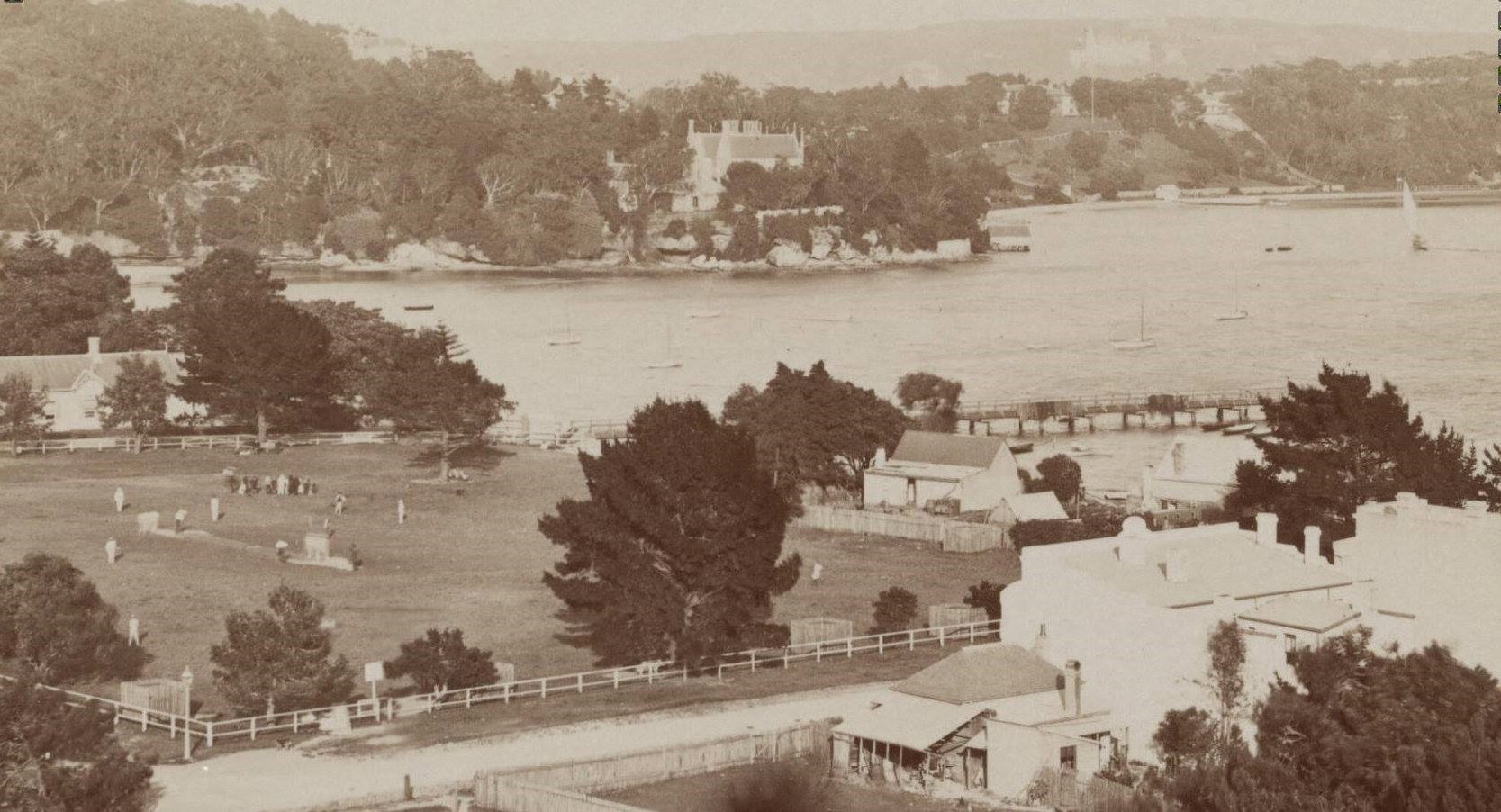
View over a cricket match towards Fairlight House and Cardinals Palace, Manly. Courtesy National Library of Australia, 1895, by Charles Bayliss, from http://nla.gov.au/nla.obj-141507260. Zoomed in to show detail. NB: Author of page has 'flipped' this plate glass photo as digitised by NLA to show correct position of Cardinal's Palace setting on hill in distance.
Advocate for transport - he was a prolific letter writer, many examples available through TROVE:
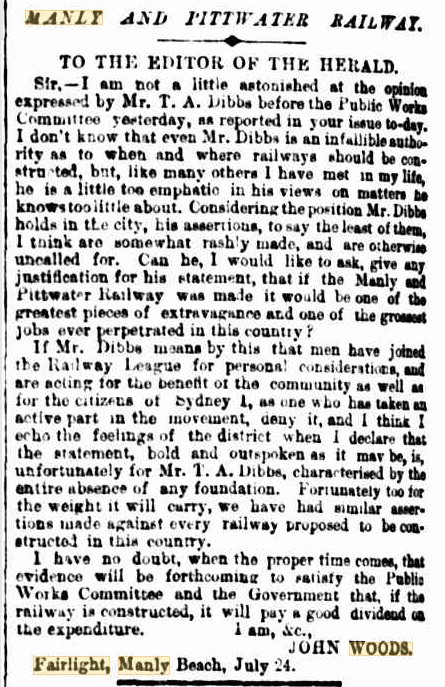
MANLY AND PITTWATER RAILWAY. (1890, July 25). The Sydney Morning Herald (NSW : 1842 - 1954), p. 6. Retrieved from http://nla.gov.au/nla.news-article13790324
ACCIDENT TO MR. JOHN WOODS.
The many friends of this gentleman will regret to learn that while at the Camperdown horse sales yesterday ho was struck by a young unbroken colt so severely that several of his ribs were fractured, and it will be some days before he will be about again. Mr. Woods is confined to bis bod at his residence, Fairlight, Manly, and is receiving every care from his family and medical attention from Dr. Watkins. ACCIDENT TO MR. JOHN WOODS. (1895, February 27). The Australian Star (Sydney, NSW : 1887 - 1909), p. 3. Retrieved from http://nla.gov.au/nla.news-article227117211
Mr. John Woods, of ' Fairlight,' Manly, celebrated the 70th anniversary of his birth on Anniversary Day. It is 50 years since Mr. Woods came to Australia, and in that time he has played many useful parts, having for some time been a City Alderman and Mayor of Sydney. He is still vigorous for his age, and takes an active interest in every movement which needs his aid. PERSONAL. (1899, February 4). Freeman's Journal (Sydney, NSW : 1850 - 1932), p. 17. Retrieved from http://nla.gov.au/nla.news-article111079751
'Many happy returns' to-day to Mr. John Woods,, of Fairlight, Manly, born January 26, 1828. PERSONAL (1902, January 26). Sunday Times (Sydney, NSW : 1895 - 1930), p. 7. Retrieved from http://nla.gov.au/nla.news-article126429514
BIFFIN At Fairlight, Manly, Mrs. Mary Ann Biffin, aged 88 years (for 35 years the faithful servant of Mr. John Woods). Family Notices (1902, November 25). The Sydney Morning Herald (NSW : 1842 - 1954), p. 1. Retrieved from http://nla.gov.au/nla.news-article14517245
Death: WOODS JOHN 9964/1904 parents: MOSES NELLIE registered at MANLY
DEATHS.
WOODS.— July 13, at his residence, Leona, Manly. John Woods, aged 76. Family Notices (1904, July 14). The Australian Star (Sydney, NSW : 1887 - 1909), p. 4 (FIRST EDITION). Retrieved from http://nla.gov.au/nla.news-article228255889
PERSONAL.
One of Sydney's oldest residents, in the person of Mr. John Woods, passed away yesterday at his residence, Leona, Manly. The deceased some time ago was seized with a paralytic fit, from which he partially re-covered, but a few weeks after convalescence he received serious injuries through being thrown from his carriage, the effects of which hastened his end. Mr. Woods was a native of Ireland, having been born at Castleblayney. In the county of Monaghan, In 1828. He arrived with his wife in Sydney in 1853, where he commenced business as a contractor and carrier. One of his first contracts was the cartage of the rails from Sydney Cove to Redfern for the railway then starting to Parramatta. He took up his residence in Manly 37 years ago, and was regarded as the pioneer of the village. In conjunction with Messrs., R. M. Pitt and C. H. Hayes and a few more of the local residents, he planted at his own expense the pine trees on the Ocean Beach Reserve, now one of the features of Manly., He filled the office of Mayor of Sydney, and until the readjustment of the electoral districts acted as returning officer for Warringah. He was also a director of many companies, including the Port Jackson Co-operative Steamship Company (acting as chairman for some years), Messrs. Pitt, Son, and Badgery, the Manly Gaslight Company, Wright, Heaton, and Co., the Victory Gold Mine, and the old Sydney Tramways and Omnibus Company. He was interested in cattle runs in Queensland, where he suffered losses by last year's drought. His family consisted of nine children. His third eldest is the well-known captain of Somersetshire County Cricket Cub, S. M. J. Woods. Another son is Harris Woods, adjutant in the Irish Rifles, returning officer for the Middle Harbour electorate, and captain of the Manly Cricket Club. Last year the deceased gentleman celebrated his golden wedding at his Manly residence. The function was attended by all his descendants., The funeral leaves his house for the Manly Cemetery at 3 o'clock to-day. PERSONAL. (1904, July 14). The Sydney Morning Herald (NSW : 1842 - 1954), p. 7. Retrieved from http://nla.gov.au/nla.news-article14648175
Death of Mr- John Woods.
Mr. John Woods, a well-known business man of this city, died At Manly last week. The deceased some time ago was seized with a paralytic fit, from which he partially recovered, but a few weeks after convalescence he received serious injuries through being thrown from his carriage, the effects of which hastened his end. Mr. Woods was a native of Ireland, having been horn at Castleblayney, in the county of Monaghan, in 1828. He arrived with his wife in Sydney in 1853, where he commenced business as a contractor and carrier. One of his first contracts was the cartage of the rails from Sydney Cove to Redfern for the railway then starting to Parramatta.
He took up his residence in Manly 37 years ago, and was regarded as the pioneer of the village. In conjunction with Messrs. R. M. Pitt and C. H. Hayes and a few more of the local residents, he planted at his own expense the pine trees on the Ocean Beach Reserve, now one of the features of Manly. He filled the office of Mayor of Sydney, and until the readjustment of the electoral districts acted as returning officer for Warringah. He was also a director of many companies, including the Port Jackson Cooperative Steamship Company ('acting as chairman for some years), Messrs. Pitt, Son, and Badgery, the Manly Gaslight Company. Wright. Heaton, and Co., the Victory Gold Mine, and the old Sydney Tramways and Omnibus Company. He was interested in cattle runs in Queensland, where he suffered losses by last year's drought. His family consisted of nine children. His third eldest is the well-known captain of Somersetshire County Cricket Club, S. M. J. Woods. Another son is Harris Woods, adjutant in the Irish Rifles, returning officer for the Middle Harbour electorate, and captain of the Manly Cricket Club. Last year the deceased gentleman celebrated his golden wedding at his Manly residence. The function was attended by all his descendants.
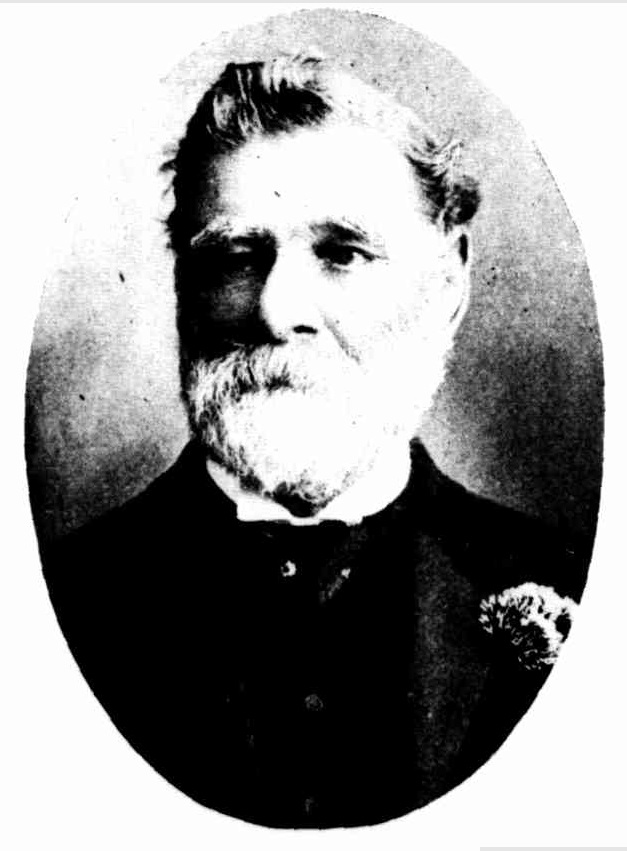
Photo, by Talma, 374 George-street. LATE JOHN WOODS.
Death of Mr. John Woods. (1904, July 20). The Sydney Mail and New South Wales Advertiser (NSW : 1871 - 1912), p. 161. Retrieved from http://nla.gov.au/nla.news-article164909524
THE LATE MR. JOHN WOODS.
The funeral of the late Mr. John Woods took place at Manly yesterday afternoon. There was a large attendance, the cortege being over half a mile long. The coffin was covered with wreaths of white flowers, and the private cartilage of the deceased gentleman followed the hoarse, also loaded with beautiful floral designs. The interment took place in the Church of England portion of the cemetery, the Rev. J. F. Blair reading the service, after which the Rev. J. Anderson Gardiner delivered an address on the life-work of the. deceased. Messrs. Harris I and Cameron Woods, sons, and Mr. J. A. Dean, son-in-law, acted as chief mourners. Amongst those present were the Mayor, aldermen, and council-clerk of Manly, Messrs. M. W. Webb, C.M.G., J. J. Calvert. Geo. Miller, W. H. Sraellic, C. H. Hayes, W. H. Fletcher, H. S. Bailgery, J. P. Wright, John Young, J. Falorson, Alex. Dean, \V: M. Felion, S. E. Sadler, G. S. Littlojohn, J. M. Paxton, W. J. Gillies, F. Browne, Colonel Strong, Captain Downie, Captain Hart, Dr. Thomas, Dr. Harvey, Messrs. J. H. Burns, W. II. German, J. D. German, It. Luckhnm, E. Ridge, II. Hudson. T. Weilderburu, F. Hunt, W. ICil-minster, J. E. Butler, A. Learmonth, I. Pope, J. Bonner, A. Forsyth, J. J. Lough. H. E. Steven-sou, F. P. Tompson. J. Hanson, J, Eccles, Major J. Ramlal Carey, Messrs. J. Simpson, G, L. Rieliardson, G. U. Hosking. W. Rosenthal. J. Roche, and Jas, Marks.
Floral tributes were sent by the Woods family, Mr. and Mrs. C. G. Woods, Mr. E. Resell, the employees of the Riverstone Meat Company, Messrs. C. R. Austin. H. T. Robey, T. Richards, Wright, Heaton, and Co., Port Jackson Co-operative Steamship Company, Manly Municipal Council, employees of the Port Jackson Co-operative Steamship Company, the Mayor of Manly, Mr. E. W. Quirk, M.L.A., Messrs. John Pope. N. Pope, Dr L I Watson Harvey, W. H. Slicnstonc, Manly Cricket Club, tho directors ot the Manly Gaslight Company, Mr. C, A. Laurence, the Manly Football ' Club, Pitt, Son, and Badgery, Messrs. W. G Parish, J. Simpson, Mrs. Kilminster, Mrs. Dunmore Lang, Mrs. Kirk, Mr. Jas. Marks, Miss Marks, and many others.
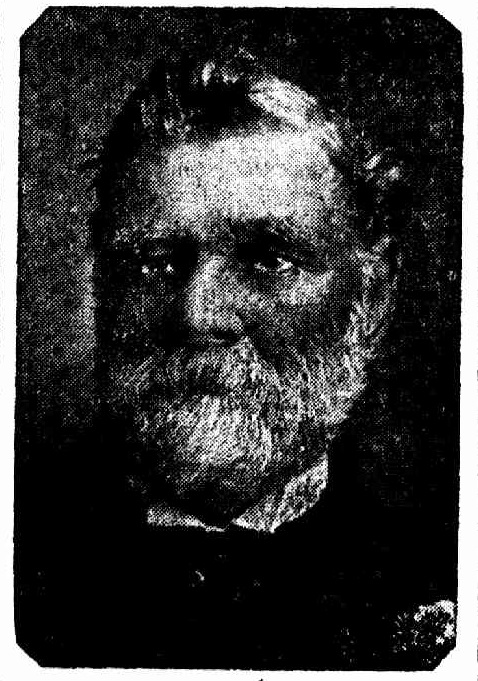
(Photo- Talma.)
THE LATE MR. JOHN WOODS. (1904, July 15). The Daily Telegraph (Sydney, NSW : 1883 - 1930), p. 5. Retrieved from http://nla.gov.au/nla.news-article236890573
DEATH OF AN OLD SYDNEY IDENTITY.
On Monday last there died at Chapel street Kogarah, an old Sydney identity, in the person of Mrs. Margaret Woods, relict of John Woods, of Fairlight, Manly, aged 80 years. John Woods was a well known citizen of many years standing, and. a useful one at that. He. was a contractor from the mid-fifties in the carrying line and one of the founders of the old firm of Woods, Shortland and Company, and of the Omnibus Company, which flourished prior to the invasion of the steam motor. Betty McMahon was in these combinations, and held on to the good things. Mr. Woods also took a prominent 'part in civic life, and was Mayor in 1885. He died at Fairlight: about ten years ago, A son became noted in England aa a cricketer, and is the husband of Maud Fitz Stubbs, the well known musician. DEATH OF AN OLD SYDNEY IDENTITY. (1913, July 13). Truth (Sydney, NSW : 1894 - 1954), p. 9. Retrieved from http://nla.gov.au/nla.news-article168746406
A BIG ESTATE.
The Late Mr. John Woods. BEQUESTS UNDER HIS WILL
The will of the late Mr. John Woods, of Manly, has been lodged for probate. The value of the estate Is set down at £20,832. The testator appoints his sons, John and Harris Dunmore Lang woods, his sons-in-law, John Adam Dean, builder, of Castlereagh-street, and Frederick William Browne, of Messrs. Wright, Beaton and Co., Limited, trustees and executors of the estate. The deceased bequeaths his household furniture, pictures, plate. &c., to his wife during her widowhood, and the whole of his real and personal estate Is devised to the trustees upon Trust. (The trustees are empowered to register In the name of Harris Dunmore Lang Woods a sufficient number of shares In Wright, Heaton and Co., Ltd., to qualify him as a Director of the firm. Out of the income of the residuary estate an annuity of £26 is bequeathed to Valentine Woods, and another Of £400 or more, as the trustees think fit, to Mrs. Woods, during her widowhood. The remainder of the Income Is to accumulate during Mrs. Woods' widowhood, or until 20 years after the testator's death, whichever may be the shorter period, when It Is to be paid to the residuary estate on the death or the marriage of the widow. A BIG ESTATE. (1904, September 12). The Australian Star (Sydney, NSW : 1887 - 1909), p. 5 (FIRST EDITION). Retrieved from http://nla.gov.au/nla.news-article228261153
£400 pounds in 1904 translates to around $52,860.00 in 2018 - relative income value of that income or wealth is $433,000.00 relative output value of that income or wealth is $2,740,000.00. Average pension paid in 2019 is approximately $24,081 per year - Single: $926.20 per fortnight - so more than enough for tea and toast!
STORIES TOLD OF SAMMY WOODS.
S. M. J. Woods, one of the Woods, boys of Manly, was sent by his father, the late Mr. John Woods, to school in England in company with his brother, the late Mr. Harris D. L. Woods. Sammy went to Cambridge University and made a tremendous reputation as a cricketer and Rugby Union footballer. As a youngster he was invited to play for Australia against England in a Test match at Home. And he represented England in many Rugger Internationals, it being generally admitted that he was one of the greatest forwards of all time. Here follow some G. L. Jessop stories of the inimitable Sammy, who, by the way is an uncle of Mr. Val Woods, of the Waverley District Cricket Club. ''It was the first time I had the pleasure of playing under the leadership of Sam Woods, and a more inspiring leader I could not wish for. Sam was a great personality in the cricket world long before I emerged from the obscurity of club cricket. And to me he was almost as much a hero as the old man himself. …. TIT BITS in SPORT (1922, September 15). Arrow (Sydney, NSW : 1916 - 1933), p. 12. Retrieved from http://nla.gov.au/nla.news-article103446006
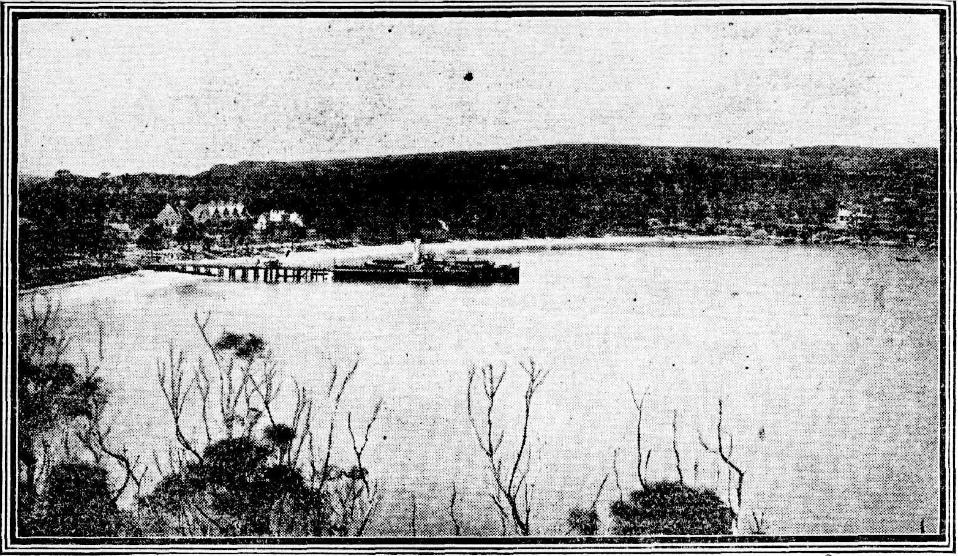
MANLY AS IT WAS NEARLY 40 YEARS . AGO THE STEAMER FAIRLIGHT AT THE WHARF.

MANLY AS IT IS 'TO-DAY, TAKEN, FROM ALMOST .THE SAME POINT.
MANLY'S HISTORY.
THE FIRST SETTLERS.
It ought to be interesting to modern Manlyites to know that Manly was an Island, and how it got its name from the behaviour of the natives. It was at Manly Beach that Governor Phillip made his first landing In Port Jackson. A blackfellow threw a spear at him, and his birthplace won a compliment. On another visit two or three years later another spear was thrown; it went through. Phillip's shoulder- this time, just above the collarbone; Phillip did not even trouble, to 'mention the incident in his despatches.
MANLY AN ISLAND.
In those day a stream ran through from the southern end at the ocean beach into the harbor waters ; it ran so strongly that now and then a schooner from the Hawkesbury was able to take a short cut. through. All the level ground was covered with dense ti-tree scrub, and wallaby and kangaroos were plentiful in spite of the consistent attacks of the blacks. Manly must have been even more beautiful then than it is now, early Governors used to travel this way round to Newport and Pittwater. But the only, residents were the blacks In the scrub. Sydney people came over on shooting and fishing expedition.
The first white settlers are said to have been the Pickerings. Soon after followed the Whalans. But the first actual developmental work was under taken, by Mr. Henry Gilbert Smith, who secured nearly the whole of what Is now the town of Manly, and set to work to subdivide and build, an interview with Manly's oldest resident, Mr. Badmington, who used to work for him. Mr. Smith put up the Pier, Steyne, and Clarendon Hotels, and many stone cottages, still standing on the Steyne and Tower hill. Manly's development was a good deal blocked, how ever, by the difficulty of communication with Sydney. The Parramatta River Company ran boats, but not too regularly, and these boats were not built for heavy weather in any case.
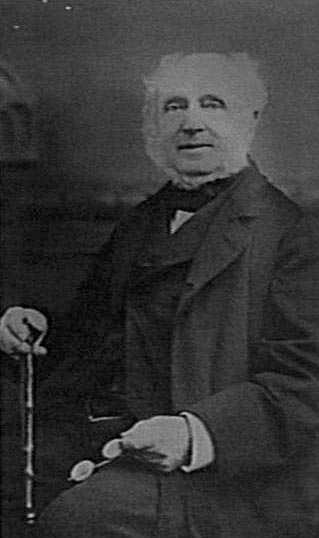
Henry Gilbert Smith - NSW Parliament records, courtesy NSW Records & Archives.
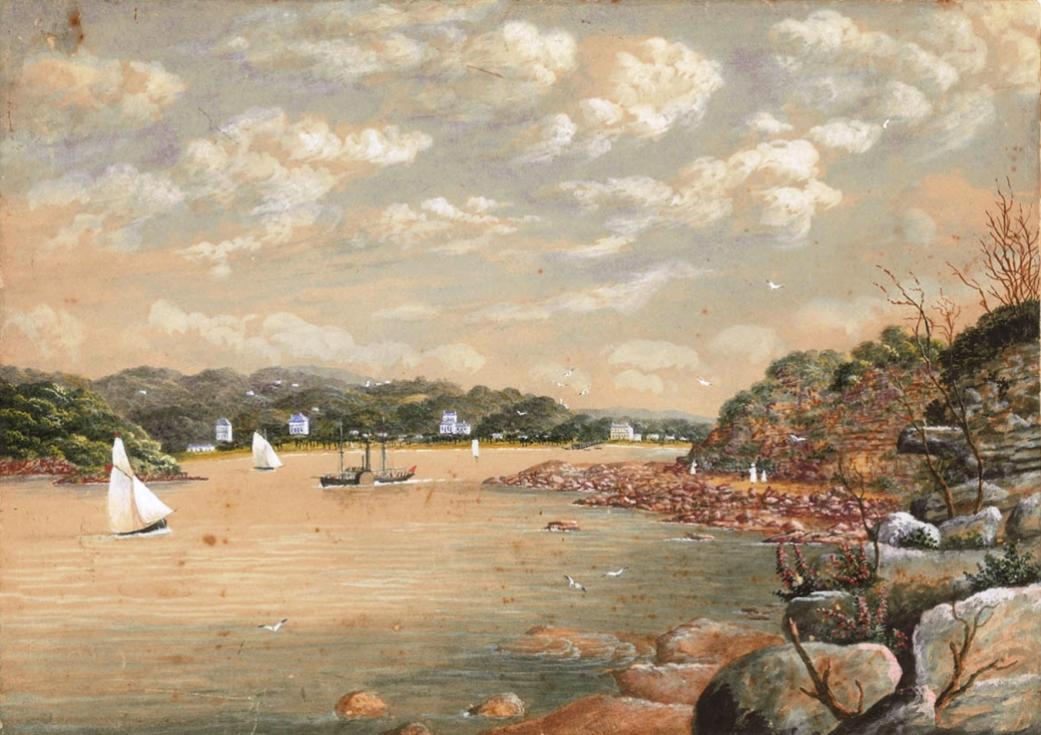
BIRTH OF THE MUNICIPALITY.
Real progress began with the birth of the municipality In 1877; it is said that the Idea of Incorporation first came up at a wallaby hunt. Since that time Manly's. progress has been in a long line of gradual ascent, with little ups and downs In it here and there, and a steep shoot upwards in tho last 10 years or less. But even In the late seventies the place was practically a village with one terrace of houses to the right of the quay; the rest was mainly open paddocks and bush. The return fare to Sydney was In those days 2/, though in about 1880 it was reduced to 1/6, and If as many as 200 people came over it was reckoned a big crowd. But there was nothing but the open beaches for visitors when they did come, and surfing was not then a craze. Nowadays, you can see 10,000 to 12,000 people on the South Steyne Beach at any week-end, and of an ordinary summer morning from 3000 to 6000 are in the surf by 6 o'clock.
RECENT PROSPERITY.
Manly's progress In the last ten or fifteen years,, and especially, in the last five or six, . has been something quite out of the common. In population, in number of houses. In wealth and land values, and In the size. and. Importance of the buildings put up, a wonderful growth is shown. Building cannot keep within 50 per cent, of the demand. Twenty years ago there were 560 houses in Manly; now there are 2270. The number of houses, that is, has about quadrupled in the last 20 years. and there has been of late a steady Increase at the rate of over 200 a year. The population has quadrupled in 10 or 11 years. In 1901 there were 2200 people in Manly proper; last-year the number had grown to 10,800. Or, take the in creases in values. Back in 1896 the municipal council's Income was £2400. In 1902 It was over , £7800. Last year It was £21,000. In 10 years; that Is, it has almost trebled;. The assessed annual value of Manly's property has gone from under £78,000 in 1908 to nearly £148,000 in 1912; that is. It has more than doubled In four years. In tho last two years the unimproved capital value has increased from about £690,000 to over - a million, and its improved - capital value from under 1/2 millions to over— well over — two millions. MANLY'S HISTORY. (1913, January 13). The Daily Telegraph (Sydney, NSW : 1883 - 1930), p. 4. Retrieved from http://nla.gov.au/nla.news-article238613390
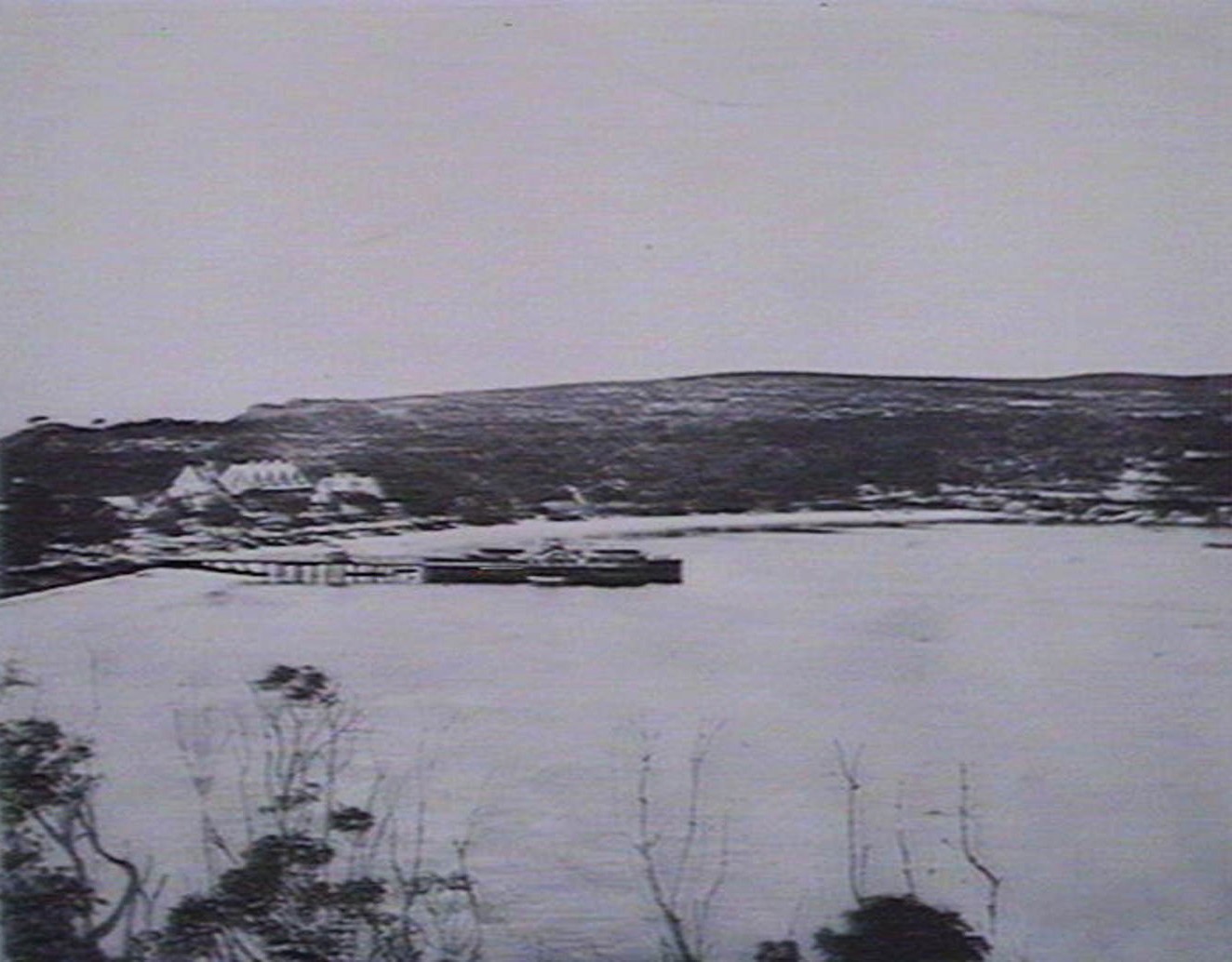
Manly Ferry P.S "Fairlight", June 1878 - Image No: Digital order no:d1_19847, from From NSW Govt Printer series - Ferries, courtesy State Library of New South Wales.
